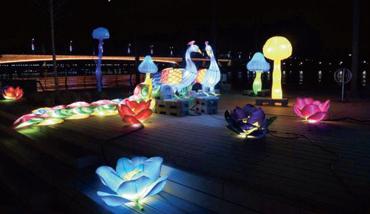





















































Professor




SOICHIRO “SWIMMY” MINAMI, JAPANESE


Artistic Director of the Ballet of the National Theatre
Ambassador


EDITOR IN CHIEF: Neda Lukić n.lukic@aim.rs
DESIGN: Slađan Radosavljević Zoran Perović design@aim.rs
COPY EDITOR: Mark Pullen
TRANSLATION & EDITING: Pullen Editorial, Halifax
Representative

Composer,


“CorD - 21 Years of Independent Thought and Inspiration”
CONTRIBUTORS:
Ljubica Gojgić
Zoran Panović
Radmila Stanković
Maja Vukadinović
Mirjana Jovanović
Miša Brkić, Rob Dugdale
Steve MacKenzie
Zorica Todorović Mirković Sonja Ćirić, Miloš Belčević
PHOTOS: Zoran Petrović
SALES MANAGERS: Biljana Dević b.devic@aim.rs Mihailo Čučković m.cuckovic@aim.rs Jelena Petrović j.petrovic@aim.rs
OFFICE MANAGER: Svetlana Petrović s.petrovic@aim.rs
FINANCE: Dragana Skrobonja finance@aim.rs
CEO: Ana Novčić a.novcic@cordmagazine.com
PUBLISHER: Ivan Novčić i.novcic@aim.rs
PRINTING: Rotografika d.o.o. Segedinski put 72, Subotica
CorD is published by: alliance international media d.o.o.
Resavska 1/III, 11111 Belgrade 17, PAK 125806, Serbia Phone: +(381 11) 2450 508
E-mail: office@aim.rs office@cordmagazine.com www.cordmagazine.com www.aim.rs
ISSN no: 1451-7833
All rights reserved alliance international media 2025


13. Belgrade Irish Festival
6—17.3.25
Celebrating Irish culture annually in Serbia

By Zoran Panović
Amid the unfolding upheaval surrounding Trump’s return to the White House, mass Student-led protests have erupted in Serbia. The trigger was a tragedy at the Novi Sad railway station last November that claimed 15 lives and left two people severely injured

Donald Trump’s inauguration at the Capitol in Washington, D.C. was saturated with Christianity—there was a reference to Saint John, while a rabbi was present, but there were no Islamic clerics. There was glamour and evidence that the U.S. system is sometimes a veiled form of monarchy—America and the world both have their own Trumps. The ceremony paid homage to Johnny Cash and Martin Luther King Jr., but, on the whole, it was a clear response to the “liberal” opening of the Paris Olympics.
The majority of Serbia, which has supported Trump more than any other country in the region, naturally feels closer to the inauguration in Washington than to the performance in Paris. Serbian President Aleksandar Vučić is putting his hopes in the new American administration. Amid the unfolding upheaval surrounding Trump’s return to the White House, mass student-led protests have erupted in Serbia. The trigger was a tragedy at the Novi Sad railway station last Novem-
ber, which claimed 15 lives and left two people severely injured.
Vučić has sent a message to the “centres of power” in Zagreb, Sarajevo and Priština, saying that their hopes of changing the government in Serbia are in vain. But are these “centres of power” really stronger than Trump, Putin, Xi Jinping, Macron, Ursula von der Leyen, Donald Tusk, Giorgia Meloni… all of whom are claimed backers of the Serbian regime? So, which West is supposedly trying to overthrow Vučić’s government? Would it be the same West that would bring to power a government that would annul the deals Vučić made with the “collective West”?
Authoritarian regimes worldwide undeniably have the sympathies of Vučić’s loyalists, but are they also on the EU accession path? Yet, absurdity is the Serbian realityeven when propaganda-induced and coated with hypocrisy
And yet, Vučić insists that the West is conducting a “colour revolution” against Serbia. The so-called colour revolutions of the early 21st century led to regime changes in Kyrgyzstan, Georgia and Ukraine. This phenomenon is exclusive to the post-Soviet space, symbolising an attempt at pro-Western emancipation from Putin’s Russia. However, despite Putin’s popu-
larity in Serbia and Vulin’s Stalinist tribute, Serbia is officially on the path to EU accession, making the notion of a colour revolution in Serbia nothing short of absurd.
The absurdity continues: Lukashenko, the newly re-elected president of Belarus, claims that the protests against the governments of Belarus, Slovakia and Serbia are being coordinated and financed by the U.S. Meanwhile, the U.S.’s own Richard Grenell publicly expresses support for Vučić’s regime. Serbia has not yet established a “strategic partnership” with the U.S., but Vučić has certainly built one with Grenell. If not for Germany, Vučić and Hashim Thaçi might have divided Kosovo under Grenell’s mediation.
Trump’s biggest Serbian supporters had hoped Grenell would become Secretary of State, but Trump instead appointed him as his special envoy for strategic missions and policies towards hostile states, including Venezuela, whose president, Maduro, supports Vučić. Authoritarian regimes worldwide undeniably have the sympathies of Vučić’s loyalists, but are they also on the EU accession path? Yet, absurdity is the Serbian reality - even when propaganda-induced and coated with hypocrisy. There are EU leaders similar to Vučić, such as Viktor Orbán in Hungary and Robert Fico in Slovakia, but there is one key difference: unlike Vučić, their countries are both in the EU and NATO, and have no intention of withdrawing from them. They have also relinquished power and subsequently returned—just like Trump.

Conference Empowered Women 12/ 3/ 2025

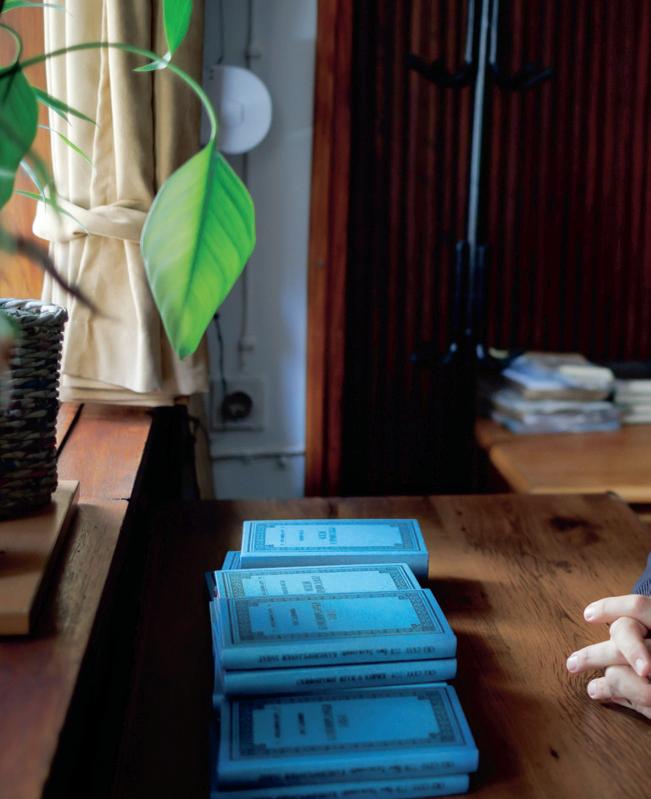


Milo Lompar Ph.D. professor of the University of
and
of
By Ljubica Gojgić
The regime hasn’t been confirmed as effective, libertarian or national, but rather as corrupt, authoritarian and anti-national. It’s as if the collapse of that canopy unveiled that characteristic of the administration and aroused a sense of justice among young people, and a sense of duty to follow their lead among their professors ~ Milo Lompar

Three months of intensive protests by students, with an ever-increasing number of citizens joining their ranks, prompted the biggest political crisis in Serbia for the last 13 years, leading to the collapse of the government of Prime Minister Miloš Vučević. And this student revolt could last even longer, until guarantees are provided that the case of the collapse of the Novi Sad railway station canopy will be resolved in accordance with the facts, says professor Milo Lompar in this interview for CorD Magazine. “Such guarantees cannot be given by those who are suspected. Hence the need for a transitional government as a guarantor that the media monopoly will be abolished, accurate voter lists will be determined and vi-
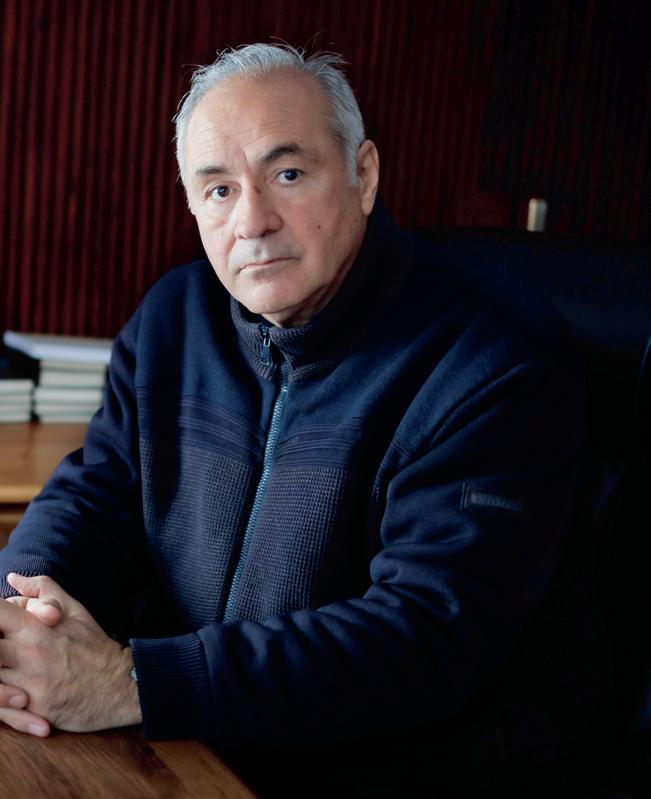
olence will be removed from political life.”
Professor Lompar, the blockading of colleges and student protests have been ongoing in all four of the country’s university cities for more than two months. How do you see this revolt among generations that have often been accused of being largely disinterested in social dialogue and politics?
— I have myself claimed repeatedly – like so many European intellectuals – that young people aren’t inheriting a sense for revolt, but rather for adaptation. That was long the case. But these protests have shown that young people have overcome their attitude of conformist consciousness. That might also be the case in other areas of Eu-

rope: such a possibility is indicated by both the yellow vests in France and the demonstrations in Germany. A struggle is unfolding between the people and the system, because the gap between them has become excessive. In our country, the fact that this student revolt – and the support they were long provided with by professors acting independently – is now spreading to other guilds is a result of the realisation that the regime has lost its national, democratic and pragmatic legitimacy. It hasn’t been confirmed as effective, libertarian or national, but rather as corrupt, authoritarian and anti-national. It’s as if the collapse of that canopy unveiled that characteristic of the regime and aroused a sense of justice among young people and a sense of duty to follow their lead among their teachers.

The protests have so far continued for almost three months. You insist that students and educators have been excessively overburdened and that others should have supported their protest. If half of citizens tell public opinion researchers that they rate the state of affairs in the country positively, do you believe it would be possible to implement a general strike?
— Public opinion research isn’t reliable, because the independence of these agencies is dubious. They have discredited themselves so many times with their assessments to date. A general strike might be reached gradually, as the chain of those who are protesting is growing: students are supported by a significant number of High Court judges; the Bar Association declared a solidarity strike, many citizens are protesting peacefully together with the students, while protests are unfolding in ever-more towns. In the case that this trend continues, a general strike would not be impossible. The irrational and irresponsible conduct of the Vučić-Brnabić regime – which offers negotiations and threatens students, which attempts to solve the problem using police and violence, which runs people down on the pavements and expresses condolences to their families – naturally leads to the growth of dissatisfaction. And dissatisfaction breeds revolt, which creates rebellion.
SNS, as the ruling party, has offered an advisory referendum on confidence in the President of Serbia as a possible way out of this worst political crisis since 2012, while the Prime Minister has said that he isn’t ruling out extraordinary elections and the opposition is advocating a transitional government. What do you see as a way out of this situation in which tensions are growing on a daily basis?
— The obliteration of public trust has been the key effect of the Vučić-Brnabić regime’s rule: they have developed the distrust of everyone towards everything over the years. And that’s
now coming for their heads, because no one believes them. It is thus essential that guarantees be given that the canopy case will be resolved in accordance with the facts. Such guarantees cannot be given by those who are suspected. Hence the need for a transitional government as a guarantor that the media monopoly will be abolished, accurate voter lists will be determined and violence will be removed from political life. It would have a conditional mandate: with no opportunity to make political decisions. And it would be limited in terms of duration and objective: the objective is regular elections, while the term duration would be from six months to a year.
Analysts have noted the deflection away from political parties as an important part of the student protests’ strategy. Is this the first time that the question of whether politi-
Protests have shown that young people have overcome their attitude of conformist consciousness. That might also be the case in other areas of Europe: such a possibility is indicated by both the yellow vests in France and the demonstrations in Germany. A struggle is unfolding between the people and the system, because the gap between them has become excessive
cal change can be achieved without political parties has been raised?
— The greatest contribution to the devaluing of the democratic order in our country has been provided by Western (American) factors. The destruction of the political system began with the confrontation with the government of Vojislav Koštunica in 2008, because it rejected the Ahtisaari plan that envisaged the international recognition of Kosovo. That’s how
Western (U.S.) policies led to the emergence of SNS. The best option for realising their political goals is a decomposed political system led by an authoritarian ruler. Russian and Chinese stakeholders had no affinity for the democratic order. Serbian culture lacked the strength required to preserve and improve it in the face of external pressures. Hence a situation that resembles that of Latin America. Political parties are essential to restore legitimacy to a bedrock of legality, as marked by the protests. They now appear weak, while the process itself remains uncertain.
You have proposed and engaged personally in unifying the national and urban oppositions. Can such cooperation, which was last seen in the year 2000, be repeated under today’s conditions?
— In the form of a government, this kind of cooperation existed in the period between 2004 and 2007, as the cohabitation of Koštunica and Tadić. That was democratic and the most solid government in our country, despite tough challenges. Cooperation between the national and urban oppositions is itself essential for creating the foundations for a social agreement on respect for the Constitution and the rule of law in our country. All subsequent issues, even the biggest political issues like that of Kosovo, must be resolved in accordance with that premise. If someone strives for extra-constitutional solutions, they must fight in a legal way for the Constitution to be amended.
The student protests are focused primarily on determining responsibility for the tragedy in Novi Sad, and subsequently for the violence against students, but one of their demands relates to budget allocations for education. What do you consider as being the biggest problems facing higher education in Serbia?
— Some of our difficulties are similar to those in other European countries: the targeted reduction of the
Political parties are essential to restore legitimacy to a bedrock of legality, as marked by the protests
Cooperation between the national and urban oppositions is itself essential for creating the foundations for a social agreement on respect for the Constitution and the rule of law in our country
The objective is regular elections, while the term duration f the transitional governmentwould be from six months to a year
space that belongs to social sciences; favouring pragmatic awareness; the domination of the imposed Bologna Process, which has obvious weaknesses. Some difficulties are the fruit of our weaknesses: a general decline in responsibility; weaker education in secondary schools; an excessive number of faculties and weak evaluation criteria; the general impoverishment of society; a lack of appreciation for quality in hiring workers.
Late last year saw the Government of Serbia attempt to create conditions for the arrival of foreign colleges in Serbia, under an accelerated procedure. In elucidating this move, it was argued that the possibility of studying at such colleges would encourage young people not to leave Serbia. The academic
community was also criticised for not being ready to handle competition. How did you perceive that initiative?
— When it comes to these matters, I declare myself as being devoid of personal ambition, as I will retire in two years. The outcome of that intention is the aspiration to gradually reduce the number of state faculties, because they are financed from the nationalbudget. It is a classic case of the reorganising of society with a view to the colonial model. That’s because secondary schools will also be divided in the same way: into private ones, which will be attended by those who can afford to pay, and state ones, which will be weaker and for poorer people. Given that professors will also go where salaries are better, high-quality teaching will also shift gradually to private
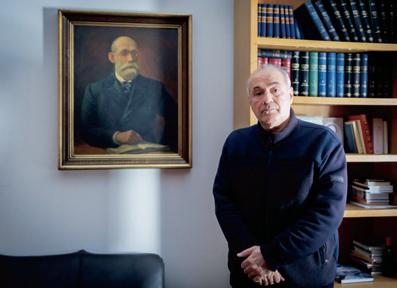
schools. There will be a prioritising of occupations that meet the need for manual labour. Highly qualified people will be directed towards working for foreign companies. An education system is being created to suit the society that’s emerging. That will be a society that has the following form: an authoritarian ruler, three oligarchies (financial, security, media) and an impoverished nation. The fundamental dismantling of the national and democratic state is being implemented. The consequences will be a shortage of doctors, professors and engineers, particularly in smaller towns. The brain drain will not be stopped.
The start of this year was marked by the changing of the president of the United States. Do you believe the claim that Donald Trump’s return could help Serbia in the dialogue on Kosovo?
— If we judge on the basis of the Washington Agreement (2020), which extended the seedlings of the Brussels Agreement (2013) and created a shift towards the Franco-German Plan (2023), we shouldn’t expect any major changes on the pathway laid. Pressure could mount on Serbia to recognise Kosovo internationally and on the Pristina authorities to form the Community of Serb Municipalities: within which the education and health services of the Serbian community would be implemented, under the Pristina administration. There might be some minimal shifting of the borders, both in the north of Kosovo and near Preševo in Serbia. I don’t believe that will happen, but it could. Everything else has already been undertaken and is unlikely to change: thanks to the disastrous policy of the Vučić-Brnabić regime.
Towards the end of Q1 2025, the citizens of Zrenjanin will gain access to safe, clean water, marking a significant milestone in improving the wellbeing of the community and setting a benchmark for sustainable water management around the region ~ Ahmed Hatem Almenhali
H.E. Ahmed Hatem Almenhali Ambassador of the United Arab Emirates to the Republic of Serbia
By Ljubica Gojgić
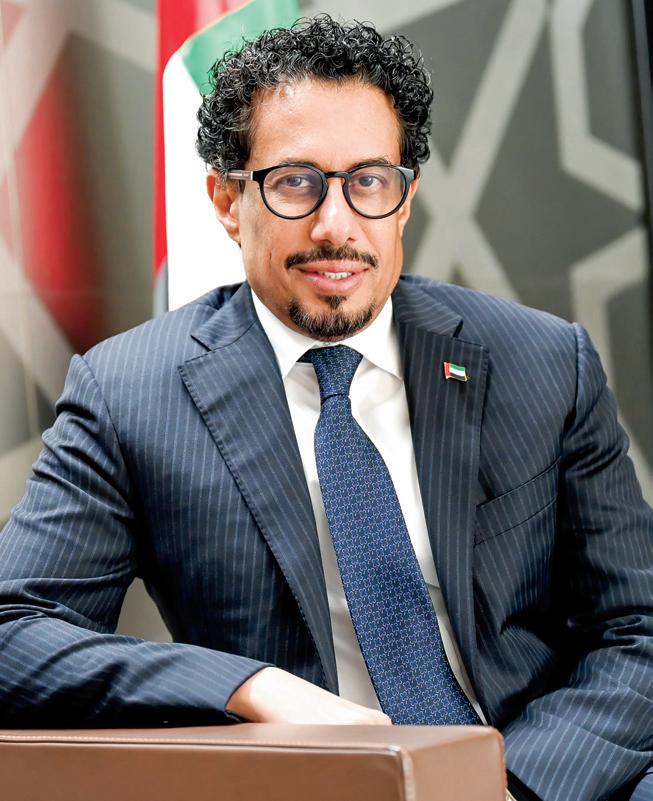
Over past decades, bilateral cooperation between UAE and Serbia, “especially in the economic sector, has witnessed remarkable progress and growth,” says Ambassador Ahmed Almenhali in this interview for CorD Magazine. He adds that one of his primary intentions during this mission is “to showcase the potential of the Serbian market to Emirati businesses”. Bilateral economic cooperations should also be strengthened by the Comprehensive Economic Partnership Agreement (CEPA), the implementation of which is expected in 2025.
Your Excellency, during the celebration of your country’s national holiday in December 2024, you spoke about the strong relations and exceptional strategic partnership between the UAE and Serbia. What do you consider as the most important component of this partnership today?
— For many years, the United Arab Emirates and the Republic of Serbia have committed to fostering their bilateral relations. Both sides enhance economic and political ties through a strategic approach, while promoting mutual cultural and social values. We can today affirm proudly that friendly relations between our two nations’ leaderships are at an all-time high, resulting in highly successful bilateral cooperation. This collaboration has witnessed remarkable progress and growth over the past decade, especially in the economic sector. We have seen substantial advances in institutional cooperation through numerous successfully implemented investment and trade projects. We have signed several bilateral agreements that create opportunities to further strengthen our relations. One of the most important agreements is the CEPA that was signed during last year’s official visit to Serbia of the UAE President, His Highness Sheikh Mohamed bin Zayed Al Nahyan.
What can we expect from the CEPA that was signed between the UAE and Serbia in October 2024?
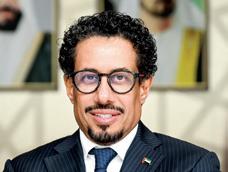
— The Comprehensive Economic Partnership Agreement (CEPA) that we signed in October 2024 demonstrates the strength of economic relations and mutual trust between our countries. A key aspect of this agreement is the reciprocal liberalisation of trade in goods, which I believe will encourage businesspeople to
We at the embassy are working diligently to provide comprehensive information to assist businesspeople from both countries in realising their business ideas and navigating any challenges they may face
capitalise on these incentives and actively explore opportunities on both markets. We expect the CEPA to ultimately spark a wave of economic opportunities built around digital and traditional trade. Goods traded by sea, land and air will enjoy faster, easier access, while unlocking the untapped potential of digital trade, cross-border data flows and blockchain. Both sides should ratify the agreement soon, leading to its implementation later in 2025. I am confident that our current trade exchange will grow and include many more participants in foreign trade within our business communities.
Economic statistics show that the UAE is an important creditor of
the Serbian economy, but that the volume of direct UAE investments in Serbia has been decreasing for years. Do you think that, in your capacity as ambassador to Serbia, you can increase the interest of UAE companies in business ventures in Serbia?
— Interest in investment projects in Serbia has remained strong throughout all these years, with companies from the United Arab Emirates actively exploring opportunities for further outlay. One of my primary intentions during this mission is to showcase the potential of the Serbian market to Emirati businesses. Similarly, I promote investment opportunities and an attractive business environment in the UAE and highlight the Emirati market’s potential for Serbian entrepreneurs. Additionally, we at the embassy are working diligently to provide comprehensive information to assist businesspeople from both countries in realising their business ideas and navigating any challenges they may face.
You have stated that you hope to improve bilateral cooperation in areas like renewable energy, agriculture and tourism. Can we speak at this point about any specific projects in these fields?
— The UAE has made significant strides in enhancing bilateral cooperation with Serbia, particularly in renewable energy and agriculture. In the renewable energy sector, Masdar inaugurated the Čibuk 1 wind farm in October 2019, which represents the largest operating utility-scale wind project in Serbia and the Western Balkans, with a capacity of 158 megawatts (MW). Building on this success, Masdar secured funding for the 154 MW Čibuk 2 wind farm in September 2024 and is currently progressing on the construction of the wind farm that is set to become operational in 2026 as well as the development of both solar and wind projects in the country, further solidifying the UAE’s commitment to Serbia’s clean energy transition.
We expect the CEPA to ultimately spark a wave of economic opportunities built around digital and traditional trade
In the agriculture sector, the Al Dahra Group has made substantial investments in Serbia since 2018. This company acquired the agricultural assets of the PKB Corporation and its subsidiaries for approximately €150 million, while it has additionally invested approximately €100 million in Al Dahra Serbia to upgrade the assets and improve performance. Al Dahra Serbia currently cultivates more than 20,000 hectares, producing a range of grains and speciality crops, in addition to the dairy business. Al Dahra Group is exploring further expansion opportunities globally, including in Serbia. The investments made by the Al Dahra Group not only strengthen our bilateral ties, but also contribute significantly to Serbia’s agriculture sector and food security efforts.
The Serbian government is launching a new investment cycle linked to Expo 2027, with great ambition. Do you see this as an opportunity for UAE companies?
— Based on our experience organising Expo 2020, Serbia stands to gain numerous benefits from the Specialised Expo 2027 project. Events of this nature contribute significantly to a country’s economic growth and development. Hosting an expo presents an excellent opportunity for investment partnerships with nations across the globe. All industries involved in such a project inevitably experience integration and the adoption of new technologies and modern solutions, which further strengthens the host country’s economy. The experiences of project partners provide valuable lessons and insights. I am confident that companies from the UAE that participated in Expo 2020 will have much to offer Serbia for this initia-
I am confident that our current trade exchange will grow and include many more participants in foreign trade within our business communities
One of my primary intentions during this mission is to showcase the potential of the Serbian market to Emirati businesses
tive. This major undertaking creates countless opportunities for collaboration between our two countries in infrastructure, real estate development and tourism in particular.
The completion of one project associated with the UAE is eagerly awaited: the water treatment plant in Zrenjanin, which is managed by UAE company Metito. What is the current status of works at this location?
— Metito Utilities, a UAE-based investor, developer, operator of sustainable water management solutions and
Based on our experience organising Expo 2020, Serbia stands to gain numerous benefits from the Specialised Expo 2027 project
climate-resilient assets, remains fully committed to delivering a sustainable solution to this long-standing issue. We expect this project to improve the lives of the Zrenjanin community significantly and to impact Serbia’s water sector positively. Serbia is the first market in Central and Southeast Europe where Metito Utilities has invested more than €50 million. This reflects the country’s strategic location, progressive leadership, skilled workforce and stable economy, creating a favourable environment for sustainable growth. The project leverages global expertise and advanced technologies to deliver clean, safe drinking water.
Towards the end of Q1 2025, citizens of Zrenjanin will gain access to safe, clean water, marking a significant milestone in improving the wellbeing of the community and setting a benchmark for sustainable water management around the region.


Student protests have erupted across Serbia following a deadly railway station collapse in Novi Sad, which exposed corruption and poor construction practices. Students demand accountability, reforms, and justice for the 15 victims, with widespread support from unions, schools, and cultural institutions. While prosecutors have charged 13 individuals, including a former minister, skepticism about the investigation persists. President Aleksandar Vučić has faced criticism for counter-rallies and accusations of constitutional overreach, with his administration alleging foreign interference. The European Students’ Union has called for protecting protesters’ rights, emphasizing the need for transparency and systemic change in Serbia.
“No one is safe until everyone is safe”
Erna Solberg former Prime Minister of Norway
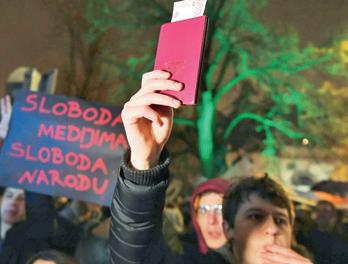

Global billionaires’ wealth grew by $2 trillion in 2024, increasing three times faster than in 2023, according to a report by Oxfam. The world is on track to see five trillionaires within a decade, while 44% of the population—around 3.6 billion people— lives in poverty, with one in ten women in extreme poverty earning less than $2.15 a day.
Nigeria has officially joined BRICS as a partner nation, announced Brazil’s Ministry of Foreign Affairs, which currently presides over the bloc. Formed in 2009 by Brazil, Russia, India, and China, with South Africa joining in 2010, BRICS recently expanded to include Iran, Egypt, Ethiopia, and the UAE. Nigeria now becomes the ninth partner country, joining nations like Belarus, Bolivia, and Kazakhstan in this status.
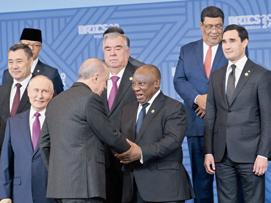

“The West faces a crucial challenge: not to become a society divided into two classes”
Pedro Sánchez Prime Minister of Spain
In a historic return to the White House, Donald Trump was inaugurated as the 47th President of the United States on 20 January 2025. The ceremony, traditionally held outdoors, was moved indoors to the U.S. Capitol Rotunda due to freezing temperatures and high winds, marking the first indoor inauguration since Ronald Reagan’s in 1985. Chief Justice John Roberts administered the oath of office to President Trump, who notably did not place his hand on a Bible during the swearing-in—a departure from tradition. J.D. Vance was sworn in as Vice President, marking the commencement of their term.
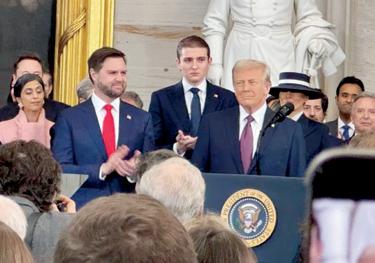

Saudi Arabia plans to invest $600 billion in the United States over the next four years, Crown Prince Mohammed bin Salman announced following a call with President Donald Trump. The Saudi Press Agency reported the discussion, where the Crown Prince expressed interest in the US being Trump’s first diplomatic destination in his new term.
Canadian Prime Minister Justin Trudeau has announced his decision to step down, ending his nine-year tenure amid growing pressure from within his Liberal Party. He will remain in office until the party selects a new leader, with parliament suspended or dissolved by 24 March. Trudeau’s declining popularity has become a significant challenge for the Liberals ahead of this year’s federal election, where the opposition Conservative Party holds a strong lead in polls.
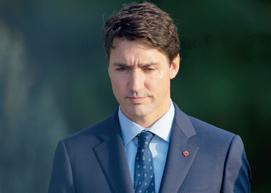
Growing discontent with political elites, economic instability and global crises are fuelling mass protests across Europe. With traditional solutions failing, it remains uncertain whether Gen Z’s digital activism and demand for systemic change will drive meaningful reform or succumb to the same political gridlock that has frustrated previous generations

The end of last year and the start of this one have been marked by mass protests across various parts of Europe – from Germany to Romania and Georgia, all the way to our doorstep. Are these protests driven by nationally
specific motives and reactions, or do they share a common thread, much like in 1968, when protests with similar ideological undertones erupted across the European continent seemingly out of nowhere?
We discussed unfolding events with our interlocutors, whose insights help us understand the deep-rooted dissatisfaction driving people to the streets, the similarities and differences between these protests, and their possible outcomes.

Florian Bieber Professor for Southeast European History and Politics at the University of Graz and director of the Centre for Southeast European Studies
Protests in Slovakia, Georgia and Serbia stem from different causes, but reflect broader political frustration and often inspire one another
There have been large protest waves globally and in Europe over the decades. The last one occurred in the early 2010s and became known in the Middle East as the Arab Spring, but also took place in Europe – from protests in Istanbul over Gezi Park to the Indignados protests in Spain. At the core of these protests was the rejection of neoliberal economic policies in the aftermath of the global financial crisis and the destruction of shared urban spaces, including We Won’t Give Varšavska in Zagreb.
There is currently broader dissatisfaction with incumbents across many countries, due to the sense that political elites are unable to address existing challenges. This dissatisfaction manifests itself in the electoral success of far-right and populist parties in established democracies and protests elsewhere. We are currently witnessing mass protests in Georgia, Serbia and Slovakia against governments that many citizens see as corrupt and autocratic. While it is too early to speak of a broader wave, this shows two things. First, despite the crisis of liberal democracy and the success of far-right and populist parties, including in the U.S., Austria and elsewhere, citizens of many countries are concerned about domestic autocratic trends. This has been a recurring theme over
the past decade. We have seen the rise of what academics call competitive authoritarian regimes, such as in Hungary and Turkey, which are democracies on paper, but which favour the ruling party in practise. Such regimes rely on the perception that they have widespread support, and can thus be sent into crisis by mass protests. The cause of these protests
Growing dissatisfaction with political elites’ failure to address challenges fuels far-right and populist gains in democracies and sparks protests in other regions
might differ – from pro-Russian policies in Slovakia, the ending of EU accession talks and election fraud in Georgia, to the tragic accident in Novi Sad in Serbia – but in all cases the protests speak to a broader frustration with the political system. Second, we can observe this from earlier protest waves; these protests inspire each other. Citizens see protests in other countries and take ideas, courage and strategies from them, so they can communicate with each other.
APhoto by Vesna Lalić

Vladan Marjanović journalist of weekly news magazine Radar
With Trump’s return to the White House, the world has entered a period in which the power of state repression, based on the violating of norms, will more easily neutralise civil resistance, both domestic and foreign
part from your students, I see no other light in the world right now – a close friend told me with regard to the mass protests in Serbia. She has lived at a safe distance from the predominantly bleak post-Yugoslav landscape for over 30 years, but not far enough away to be out of touch with events in our former shared homeland.
As always, we understood each other perfectly. In the terrifying reality of a world that’s becoming not only increasingly dangerous, but (without exaggeration) unhinged, protests like those in Serbia – or in Georgia, where democratic forces must confront a criminal, corrupt and increasingly violent ruling clique that’s leading the country tow ards an abyss – appear as isolated manifestations of collective commitment to a just cause. And all this in two small countries that lie on the margins of major international currents.
The problem is that, no matter how long they last, how geographically widespread they are, or how many people they gather, these protests still lack the potential for radical change – though it isn’t impossible that they may acquire that potential. The broader circumstances in which they unfold do not favour them.
With Donald Trump’s return to the White House, the world is entering a period in which state repression – founded on violations of legal and moral norms, whether directed inward or outward – will have an even greater chance of neutralising civil resistance in one way or another, no matter how justified that resistance may be. Along with this, the very driving force behind that resistance – no matter how noble – will also be undermined.
After all, what lasting impact did movements like Occupy Wall Street, Black Lives Matter, or the Yellow Vests in France have? Only in the case of #MeToo could one argue that it had certain positive effects, though even those were insufficient and limited in multiple ways. In most other cases, the conditions that gave rise to these movements have only worsened. Nowhere is this more evident than in the unchecked and skyrocketing power of American Big Tech oligarchs.
In general, things are clearly moving in the wrong direction. Current protests in various countries are too specif-
The fate of mass protests like Occupy Wall Street, Black Lives Matter, or the Yellow Vests shows that, despite their size and duration, they lacked revolutionary potential – though that doesn’t mean today’s protests will not acquire that potential
ic to local circumstances, unconnected to those elsewhere, meaning they cannot count on solidarity, never mind support. Even worse, ever more protests – like those that erupted in the UK last summer and escalated immediately into destructive riots – are driven by lies and disinformation, prejudice and hatred of others, inevitably leading to violence and deeper divisions.
The threat of violence, therefore, comes from both above and below, and that should concern us all.

Slobodan G. Markovich Faculty of Political Science of the University of Belgrade
Gen Z in the West and Serbia seeks security and respect, expecting institutions – and not politicians – to deliver. Using likes, dislikes and cancel culture, they push for change and reject opponents
The Zoomers are the generation born between 1997 and 2012. They are now university and high school students all around the world. They are also known as the Generation Z or Gen Z. This generation has been analysed by sociologists and the results from Westen societies suggest that Gen Z supports diversity and is very inclusive. Its members also have a greater need to succeed and closer peer bonds than the generation of their parents. It is a digital generation attached to smart phones. It is usually mentioned that the Zoomers even go to the toilet with their mobile phones. They are more sensitive than any previous Western generation when it comes to political correctness and have an aversion to any form of discrimination. They are also very interested in climate change. Unsurprisingly, a generation with these values must collide with strong leaders who demonstrate disrespect towards socially and culturally vulnerable groups.
How does this translate to the Zoomers and ongoing student protests in Serbia? A survey conducted in November 2024 by zoomer.rs demonstrated that Serbia’s Zoomers showed that they have very similar values as their peers in the West. Almost 60% of survey respondents have participated in protests in Serbia, while 78% said they didn’t feel secure in Serbia. They massively reject a strong leader and prefer strong institutions and the rule of law.
The massive protests that spread across Serbia in December 2024 and January 2025 impacted the
Zoomers in particular. As university students and high school pupils, they found themselves among the most active protestors. One of the most important differences with Gen Z compared to older generations is their very low level of trust in political parties. Their main point of contention with the authorities in Serbia is that they expect institutions to function and not to be under the control of politicians. In this sense, the efforts of the Serbian President and former Prime Minister to have direct negotiations with them were meaningless from the outset. The message of Gen Z,
Gen Z distrusts political parties and insists that institutions, and not politicians, function independently, making direct talks with Serbia’s leaders futile from the outset
b oth in the West and in Serbia, is that they want to feel secure and respected. They expect institutions, and not politicians, to make them secure as they pursue their goals. Gen Z has its own tools –its likes, dislikes and cancels – and it endeavours to use them to change the world. Those who oppose their core values may discover that Gen Z hasn’t only showered them with dislikes, but has also cancelled them.

SIvan Vejvoda political scientist and permanent fellow of the Institute for Human Sciences in Vienna
The protests in Serbia are a profound reflection of the need for the majority of society to restore the country to the principles of the rule of law and to seriously combat corruption, which has led to the loss of innocent lives
ince the 2008 global financial crisis – the year of Russia’s invasion of Georgia - the world has experienced the 2014 migrant crisis (coinciding with Russia’s invasion of Ukraine and annexation of Crimea), the Covid-19 pandemic and the immense challenges of dramatic climate change. We are living in an era of global “polycrisis”.
On top of this, the middle class of the West has been declining in terms of relative wealth for four decades, despite overall progress and improved quality of life. Meanwhile, a thin layer of society has amassed immense riches – such that the top 1% now controls 43% of global financial power. As social and economic inequalities widen, people increasingly feel as though something is deeply wrong.
Europe’s demographic decline means that a vast influx of new workers (migrants) is required to fill jobs in all sectors. The fear of mass migration and the sharp rise in the cost of living have fuelled the growth of the right-wing and far-right across many countries. A far-right party currently leads the Italian government and the same is likely to happen in Austria soon, while Germany’s far-right AfD party is projected to take second place in the country’s upcoming elections. These populist and nationalist parties promote a conservative worldview, border closures to (illegal) migrants and promises of economic recovery – almost identical to the policies being pursued by the 47th U.S. president, Donald Trump.
Mass protests across Europe share common threads, but also have distinct domestic drivers. In Germany, Italy and Austria, the key motivations are economic hardship, migration and social discontent. The reasons are similar in former Warsaw Pact and Soviet Union countries, albeit intertwined with additional factors. In Ukraine, Moldova and
Georgia, the people overwhelmingly wish to join the European Union and any indication that the authorities are obstructing this path sparks mass protests. The fundamental demands are EU integration, rule of law, separation of powers and media freedom. This was the case in Ukraine in 2014-15, and we are now witnessing persistent protests in Georgia following what many believe were fraudulent elections last October.
In Romania, an EU and NATO member, the annulment of the presidential elections has led people to demand genuinely free and fair elections and a decisive fight against corruption.
Social and economic inequalities are widening, and people feel that something is deeply wrong. This is one of the common threads among mass protests in Europe, though significant domestic differences remain
The protests in Serbia that were triggered by the 1st November tragedy in Novi Sad are a deep reflection of Serbian society’s demand for a return to the rule of law, respect for freedoms and rights, and a serious crackdown on corruption, which has cost innocent lives. People recognise that something is profoundly wrong and have raised their voices with determination, led by students who are demanding institutions – primarily the judiciary – begin operating independently and free themselves of state control.

WDr Miloš Vojinović research associate of the Institute for Balkan Studies of the Serbian Academy of Sciences and Arts
Despite the differences that define the ongoing protests in various countries, the protestors are clearly united by a sense of unease regarding the future and a crisis of internal political and social relations
e are living in a time of upheaval. In recent years, historian Adam Tooze has successfully popularised the term “polycrisis”. Originally coined in the 1970s, this concept refers to the simultaneous convergence of multiple crises, creating a situation in which the whole is greater than the sum of its parts. This overlap of different factors makes processes less predictable and every solution highly complex. The fight for a cleaner environment and measures aimed at slowing climate change require funding at a time of economic slowdown, inflation and ever-increasing military budgets. Solving one crisis can often exacerbate another.
Rising real estate and food prices, inflation, a crisis of trust, the serious possibility of escalating military conflicts, the erosion of social cohesion, climate change, mass migrations and supply chain disruptions caused by trade barriers and sanctions - these are all challenges that are being felt regardless of location. Protests have erupted across Europe for different reasons. Some are driven by opposition to the way Israel has conducted its military operations in Palestine, while others are led by discontented farmers, and the students of Serbia are at the forefront. In some countries it is political leaders that stand in front of police barricades, while in others that’s being done by ordinary people.
Despite their differences, these protests share a common thread: deep anxiety over the future and internal crises within individual states.
Germany, as the EU’s most important country, serves as an example of an uncertain future. The economic model of Europe’s largest economy relied on cheap energy from Rus-
Students
sia and a kind of diplomatic and military protection provided by the U.S. Both of these are disappearing at a time when China’s global electric vehicle sales are surging, increasing the risk of tariff wars. The growing popularity of parties with strong anti-immigration agendas, as well as the concerns this trend generates, is causing social tension to escalate. One of the most significant facts about contemporary Europe is something noted by political scientist Adam Przeworski: for the first time in recorded public opinion surveys, the majority of Europeans believe their children will have a worse life than they’ve had.
in Serbia, farmers in Belgium and the citizens of Georgia and Romania
may not be protesting for identical reasons, but they all share the reality of an uncertain future, a crisis of trust in institutions and disillusionment with the political class
Students in Serbia, farmers in Belgium and the citizens of Georgia and Romania may not be protesting for identical reasons, but they all live in a time of uncertain futures, media manipulation, geopolitical and economic challenges, and a crisis of trust in institutions and the political elite. Today, more than at any other point in the 21st century so far, predicting the future has become incredibly difficult, making street protests a recurring phenomenon.
Takashi Shimizu
Representative Director, President and CEO,



Our
choice of Serbia has proven correct, as it has become one of Europe’s most attractive business environments, offering strong government support and understanding, as well as a wealth of highly skilled, English-proficient engineers
Speaking in this interview, Toyo Tire Corporation’s Representative Director, President and CEO Takashi Shimizu explains how Serbia’s strong government support, skilled workforce and favourable business environment led this company to decide to base its European operations in our country.
Mr Shimizu, what were your main reasons for choosing Serbia as an investment destination? How have your initial expectations evolved after your on-site experience in Inđija?
— We are a Japanese tyre manufacturer that strives to elevate our business to a higher level by delivering p roducts of superior performance and quality, guaranteed by our technology with greater speed and efficiency on a global scale.
By establishing a state-of-the-art facility in Serbia, we now have a highly capable new production and supply hub, providing unprecedented momentum to our global operations. We have successfully secured a workforce of diligent, highly productive talent, enabling the factory to maintain high operational standards.
Serbia has made remarkable progress in recent years, through economic reforms, fiscal soundness, the development of an automotive industry cluster through a series of foreign investments, and the strengthening of bilateral relations with Japan – all of which have contributed to a solid foundation for economic growth. Our choice of Serbia has proven correct, as it has emerged as one of Europe’s most attractive business environments.
Our employees have developed a strong sense of pride in producing “Made in Serbia” tyres and are working diligently day and night. We have
received exceptional national level support for our initiatives, including the construction of the factory and joint research with the University of Novi Sad. Moving forward, we aim to further strengthen our business foundation in Europe and globally, with Serbia as our base.
Does your decision to expand operations in Serbia represent an isolated, pioneering initiative, or does it reflect broader trends and considerations within the Japanese automotive sector or among Japanese investors more generally?
President Vučić was actively involved in discussions from the early stages of our project and we were deeply impressed by his sincere commitment
— Since our decision to build a factory in Serbia, we have received tremendous support at the national level. We are now implementing a strategy to consolidate all our European business operations in Serbia, further
strengthening our business foundations. Our European sales headquarters has now relocated to Serbia, which has allowed us to reinforce our European sales operations while also advancing plans to build a new R&D centre. These decisions reflect our company’s unique, differentiated strategy. We pride ourselves on our agility and always strive for swift decision-making. For companies that appreciate Serbia’s proactive and supportive business climate, as well as constructive understanding, I believe the country represents a compelling option for business expansion.
From today’s perspective, how would you outline a timeline for prospective investors to establish operations in Serbia?
— It took us several years to get our factory up and running. While this is a standard lead time for us when setting up an overseas factory, considering that this was during the Covid-19 pandemic, we believe that we were able to move as swiftly as possible, thanks to the support of all involved. This was our first tyre factory in Europe, which brought unique chal-

lenges, including the adoption of cutting-edge production technologies and IT systems, and we are pleased to have launched operations successfully.
When I first visited Belgrade in 2017, I had the honour of meeting President Vučić at the presidential office a day before his inauguration. After two years of careful consideration, we had a second meeting in 2019, during which we made the decision to build the factory. President Vučić was actively involved in discussions from the early stages of our project and we were deeply impressed by his sincere commitment. I would like to take this opportunity to again express my gratitude for th e Serbian government’s welcoming stance and unwavering support throughout the process.
What types of support can Japanese investors rely on from both the J apanese and Serbian sides? Additionally, which post-investment inputs or factors were most critical to the smooth integration of the Serbian factory into your global operations?
— The Serbian government showed keen understanding and high expectations for the construction and operation of our factory in Serbia, providing extensive support.
From the site selection stage, President Vučić attended discussions on the day before his inauguration, showing interest and supportive cooperation as if the project were his own. The government’s collective efforts to attract foreign investment played a major role in facilitating our project.
The Serbian government also provided incentives and subsidies for factory construction and equipment installation, demonstrating their confidence in our future growth. This financial assistance was crucial in ensuring the smooth and swift execution of our project.
We continue to receive various forms of support across our business activities, including recruitment assistance and research and development collaboration with universities.
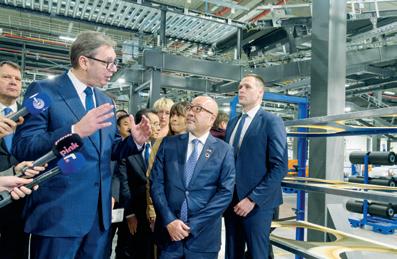
We consolidated our European sales in Serbia in December 2024 and are now exploring an on-site R&D centre to unify operations and strengthen our business foundations in Europe
Support in workforce development and technology innovation has become the backbone of our strategy to strengthen our Serbian operations within our global framework. Such a favourable environment has allowed us to seamlessly integrate our Serbian factory into our global network, contributing to our current success. We look forward to further developing our communication and collaboration with the Serbian government and related institutions.
You were recently honoured by the Serbian authorities. What aspects of your engagement made it stand out, and what kind of message does this symbolic recognition send to the Japanese investor community and foreign investors in Serbia more broadly?
— Being awarded the Gold Medal of Merit in February 2024 was a tremendous
honour, and I accepted it on behalf of our entire company with great pride.
While we are deeply honoured to have been recognised for our “significant contributions and achievements in Serbia’s economic development,” we are profoundly grateful to President Vučić and the Serbian government for their unwavering support of our initiatives, including the construction of our factory and joint research with the University of Novi Sad. Serbia offers strong government support and understanding, and an abundance of highly skilled, English-proficient engineering talent. Considering the high returns on investment, Serbia is an extremely attractive destination for investors. The fact that several other Japanese companies have established operations in Serbia is perhaps a testament to this potential. It was in December of last year that we decided to consolidate our European sales operations into a new sales company in Serbia, and we are exploring the possibility of establishing an on-site R&D centre at our Serbian factory, thus unifying our production, sales and technical operations. We will continue implementing various initiatives to further strengthen our business foundations in Europe, with Serbia as our hub.

Fewer replacement parts, lower environmental impact
Less intervention increases productivity


Save time with consistent high-speed printing
Less power consumption saves energy and money






























Switch to Heat-Free Printing Technology















38 YASUNARI MIYAUCHI
JETRO Budapest General Director Breakthrough in Bilateral Cooperation

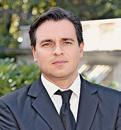
40 GORAN PEKEZ
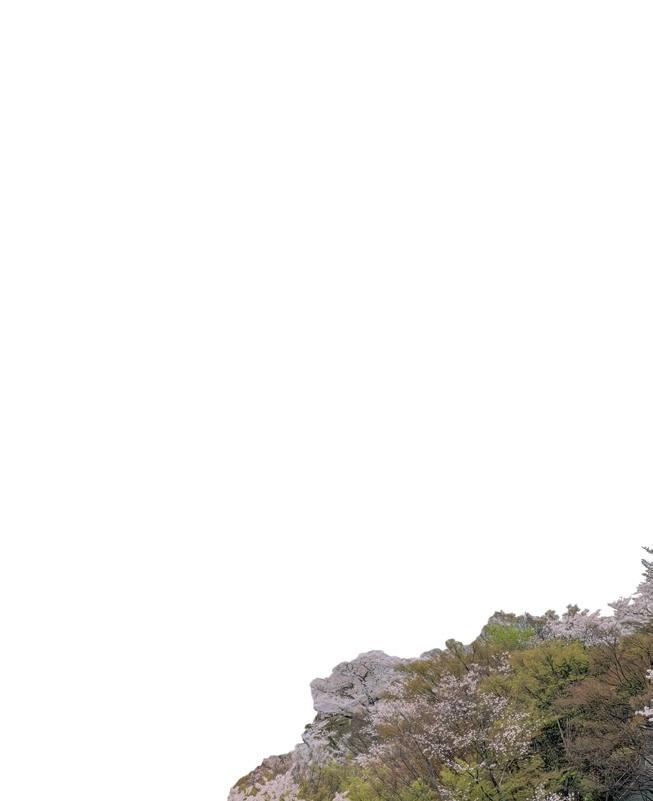
Sales and Service Manager at Daikin Serbia (Heating & Cooling Expert) Trust Built on Expertise


President of the Japanese Business Alliance in Serbia Deepening Ties Between Our Two Countries 46 OLIVER LEPORI
Executive Director, Japanese Business Alliance in Serbia Serbia - Future SEE Strategic Hub

42 KATHRINE DECORZANT
General Manager, JTI Adriatica Benchmark for Success
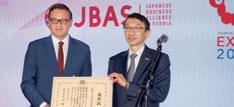




56

By building on existing bilateral ties and exploring new avenues of collaboration, Japan and Serbia are paving the way to future partnerships and positioning Serbia as a strategic hub for Japanese investment in Southeast Europe
The partnership between Serbia and Japan has evolved into a multifaceted relationship, characterised by strong political dialogue, economic cooperation, cultural exchange and a shared commitment to innovation and sustainability. Both countries have demonstrated a proactive approach to fostering their bilateral ties, leveraging their respective strengths and addressing common challenges through strategic collaboration.
Serbia’s strategic location, skilled workforce and designation as a “long-term friendly country” make it an attractive destination for Japanese investors. And Japanese investment in Serbia has grown significantly over recent years, with 15 Japanese-owned factories already operational and more investors expressing interest.
The Osaka Expo 2025, themed “Designing Future Society for Our Lives” and set to become a global platform for innovation and collaboration, offers a new opportunity to nurture existing ties. With participation from 161 countries, including Serbia, this event aims to explore solutions to global challenges through advanced technologies, cultural exchange and shared visions for the future.
For Serbia, Expo 2025 presents a unique opportunity to enhance its visibility on the global stage. The Serbian Pavilion will focus on strategic sectors such as smart cities, energy efficiency, healthcare and advanced manufacturing, all of which are important for Japanese businesses and beyond.
Likewise, Japan has shown significant interest in Expo 2027 in Belgrade. This event will enable Japanese companies to deepen their engagement in Serbia through joint ventures, technology transfers and long-term partnerships.
People-to-people exchanges, supported by the Japanese Business Alliance in Serbia (JBAS), JETRO, and JICA, aim to strengthen bilateral ties and position Serbia as a strategic hub for Japanese investment in Southeast Europe. The 2024 visit of 100 Japanese investors highlights Serbia’s potential to create new opportunities for partnerships. These investments extend beyond economic growth, aiming to foster regional development, sustainability, and innovation – values shared by both nations.
Japan’s Society 5.0 initiative, launched in Serbia by JBAS, underscores the potential for cooperation in digitalisation, green technologies and innovation. Japanese companies have demonstrated their commitment to Serbia’s green transition through projects such as the Vinča Energy-from-Waste Plant and Toyo Tire’s solar power plant, both of which reduce carbon emissions significantly and support Serbia’s environmental goals.

Key agreements, such as the Protection of Mutual Investments and the Bistrica RHP cooperation, will further solidify Serbia’s reputation as a reliable partner to Japanese investors by ensuring a secure and stable framework
Under the main theme of “Designing Future Society for Our Lives”, the Japanese World exhibition will present the diversity of life, the existence of life in connection with other lives, and the fact that life exists in a cycle of destruction and regeneration ~ Akira Imamura
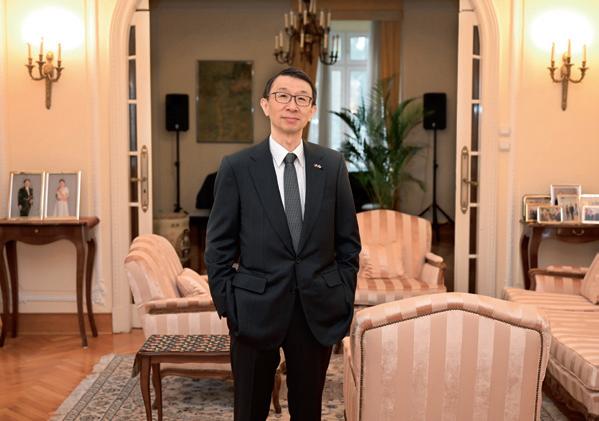
By Ljubica Gojgić
Bilateral relations between Japan and Serbia continued to strengthen in 2024, thanks to a strategy that Ambassador Akira Imamura describes as “people-to-people exchange”. Apart from the holding of significant meetings at a high political level, the two countries are also strengthening their economic cooperation. Interest in investing in Serbia is on the rise among Japanese companies, which in Serbia have found “a
favourable investment environment, cost competitiveness, excellent human resources and strong government support”. Speaking in this interview for CorD Magazine, Ambassador Imamura explains his personal belief that “the increase in investment by Japanese companies is also related to the nearshoring that is taking place, where companies are producing closer to the EU market in order to avoid supply chain risks.”
Your Excellency, the Japanese city of Osaka will host World Expo 2025 from April to October next year. What lies behind its central theme: “Designing Future Society for Our Lives”? What is the significance of holding this event in Osaka, and Japan as a whole?
— Expo 2025 Osaka, Kansai, Japan, will be a place where you can experience in advance the kind of future society that will emerge as we pursue the UN’s Sustainable Development Goals. It should become a platform for jointly creating the future with the 161 participating countries, including Serbia. Under the main theme of “Designing Future Society for Our Lives”, this Japanese exposition will present the diversity of life, the existence of life in connection with other lives, and the fact that life exists in a cycle of destruction and regeneration. This is actually a traditional way of thinking in Japan, and we hope it will evoke a sense of empathy among people around the world.
When it comes to Japan-Serbia bilateral relations, could it be said that they were enhanced even further in 2024 thanks to the first visit of a Japanese foreign minister to Serbia in five years?
— Last year was a year of increased people-to-people exchange between our two countries. It was particularly significant that then Foreign Minister Yoko Kamikawa visited Serbia and held the first foreign ministerial meeting in five years with Serbian Foreign Minister Marko Đurić, as the international order was facing severe challenges. During that meeting, the ministers held a frank discussion on the development of bilateral relations, stability in the Western Balkans, as well as cooperation in maintaining and strengthening the international order based on the rule of law. Minister Kamikawa stated that, in order for the Western Balkan region, which has experienced numerous conflicts, to continue to develop strongly and enjoy peace and stability in the future, it is important to further promote regional cooperation, as well as EU integration. With this in mind, she also conveyed to Minister Đurić that Japan is promoting the two pillars of the “Western Balkans Cooperation Initiative”, i.e., support for socioeconomic reforms that advance EU accession, and reconciliation and accommodation efforts around the region.
The media reported with great interest that the head of Japan’s diplomacy also visited Pristina, the first visit since Japan’s decision to recognise Kosovo’s unilateral declaration of independence. Does this signal a new phase of Japan’s engagement in the region?
— Regarding the Kosovo issue, Japan has been supporting a solution through the Belgrade-Pristina Dialogue mediated by the EU. Progress in this dialogue on the normalisation of relations between the two sides is the key to progressing on the “Path to Europe” for both sides, and to this end it is important that the parties concerned work properly, and in good faith, to fulfil their respective obligations, including the establishment of the Community of Serb majority Municipalities in Kosovo.

We solicit all parties to refrain from any actions that could lead to further tension and escalation. It is ordinary people who suffer from the consequences of such actions
Of late, we are witnessing a new move by some Japanese companies to build a supply chain in Serbia between themselves
We are seriously concerned about the development of nuclear and missile activities by North Korea and its military cooperation with Russia
Last July, Minister Kamikawa became the first Japanese foreign minister to visit Kosovo after Serbia, in order to demonstrate Japan’s renewed commitment to help seek reconciliation among the parties. She conveyed Japan’s thinking directly to the Kosovo side and expressed strong expectations of the Kosovo government’s leadership in this regard. However, Japan remains concerned about the situation on the ground. Fomenting distrust is not a constructive approach. We solicit all parties to refrain from any actions that could lead to further tension and escalation. It is ordinary people who suffer from the consequences of such actions.
Japan and Serbia entered the new year with a bilateral Investment Protection Agreement, which the two countries agreed to start negotiating last year. What is the significance of this agreement when it comes to economic exchanges between the two countries?
— Investments in Serbia by Japanese companies have been increasing in recent years, particularly in the automotive sector. This is because Japanese companies appreciate Serbia’s favourable investment environment, cost competitiveness, excellent human resources and strong government support. I believe that the increase in investment by Japanese companies is also related to the nearshoring that is taking place, where companies are producing closer to the EU market in order to avoid supply chain risks. Of late, we are witnessing a new move by some Japanese companies to build a supply chain in Serbia between themselves. This will send a positive message to other Japanese companies that are considering coming to Serbia. In light of these developments, the two countries agreed at last year’s meeting of their respective foreign ministers to launch negotiations on a bilateral investment treaty. If concluded, it is expected to further promote investment through the protection of investors’ rights.
The first facility in Serbia to use waste to generate electricity was opened in Vinča, near Belgrade, in late 2024, creating company Beo Čista Energija that was co-founded by Japanese firm Itochu. Are you satisfied with what you saw at
Your Excellency, the exhibition Flowers and Birds: Four Seasons in Japan, staged at Belgrade’s Madeleine Palace of Art, showcased paintings from your personal collection, including works created in the Nihonga style depicting flowers and birds on silk and Washi paper. How did the public respond to the exhibition, and what impact do you hope it will have on their understanding of Japanese culture?
The word “nihonga” literally means “Japanese painting” and refers to paintings using traditional Japanese techniques. Nihonga artists have found beauty in the delicate changes of nature that occur with the change of seasons. They also used a technique that evoked the viewer’s imagination by leaving certain areas in the painting where nothing was depicted (yohaku). There were over 100 visitors on the first day of the exhibition, which showed that there is a high level of interest in traditional Japanese art. I am very happy that they were able to deepen their understanding of the Japanese aesthetic sense that places importance on seasonal changes, and to experience the sense of space created by yohaku.
the opening? What should we expect over the next two decades of this partnership?
— This Japan-French joint project contributes to environmental protection and the transition to a green economy in Serbia – not only by controlling the huge landfill of Belgrade’s household waste, but also by providing citizens with electricity and heat produced by the waste. With this unique feature, BCE (Beo Čista Energija) has set a new standard for this region and beyond in many areas. However, growth and urbanisation continue to pose complex challenges to waste management. With Japan’s eco-friendly technology and management knowhow, backed by our traditional “mottainai”, or too good to waste, attitude, I hope that we will be able to contribute further, together with our partners, to achieving
Minister Yoko Kamikawa visited Serbia and held the first foreign ministerial meeting in five years with Serbian Foreign Minister Marko Đurić, as the international order was facing severe challenges
our common goal of a circular economy in Serbia. The Embassy is ready to facilitate this partnership as we move to the next step.
This year marks seven years since former Japanese Prime Minister Shinzo Abe launched the “Western Balkans Initiative”, which promotes reforms in Serbia and encourages regional cooperation across the Western Balkans. What could you say about its impact?
— Seven years have passed since Prime Minister Abe announced this initiative, and the effectiveness of its two pillars has not changed. At the same time, we need to update our cooperation policy in line with Serbia’s economic development and progress in regional cooperation among the Western Balkan countries, and we hope to revise the poli-
cy for the next few years in the near future. With regard to the first pillar – cooperation in the area of innovation, including support for start-ups –transition to a green economy and support for decarbonisation will become increasingly important in promoting structural reforms in Serbia, which has become a middle-income country. As for the second pillar – the promotion of regional cooperation – we would like to focus on the tourism sector and on balanced development through cooperation among local governments.
The end of 2024 was marked by new instabilities in Japan’s neighbourhood. Apart from longstanding tensions with North Korea, the region was also rocked by the abrupt change of government in South Korea. How do you see future developments on the Korean Peninsula? — The security environment surrounding Japan has become most severe and complicated in the postwar period. In addition to the situation in the East China Sea and South China Sea, the question of peace and stability in the Taiwan Strait, and increased military activities by neighbouring countries, we are seriously concerned about the development of nuclear and missile activities by North Korea and its military cooperation with Russia. The issue of the abduction of Japanese citizens by North Korea remains unresolved. Japanese Foreign Minister Takeshi Iwaya shared these concerns with his South Korean counterpart in January and the two ministers confirmed that, under the current strategic environment, the importance of bilateral relations remains unchanged. They reaffirmed their commitment to continue to work closely together bilaterally, as well as under the Japan-U.S.-ROK (Republic of Korea) framework. During Minister Iwaya’s meeting with new U.S. Secretary of State Marco Rubio in the same month, the two ministers also agreed to work together to continue elevating the Japan-U.S. Alliance to new heights in order to realise a free and open Indo-Pacific.





Growing business exchanges between Serbia and Japan, particularly in the energy, IT and environmental sectors, present significant opportunities for cooperation and new investments

Last year saw significant efforts to strengthen economic ties between Serbia and Japan. Here we discuss the long-term opportunities arising from recent business exchanges with JETRO Budapest General Director Yasunari Miyauchi.
How would you summarise the success achieved during your recent visit to Serbia,
and what are the next steps you expect to follow up on?
— We were able to send a delegation of 70 companies, about 100 people, to Serbia last year. The most important result was that we were able to see the investment environment in Serbia with our own eyes and to talk with local businesspeople to find out the possibilities of business exchanges between our two
countries. It was also a great benefit for us to learn about the activities of the many start-up companies that are active in Serbia. We are truly grateful to the Serbian president and other high-level government officials who actively engaged in dialogue with us and welcomed Japanese companies nationwide, including by operating charter flights.
Through the delegation’s dispatch, for example, some of the participating companies were so assured by the visit that they’ve begun working in earnest to set up manufacturing bases. There are also companies considering collaborations with Serbian start-up companies. Still others are working to promote energy and environment-related equipment in order to solve local social issues. As the next step, we hope that these Japanese companies will make steady progress in their respective businesses, while we will continue to support them in any way possible.
To what extent are Japanese companies currently leveraging the capacities of the Serbian IT sector and the country’s skilled workforce and competitive labour costs?
— Several Japanese companies have established new manufacturing facilities in Serbia over the past few years and are utilising skilled local workers in their production activities. When these companies established their operations in Serbia, they compared investment costs with other countries and ultimately evaluated labour costs in Serbia as being competitive. Competitive labour costs in the Balkans, including Serbia, have been attracting attention in recent years, due to inflation across Europe.
We also had an opportunity to visit the Novi Sad Science & Technology Park, which confirmed that it is producing very talented IT professionals. We were also able to confirm that some Japanese companies are already developing their business by utilising these IT talents. These excellent IT human resources are one of Serbia’s strengths and we can expect further cooperation with Japanese companies in the future.
The Japanese business delegation that visited Serbia last year included representatives of companies from the sectors of IT and digitalisation, energy and environmental protection, as well as other industries. In which of these areas have you identified the greatest potential for cooperation?
— In the fields of energy and environmental protection, even after sending delegations, sever-
al of the participating Japanese companies are exploring the possibility of business exchanges, and we are supporting them continuously. It may be possible to solve social issues confronting Serbia with the technical capabilities of Japanese companies. We may also be able to utilise the capital of Japanese companies to launch new projects in Serbia. Potential exists for business cooperation between our two countries in this area.
What does EXPO 2025 Osaka mean for improving trade opportunities between Serbia and Japan?

EXPO 2025 Osaka will present an excellent opportunity to showcase Serbia to the Japanese public and business community
One of the main issues for improving the bilateral trade balance is the further diffusion of products that take advantage of Japan’s technological capabilities in Serbia
Excellent IT human resources are one of Serbia’s strengths and we can expect further cooperation with Japanese companies in the future
— This is an excellent opportunity to make Serbia a country that’s known to the Japanese public and business community. Specifically, the Belgrade Expo will be held in 2027 and is likely to attract attention to Serbia. This opportunity can be used to increase the brand value of Serbia’s exports and services in Japan.
In addition, the Expo is an opportunity to promote Serbia’s products and services directly to Japanese businesspeople. Japanese buyers and traders are expected to visit the Expo, which may lead to entering new markets or in -
creasing market share on existing markets. We should take advantage of this opportunity to greatly expand trade between the two countries.
What do you see as the major challenges to improving the trade balance between Serbia and Japan?
— Japan’s trade balance with Serbia recorded a deficit of around 46.59 billion yen in 2023. Japan exports to Serbia rubber products, pharmaceuticals, textile yarn etc. while it imports cigarettes, clothing, fruits and vegetables etc. Japan has been importing more than it exports, and the deficit has been increasing, but improvement was seen in 2022.
One of the main issues for improving the trade balance is the further diffusion of products that take advantage of Japan’s technological capabilities in Serbia. We need to further increase business exchanges with each other and identify business opportunities.
Serbia’s location, skilled workforce and “long-term friendly” status all serve to attract Japanese investment, while the finalising of agreements on mutual investment protection and energy cooperation will enhance investor confidence
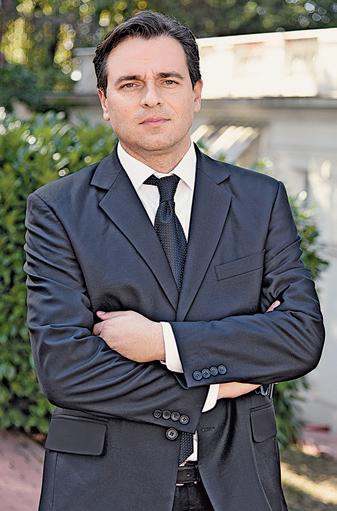
There are currently 15 Japanese-owned factories operating in a wide range of sectors in Serbia, while several other potential investors are inquiring. JBAS President Goran Pekez believes that the growing interest in Serbia among Japanese companies presents an excellent opportunity to deepen bilateral trade through carefully crafted agreements that promote long-term collaboration. “Serbia’s strategic location, skilled workforce and official classification as a “long-term friendly country” have already positioned it as an attractive destination for Japanese investment,” explains Pekez. “To build on this momentum, finalising key agreements like the Protection of Mutual Investments and the Bistrica RHP cooperation agreement will provide Japanese companies with a secure framework for operations and thus encourage further investment.”
What are the other avenues for increasing this cooperation?
— The upcoming 2025 Osaka World Expo and 2027 Belgrade Expo will serve as crucial platforms to strengthen existing ties. By aligning with Japan’s Society 5.0 vision – focused on innovation, digitalisation and sustainability – Serbia can position itself as a reliable partner to Japanese industries. These events provide opportunities to highlight Serbia’s capabilities and establish trade agreements in strategic sectors like renewable energy, artificial intelligence, smart cities and advanced manufacturing. Finally, global trends like friendshoring – where international corporations focus increasingly on their supply chain networks in countries considered political and economic allies – make Serbia an ideal partner for Japanese companies seeking stable and reliable investment locations. With shared challenges like population ageing and the transition to sustainable economies, trade agreements could focus on addressing these issues through joint ventures, technology transfers and enhanced market access. By fostering this mutual alignment, Serbia can support the long-term pres-
ence of Japanese companies while strengthening bilateral trade relations.
What is the Serbian economy’s interest in EXPO 2025 and in which areas can Serbian companies expect your help?
— Expo 2025 offers Serbian companies unparalleled access to the latest technologies, innovations and global trends. From April to October, this event will feature several thematic weeks, each highlighting a specific area of innovation. In collaboration with relevant institutions of the Serbian government, we’ve agreed to focus particular attention on the following sectors: Smart cities and advanced mobility, Healthcare, Food, Smart Factories, Energy efficiency and Green Tech, Science and Education, Infrastructure and Disaster Management.
Serbian companies can count on comprehensive support from JBAS in preparing for and organising their Expo 2025 participation by structuring the agenda for their visit to Osaka and facilitating communication with Japanese counterparts.
Is your association simultaneously promoting EXPO 2027 in Serbia; is this event of interest to Japanese companies?
— Thanks to the exceptional bilateral relations between Serbia and Japan, Japan was one of the first countries to express an interest in participating in Expo 2027 Belgrade. This reflects the strength of
We are committed to ensuring that Japanese companies’ activities here are both successful and impactful
our partnership and the mutual interest in fostering collaboration on innovative solutions to global challenges.
JBAS is actively supporting processes related to the development of bilateral economic cooperation, including facilitating communication between relevant stakeholders in Serbia and Japan. We are committed to ensuring that Japanese companies’ activities here will be both successful and impactful, highlighting opportunities for further collaboration in areas such as technological development, renewable energy, healthcare and infrastructure. Both events are expected to deepen ties between our two countries, and to serve as platforms to showcase Japan’s cutting-edge innovations while creating opportunities for Serbian companies to
learn, collaborate and grow alongside one of the world’s leading economies.
With the visit of representatives of 100 Japanese investors to Serbia in 2024, you sparked new interest in economic cooperation with Serbia among Japanese companies. What should be the next step to truly expect new investments?

The upcoming 2025 Osaka World Expo and 2027 Belgrade Expo will serve as crucial platforms to strengthen business ties between Japan and Serbia
Global trends like friendshoring position Serbia as an ideal partner for Japanese companies seeking stable and reliable investment opportunities SUPPORT Serbian companies can count on comprehensive support from JBAS in preparing for and organising their participation at Expo 2025 in Osaka
— The 2024 visit of the delegation of Japanese institutions and companies to Serbia marked the largest economic delegation ever hosted in the country, serving as a testament to the advancement of bilateral cooperation and Japan’s growing interest in Serbia. This shows the great potential for deepening economic ties and fostering new investments.
To ensure this interest is translated into tangible opportunities, the next steps should require a well-coordinated follow-up. One effective approach ideally could be organising a reciprocal visit by a Serbian economic delegation to Japan, which would allow us to present Serbia’s investment potential directly to Japanese companies. Additionally, hosting an investment conference could provide a platform to showcase Serbia’s strategic sectors, such as renewable energy, advanced manufacturing, and digital technologies, while facilitating direct dialogue between Serbian and Japanese businesses. Such initiatives, supported by JBAS and other key stakeholders, would not only strengthen mutual trust, but also create an environment conducive to long-term partnerships, ultimately paving the way for new Japanese investments in Serbia.
What would you highlight as good practices that Japanese companies have brought to our nation?
— To name a few examples, I would point out the commitment to renewable energy and the optimisation of large industrial systems that Japanese companies have brought to our community. For instance, Toyo Tire’s new solar power plant, “Taiyo”, is expected to reduce CO2 emissions by 200,000 tonnes. Another memorable project, the Vinča Energy-from-Waste Plant, is predicted to cut CO2 emissions by 210,000 tonnes annually. Moreover, Japan Tobacco’s extensive investments in gas-powered curing barns has reformed the sector’s ecological footprint. In the energy sector, the flue gas desulphurisation plant at the Nikola Tesla A thermal power plant reduced sulphur dioxide emissions by as much as thirty times, with the same technology currently being implemented at Nikola Tesla B. The RHE Bistrica project, planned for completion by 2031, represents another major initiative, focused on sustainable hydropower solutions. These projects are supported by Japanese companies, which are working to help Serbia’s green transition through renewable energy and sustainable solutions.
JTI represents one of the largest Japanese investments in Serbia and the country’s leading tobacco company, which has been recognised as a Top Employer for the 10th consecutive year
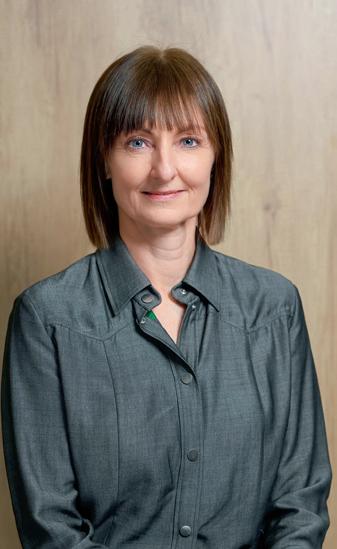
Since arriving in Serbia in 2006, through the acquisition of Tobacco Industry Senta, JTI has invested more than 220 million euros, quadrupled its workforce from 84 to 350 employees, and increased its market share significantly.
JTI Adriatica now has a new general manager – Kathrine Decorzant – with whom we discussed current results, trends, the company’s new investment cycle, the Kaizen philosophy, Integrated Work System challenges and plans for the period ahead.
It was on the first day of this year that you became the first woman to take on the role of JTI general manager for the Western Balkans. Congratulations! This is a significant achievement in itself – leading such a large company, in a predominantly male-dominated industry.
— Thank you! I am excited to take on this new role and to embrace the opportuni-
Global demand is growing for products that combine technology, quality and a better overall user experience, and we are proud to meet those expectations with Ploom
ties it brings. The Adriatica cluster has an excellent reputation within JTI for its strong, motivated and results-driven team, which I’ve already experienced firsthand. The dynamic and collaborative atmosphere here is truly inspiring and that’s one of the main reasons why JTI Serbia has been recognised as a Top Employer for the 10th year in a row. This isn’t just an award – it’s a tribute to our employees, their passion, dedication and relentless drive, which set us apart as a true, decade-long, employer of choice.
I’ve also heard wonderful things about Serbia, and moving to Belgrade has been an exciting adventure. I am looking forward to exploring the city, its culture and cuisine; to following in the footsteps of my predecessors, who all have fond memories of their time here.
As for working in a predominantly male environment, I believe that diverse teams – in terms of gender, age and nationality – are vital for success and key to driving innovation and progress.
JTI launched a superior and innovative option last year, in the form of the Ploom tobacco heating device. What has been the user response? Are smokers increasingly seeking alternatives to traditional cigarettes?
— JTI, as one of the largest Japanese investments and the leading tobacco company in Serbia, has launched Ploom – the most advanced tobacco heating device, featuring the innovative and unique HeatFlow technology perfected in Japan. The launch of the Ploom tobacco heating device has been met with very positive feedback among consumers. Smokers are indeed increasingly seeking alternatives to traditional cigarettes, and Ploom offers a modern, innovative solution that aligns with their preferences for a less harmful and more convenient experience. Global demand is growing for products that combine technology, quality and a better overall user experience, and we are proud to meet those expectations with Ploom.
Almost all Japanese companies that achieve outstanding results in terms of quality and efficiency follow the Kaizen philosophy, while you recent-
ly introduced the Integrated Work System at your Senta factory. Could you tell us more about it?
— The Integrated Work System (IWS) is one of the best methodologies that will help us optimise production and eliminate losses. By continuing the implementation of the Kaizen philosophy and IWS, the JTI factory will work further to enhance employee engagement and development, as well as improving processes. The Kaizen philosophy and IWS methodology create a culture of collaboration and innovation, enabling us to adapt, grow and thrive in a dynamic environment.
We have just left behind a very dry year. How have the unfavourable weather conditions impacted the yield, quality and purchase price of tobacco? How is your company addressing climate challenges?
— Last year brought significant challenges for tobacco growers due to
We plan to invest around 20 million euros in the renewal of production lines, bringing the total investment for the 2022-2027 period to approximately 70 million euros
drought and high temperatures. However, through close collaboration with our farmers, and with the use of irrigation systems, we achieved solid results. We increased our irrigated land by 5% over the last year, covering 41% of our contracted fields. As Serbia’s largest tobacco producer and the only international company that purchases domestic tobacco, JTI has contracted over 2,300 hectares for cultivation this year. We ensure strict control over the growing process, offering secure sales, competitive prices and reliable support to around 3,000 farmers, seasonal workers and their families. Our farmers consistently
achieve 40% higher yields compared to others in Serbia, thanks to that comprehensive support.
Your five-year investment cycle, worth 51 million dollars, will conclude in 2027. What will the JTI Serbia system look like at that time?
— We launched this investment cycle three years ago, focused on modernising our production capabilities. A key investment has been the installation of a new production line. We additionally completed the construction of two new warehouses last year. We also established a new manufacturing development centre, where we are working with suppliers to develop innovative machines designed to improve production efficiency and adaptability. Looking ahead, by 2027 we plan to invest around 20 million euros in the renewal of production lines, bringing the total investment for the 2022-2027 period to approximately 70 million euros.
Serbia leads the region when it comes to the influx of Japanese investments, which carry added value that far exceeds the significance of the initial investment amounts. What is the particular significance of these investments?
— Japanese investments play a very important role in Serbia’s economic development. This isn’t just about capital inflow, but also encompasses the introducing of advanced technology, corporate ethics and a unique business culture rooted in corporate social responsibility.
Since arriving in Serbia in 2006, through the acquisition of Tobacco Industry Senta, JTI has set a benchmark for success. With more than 220 million euros invested to date, the company has quadrupled its workforce from 84 to 350 employees and increased its market share significantly, such that it now leads the cigarette category in Serbia. JTI’s achievements serve as an inspiration for others to consider Serbia as a promising investment destination. We actively promote Serbia as an attractive investment hub for Japanese companies. Through the Japanese Business Alliance in Serbia (JBAS), and the Serbian-Japanese Business Club in Tokyo, we work to attract new investors and facilitate dialogue between the Serbian Government and existing investors.
Daikin has introduced many global “firsts” and patented technologies that have become indispensable in modern air conditioners and heat pumps ~ says Diakin Serbia’s Aleksandar Momčilović
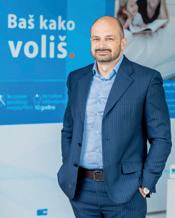
Daikin devices have epitomised innovation in the heating, cooling and air conditioning industries for over a century. How has the company achieved this; and what – beyond pioneering technologies, innovation, and a focus on eco-friendly solutions – makes it an industry leader? We sought answers to these and other questions from Daikin Serbia Sales and Service Manager Aleksandar Momčilović.
Last year marked Daikin’s centenary. Could we say that your brand has been shaped by revolutionary ideas, technological breakthroughs and dedicated individuals, both globally and here in Serbia?
— The company has undergone remarkable development over the past 100 years. We started back in 1924 with radiator tubes for aircraft, and just a decade later produced fluorocarbon gas for the first time. This achievement was pivotal in establishing Daikin as a leading manufacturer of air conditioners and the only company in the world that simultaneously develops and produces air conditioning equipment and refrigerants.
Daikin has since introduced numerous global “firsts” and patented technologies that are now integral to modern air conditioners and heat pumps. Remarkably, 300 of these patents have been shared freely to promote a more efficient and healthier future. Innovation extends beyond our products; it’s a core philosophy that also
drives the services we provide to our partners and end users.
This philosophy is where the local team plays a critical role. I work with exceptional professionals who, on one hand, understand the needs of the local market and today’s consumers thoroughly, while, on the other hand, actively create opportunities to ensure the quality of our products, services and business models meets those needs.
What makes Daikin a leader in its field?
— Business is all about people. As a Japanese corporation that highlights quality as a fundamental principle in every aspect, Daikin cultivates an outstanding business culture. This culture relies on strong team energy, open communication and the desire to feel better and more accomplished every day. It’s impossible to deliv-
Daikin opened its Training Centre in Belgrade three years ago, where certified programmes and advanced training sessions for partners are conducted regularly, as part of the Daikin Service Academy
er excellence to customers and partners if we don’t strive for excellence ourselves.
Beyond offering every customer the best products and services, you’re also committed to transferring Daikin’s values across your sales and service chain. Is the Service Academy an example of this? — Absolutely! To ensure that end users enjoy all our benefits fully, everyone in the chain must share the same values –from our headquarters in Belgium to the sales representatives and technicians in your neighbourhood. We must all possess the highest level of expertise and build trust with the market on the basis of that expertise.
We opened the Daikin Training Centre in Belgrade three years ago, where certified training sessions and skill development programmes for our partners are conducted regularly as part of the Daikin Service Academy. The Academy is led by domestic and international experts from the HVAC industry and focuses on real-world cases and practical work supported by theoretical knowledge. Our partners thus gain the tools, knowledge and connections necessary to sell, install and service premium-quality Daikin devices in a premium manner.
Over 400 participants have so far been trained through various educational programmes at the Academy. The results of our efforts have already been recognised by the market, which motivates us to further develop the Daikin Service Academy.


Japan’s primary motivating factor in investing in Serbia are the hot, high-potential sectors that strive to contribute to a brighter future for the region
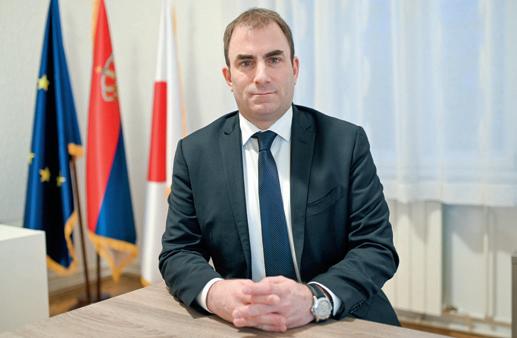
The Japanese Business Alliance in Serbia (JBAS) has this year announced the launch of the Society 5.0 initiative in the country, based on a concept introduced by the Japanese government in 2016. Speaking in this interview, JBAS Executive Director Oliver Lepori explains that the launch of this initiative in Serbia “envisages a human centred "super-smart society," where technological advancements are applied to improve human wellbeing and everyday life “.
What does Society 5.0 initiative specifically entail?
— By focusing on integrating advanced technologies and supporting innovation in areas like smart
cities, renewable energy, industrial process automation and advanced healthcare, the initiative specifically aims to create long-term sustainable solutions to global challenges like climate change, ageing populations, and the need for more efficient resource management.
In Serbia, the launch of Society 5.0 reflects the strong collaboration between the public and private sectors, with JBAS playing an active role in guiding its implementation. This year’s theme for the 2025 Osaka World Expo is "Designing Future Society for Our Lives," which aligns with the Society 5.0 concept, providing us with an opportunity to learn from them and bring that knowledge to Serbia.
How does JBAS plan to follow up on the visit of the large delegation of Japanese companies to our country?
— Last October, we had the honour of hosting a significant business delegation from Japan, showcasing their interest in investing and expanding their operations in Serbia. Japan’s primary motivation to invest in Serbia are the hot, high-potential sectors that aim to contribute to a brighter future for the region.
We’re in an optimal position to make the most of this, as we have two upcoming events of extraordinary importance: Expo2025 in Osaka and Expo2027 in Belgrade. The Serbian Pavilion at Expo 2025, soon to be inaugurated, will serve as a platform to promote Serbia’s potential and strengthen its economic ties with Japan. The themes of these events align closely with the key developmental goals of both nations, addressing shared challenges such as the “silver revolution” and the delicate balance between modernising and preserving our tradition-oriented societies.
These initiatives will lay the groundwork for several high-profile events throughout 2025, coinciding with Expo 2025 in Osaka, while also serving as preparatory activities for Expo 2027 in Belgrade.
Through the growing partnership between Serbia and Japan, JBAS aims to play a pivotal role in attracting investments, advancing trade cooperation, and promoting strategic projects in Serbia. This will be achieved through targeted activities such as raising awareness, engaging local communities, and fostering regional development. These efforts are not just about economic growth but about building a sustainable, innovative future that reflects the shared values and ambitions of our two nations.
What experiences did you share with delegates? — Serbia offers numerous advantages for investors, including a skilled and reliable workforce with high English language proficiency, a wide range of free trade agreements, and favorable conditions for establishing production facilities.
The focus of Japanese companies on fostering strong relationships with employees has made them increasingly appealing to young people in Serbia.
Major Japanese companies operating in Serbia are the best ambassadors in promoting Serbia as an investment destination. For example, Toyo Tires, which established a factory near Belgrade in 2022, highlighted the Serbian government’s active support and subsidies as key reasons for expanding across the country. Additionally, Nidec has emphasised Serbia’s ide-

al location and ease of communication in English as significant advantages for manufacturing industries.
JBAS’s cooperation with Japanese institutions operating in Serbia strengthens bilateral ties significantly and enhances Serbia’s appeal to Japanese investors. The active support extended by the Japan External Trade Organization (JETRO) and the Japan International Cooperation Agency (JICA) plays a crucial role in highlighting Serbia as a prime investment destination. These institutions provide invaluable resources, guidance and a network for Japanese businesses seeking to enter or expand on the Serbian market. We work to-
We’re in an optimal position to make the most of the Japanese interest in investing, as we have two upcoming events of extraordinary importance: Expo2025 in Osaka and Expo2027 in Belgrade
gether to actively facilitate partnerships, promote cultural exchange and support Japanese enterprises in navigating the local market.
Furthermore, the combined efforts of JETRO, JICA and JBAS demonstrate their strong commitment to creating a business-friendly environment and positioning Serbia as a key strategic hub for Japanese investment and growth in Southeast Europe.
Investments made by Japanese companies don’t only bring advanced technology and expertise to Serbia, but also provide access to new markets through global supply chains. By investing in local communities, and in local training and development, they contribute to the country’s economic progress and help unlock its human potential.

The first annual JBAS Healthcare Group meeting was hosted by Takeda Serbia. Ms. Milena Argirović, a member of the Board of Directors, welcomed JBAS members operating in the medical and pharmaceutical sectors, including Nipro Medical Corporation, Olympus Corporation, and Heliant Health.

A Business Forum for companies from Niš and Japanese companies operating in Serbia was held at the Science and Technology Park Niš. The park warmly welcomed a delegation from Japan led by H.E. Akira Imamura, alongside representatives of JBAS members and domestic companies.

Over thirty representatives of Japanese companies and corporations experienced the latest Japanese-made cars and motorcycles at the grand opening of the DDOR BG Car Show and the motorcycle fair “Motopassion.” This exclusive preview tour was specially organized by JBAS.
THE 10TH SEE AUTOMOTIVE CONFERENCE 2024: FROM “CONNECT & SUPPLY” TO “THE NEW MOBILITY”
JBAS participated in the 10th SEE Automotive Conference - From “Connect & Supply” to “The New Mobility”, organized by the Serbian Automotive and Mobility Cluster (AC Serbia) in Belgrade.

JBAS celebrated the traditional Japanese festival Tanabata, also known as the Star Festival. The event featured wishes written on tanzaku papers, which were hung on bamboo trees specially planted for the occasion in the yard of the Museum of Yugoslavia.

JBAS had the honor of receiving an award from the Ministry of Foreign Affairs of Japan for its role in promoting economic relations between Japan and Serbia.

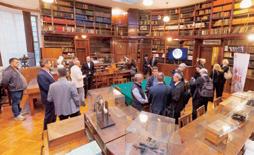
TSUKIMI:
JBAS members, partners, and friends gathered to celebrate Tsukimi, the traditional Japanese moon-viewing festival, held at the Astronomical Observatory in Belgrade.

JBAS had the honor of officially opening the International Grafima Fair at the Belgrade Fair. With Japan’s strong presence in technological innovation, the event highlighted the collaboration between Serbia and Japan in advancing this industry.

Approximately 40 JBAS members proudly participated in the Serbia-Japan Business Forum, where a delegation of about 100 prominent Japanese businesspeople and companies visited Serbia. The forum underscored their growing interest in expanding operations within the Serbian market, marking a historic milestone in the cooperation between Japan and Serbia.
JBAS members participated in the AI_4_LIFE: Biotech Future Forum, a key event focusing on the intersection of artificial intelligence and biotechnology. Industry leaders and innovators gathered to explore cutting-edge developments and discuss AI-driven advancements shaping the future of the biotech sector.
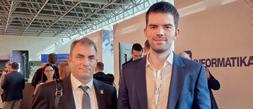
JBAS members contributed as guest speakers at the 24th Belgrade Economic Forum, addressing topics such as cybersecurity, data protection, and the importance of foreign direct investment from Japan in Serbia.
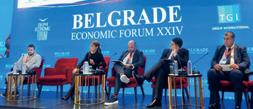
During their Annual Gala Celebration, JBAS was honored with the prestigious Minister for Foreign Affairs of Japan Award. This accolade recognized JBAS’s significant contributions to fostering economic relations between Japan and Serbia throughout 2024.
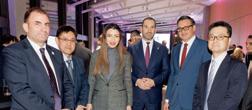
Opening its doors to the public in April 2025, Expo 2025 Osaka is set to be a global stage for innovation, culture, and creativity. With anticipation mounting, nations are gearing up to present their best at this extraordinary event. From cutting-edge design to immersive experiences, country pavilions promise to inspire, amaze, and leave a lasting impression on the millions of visitors expected to attend

Expo 2025 Osaka serves as a collaborative platform, addressing pressing global challenges through the lenses of sustainability, technology, and cultural exchange.
Running for 184 days, from 13 April to 13 October, the Expo will take place at Yumeshima in Osaka, Japan. Under the overarching theme Designing Future Society for Our Lives, the event is organised around three subthemes: Saving Lives, Empowering Lives, and Connecting Lives.
At its core, Expo 2025 Osaka embodies the concept of a “People’s Living Lab,” a laboratory for co-creating the future. According to organisers, the Expo aims to bring together global knowledge and innovation, fostering collaboration to generate ideas that can address critical global issues. One of the event’s standout features will be the Water Plaza, a massive
stage on the water measuring 200 by 60 metres. It will feature a central water cascade forming a screen, complemented by 300 fountains, synchronised lighting, lasers, and music for a spectacular show.
This visionary project involves a team of creative talents, including Naoki Tanaka, known for directing the vibrant projection mapping at the Tokyo 2020 Paralympic Opening Ceremony, and renowned composer Yoko Kanno, alongside ECA2, a leader in multimedia show production.
Throughout the Expo, attendees will enjoy diverse cultural performances, exhibitions, and interactive experiences, showcasing the heritage and diversity of more than 150 participating nations. The country pavilions remain a highlight of any Expo, offering a unique insight into national identities, priorities, and visions for the future.
The host nation’s pavilion, Between Lives, explores life cycles and transformation. Designed by Nikken Sekkei, the pavilion uses cross-laminated timber (CLT) from Japanese cedar, which will be repurposed post-Expo. It also features a biogas system for waste-to-energy conversion and highlights Japanese philosophy, innovation, and harmony with nature.

The Austria Pavilion, Austria: Composing the Future, uses music as a metaphor for harmony between humanity, nature, and technology. Designed by BWM Architects, its standout feature is a spiral sculpture resembling a musical staff, constructed primarily from sustainable materials like wood. The pavilion celebrates Austria’s musical heritage while promoting eco-conscious construction practices.
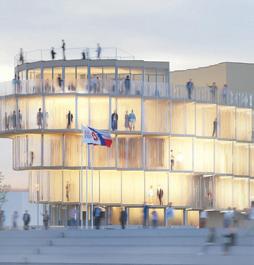
Czechia’s Talent and Creativity for Life pavilion features a spiral structure designed by Apropos Architects, symbolising vitality and upward momentum. Its barrier-free ramp surrounds a multifunctional auditorium, while its artistic glass façade reflects Czech craftsmanship and glassmaking traditions.
China’s pavilion, themed Building a Community of Life for Man and Nature — Future Society of Green Development, features a design inspired by ancient Chinese bamboo slips, symbolising the transmission of knowledge and culture. Spanning 3,500 square metres, it is one of the largest independently constructed pavilions at the Expo.

Germany’s WA! Germany pavilion focuses on the circular economy. Designed with reusable materials and minimal irreversible connections, it embodies themes of sustainability, harmony, and wonder. The term “WA” in Japanese conveys “circle,” “harmony,” and “wow,” reflecting the pavilion’s holistic approach.
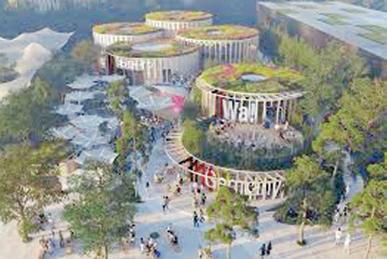
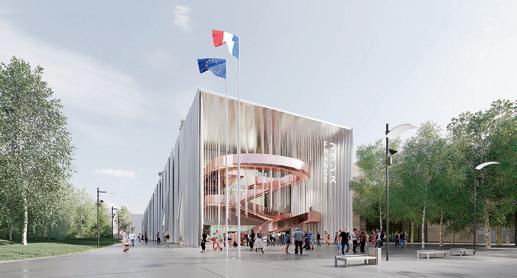
The France Pavilion, Theatrum Naturae (Theatre of Nature), combines architecture by Coldefy and CRA-Carlo Ratti Associati. Highlighting the interplay between natural and artificial worlds, it incorporates the Japanese concept of the “red thread” (Akai Ito), symbolising unbreakable connections. The pavilion encourages environmental and social commitment.

Denmark, Finland, Iceland, Norway, and Sweden present the Nordic Circle pavilion, showcasing their shared values of sustainability and innovation. This collaborative effort focuses on connectedness, trust, and technological solutions for global challenges.
Serbia’s Floating Forest pavilion draws inspiration from Ratno Ostrvo, a natural park in Belgrade. Representing the “Society 5.0” vision, the pavilion combines architecture, technology, and playfulness. Designed by Aleatek Studio, it emphasises Serbia’s cultural and natural heritage while nodding to the upcoming Expo 2027 in Belgrade under the theme Play for Humanity.
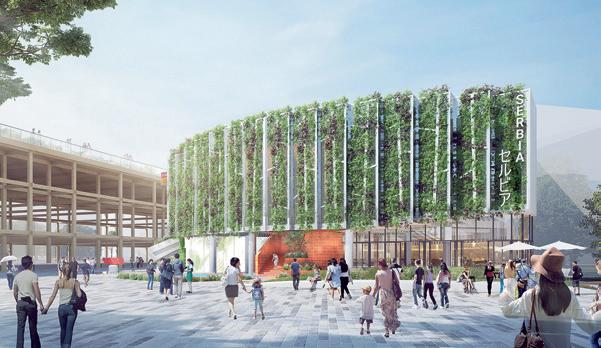
Switzerland’s pavilion, themed Life, Planet, and Augmented Human, is designed by Manuel Herz Architects. Its lightweight, recyclable structure features a cluster of spheres surrounded by plants, symbolising the harmony of nature and innovation.


The USA Pavilion, Imagine What We Can Create Together, features an open design inspired by Japanese footbridges. At its heart is a floating cube, showcasing dynamic images of American landscapes, cities, and space exploration. Themes include sustainability, education, and entrepreneurship.
Expo 2025 Osaka promises to be a vibrant showcase of global creativity and innovation. With its forward-thinking pavilions, cultural displays, and interactive experiences, the Expo offers a glimpse into a sustainable and interconnected future.
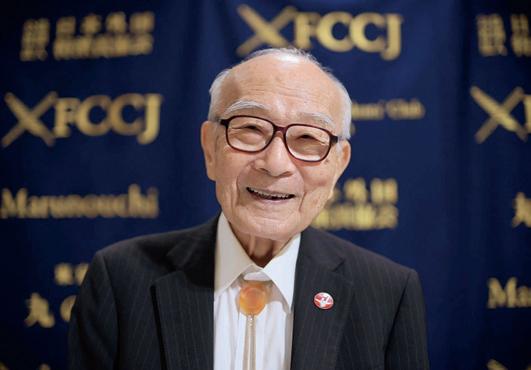
Nihon Hidankyo, a grassroots movement of atomic bomb survivors, receives the 2024 Nobel Peace Prize. Their testimonies and relentless advocacy against nuclear weapons inspire a renewed global call for disarmament
Nihon Hidankyo, the Japanese organisation representing survivors of the atomic bombings of Hiroshima and Nagasaki, has been awarded the 2024 Nobel Peace Prize for its tireless efforts to rid the world of nuclear weapons. Known as hibakusha, these survivors have dedicated their lives to sharing harrowing testimonies of the devastating human cost of nuclear warfare, ensuring the world remembers the atrocities of August 1945.
In a powerful lecture delivered in Oslo, Terumi Tanaka, co-chair of Nihon Hidankyo and a survivor of the Nagasaki bombing at the age of 13, emphasised the urgency of disarmament. “It is the heartfelt desire of the hibakusha that, rather than depending on the theory of nuclear deterrence, which assumes the possession and use of nuclear weapons, we must not allow the possession of a single nuclear weapon,” he declared.
The Nobel Committee praised Nihon Hidankyo for its role in establishing the “nuclear taboo” and for demonstrating the inhumanity of nuclear weapons through witness testimony. Chair Joergen Watne Frydnes highlighted the pressing need to uphold this taboo, warning that it is now “under pressure” in the face of rising global tensions.
The organisation, founded in 1956, sends survivors across the globe to recount their experiences, fostering empathy and action against nuclear proliferation. Mr Tanaka called on the global community to create opportunities to hear these testimonies, urging nations to universalise the Treaty on the Prohibition of Nuclear Weapons (TPNW).
The recognition comes at a time when nuclear risks loom large. Russia’s threats to use tactical nuclear weapons in the Ukraine conflict, coupled with fears over Iran’s nuclear ambitions and Israel’s defensive strategies, underscore the fragility of the nuclear taboo.
Melissa Parke, Executive Director of ICAN, lauded the hibakusha for their pivotal role in advancing the TPNW, adopted in 2017 as a landmark step towards nuclear disarmament. “Listening to Mr Tanaka describe the horrendous effects on his family and city when the Americans dropped their


atomic bomb should convince world leaders they have to go beyond simply congratulating the hibakusha. They must honour them by doing what they have long called for – urgently getting rid of nuclear weapons,” said Ms Parke.
The hibakusha’s courage and determination have kept the horrors of nuclear warfare at the forefront of global consciousness. Their stories fuel a growing movement for disarmament, reminding the world of the catastrophic consequences of nuclear weapons.
”Let us work together for a human society, in a world free of nuclear weapons and wars,” urged Terumi Tanaka, Nobel Laureate and Nagasaki survivor, in a historic speech in Oslo
In accepting the Nobel Peace Prize, Nihon Hidankyo reaffirmed their commitment to ensuring such atrocities are never repeated. “We all have a duty to fulfil the mission of the hibakusha. Their moral compass is our inheritance. It is now our turn,” concluded the Nobel Committee.
As the world grapples with nuclear tensions, the hibakusha’s message resonates louder than ever: “Never again.”

In a nation grappling with an ageing population, innovative robots like Pepper, AIBO, and PARO are being deployed to alleviate loneliness and cognitive decline among the elderly. These technological companions are transforming care in Japanese nursing homes
Japan, renowned for its technological advancements and high life expectancy, is confronting the challenges of a rapidly ageing population. To address issues such as loneliness, cognitive decline, and reduced mobility among the elderly, the nation is turning to innovative solutions in robotics.
At the forefront of this movement are social robots like Pepper, AIBO, and PARO, which have been integrated
For decades, the country has been searching for technological solutions to address the economic and social repercussions that stem from its rapidly ageing population
into numerous nursing homes and hospitals across Japan. These robots are designed to entertain, initiate conversations, and foster emotional connections with residents, thereby enhancing their mental and emotional well-being.
Standing at four feet tall, Pepper is one of Japan’s most advanced humanoid ro-
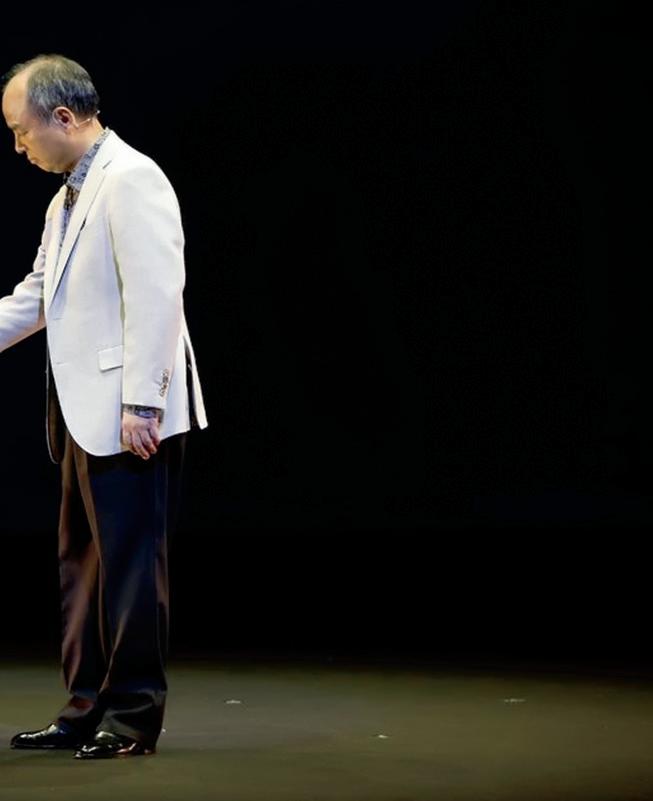
bots. It navigates on a base resembling a large white chess piece and is programmed to play songs from decades past, engaging residents in nostalgic musical sessions. Despite its lack of facial expressions, Pepper’s agile arm movements and fluid articulations captivate audiences, encouraging them to participate in activities such as calisthenics, which are reminiscent of routines broadcast on public television.
AIBO, developed by Sony, is a robotic dog that offers companionship to the elderly. Its design focuses on entertainment and emotional support, providing users with a sense of joy and comfort. Unlike traditional pets, AIBO does not require feeding or cleaning, making it an ideal companion for those who may not have the capacity to care for a live animal.
PARO is a therapeutic robot modelled after a baby harp seal, featuring soft textures and lifelike movements. When held, it emits gentle sounds and gazes with large, expressive eyes, eliciting feelings of tenderness and relief among users. PARO has been particularly effective in engaging individuals with dementia, Alzheimer’s, and other cognitive disorders, providing them with a sense of comfort and companionship.
Japan’s demographic landscape is shifting, with projections indicating a decline from the current population of 126 million to 87 million by 2070. By that time, it is estimated that 40% of the population will be over the age of 65. This trend has significant implications for productivity, housing, the pension system, and family dynamics.
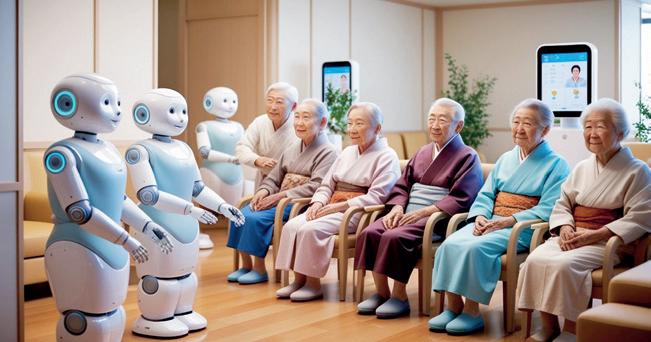
The decreasing birth rate has led to a child population of just 14.01 million, while the number of pets has surpassed that of children, reaching 15.9 million. This shift is evident in consumer trends, with supermarkets selling more adult diapers than those for babies and an increase in products catering to single-person households.
In response to these challenges, Japanese institutions are increasingly incorporating technology into elder care. The Shintomi Nursing Home in Tokyo, for example, utilises a combination of social robots and digital systems to monitor residents’ well-being. Devices analyse sleep patterns and detect when a diaper change is necessary, ensuring timely and efficient care.
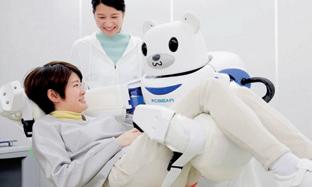
Kimiya Ishikawa, the director of Shintomi and a specialist in elderly care, envisions a future where humans and machines collaborate seamlessly in caregiving. He notes, “No human being can take care of an elderly person 24 hours a day. Only a machine can do it.”
For many elderly individuals, robots have become integral companions. Seventy-five-yearold retiree Mieko Shimada has lived with her LOVOT robot for four years. Programmed to react to caresses, LOVOT provides her with a sense of family and companionship. Shimada shares, “When you express admiration for someone all the time, it can come across as disingenuous. With LOVOT, I don’t feel self-conscious.”
As the global population continues to age, the demand for technological solutions in elder care is expected to grow. Japan remains at the forefront of this movement, leveraging its expertise in robotics to enhance the quality of life for its elderly citizens. By integrating robots into caregiving, Japan is not only addressing the practical challenges of an ageing society but also redefining the nature of companionship and care in the modern world.
In conclusion, Japan’s innovative use of social robots represents a promising approach to mitigating the challenges associated with an ageing population. Through the deployment of companions like Pepper, AIBO, and PARO, the nation is pioneering a new model of elder care that blends technology with empathy, offering valuable lessons for societies worldwide.



The Umka Cardboard Mill boasts a rich tradition dating all the way back to 1939, when it was first established to produce paper and cardboard. It is today a leader of the domestic and regional markets, notes company GM Nikola Pejović

Like all other industrial sectors, the cardboard market faces challenges that range from economic fluctuations to increasing competition. However, thanks to significant investments and a commitment to both product quality and environmentally friendly production, Umka has managed to maintain a high level of customer trust and continues to expand its capacities. Here we discuss environmental protection and investments in the community, among other topics, with Nikola Pejović, general manager of the Umka Cardboard Mill.
Your company’s journey spans 85 years and many changes to the factory. Where does Umka stand today?
— Company has faced numerous challenges over the decades, but has also achieved remarkable progress, adapting to market changes and meeting the needs of customer. Since 2003, the factory has been operating within the Kappa Star Group, which
Nikola Pejović Umka Cardboard Mill General Manager

marked the launch of significant investments in modernisation. We are today recognised as a market leader in the production of coated cardboard, both domestically and regionally, equipped with advanced infrastructure and the latest technologies.
The cardboard we produce is used across a wide range of industries, including the food, pharmaceuticals, chemical and textile sectors. Its versatility and ecofriendly qualities make it an ideal solution for various market needs, from packaging to industrial applications.
Our mill has a current annual production capacity of approximately 220,000 tonnes. However, thanks to investments realised and future development plans, we expect to increase our annual capacity to 250,000 tonnes over the coming years, thus enabling us to meet market demands even more efficiently.
Our dedication to high product quality and environmentally sustainable production allows us to maintain a high level of cus-
tomer trust. We currently collaborate with more than 40 countries across Europe and are simultaneously expanding to markets in North Africa, the Middle East and Latin America, thus strengthening our global position significantly.
Around €95 million has been invested in modernising production technology over the past five years. Are there plans for a new investment cycle?
— Absolutely, because investing in the modernising of production technologies is a key factor in enhancing our capacity, achieving higher standards of quality and strengthening our environmental responsibility. Since 2019, total investments in state-ofthe-art equipment, technologies and facilities from globally recognised manufacturers in the paper industry have exceeded €95 million, positioning the factory among Europe’s most advanced production companies of this type.
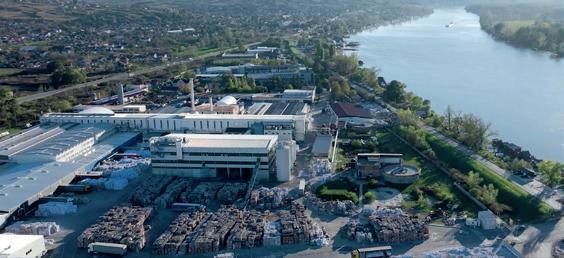
We have invested in upgrading production processes, including replacing the main cardboard production machine, which represents one of the most significant investments in the factory’s history. This modernisation has enabled a substantial increase in our capacity to process recycled paper, from 100,000 to 250,000 tonnes annually.
We laid the groundwork last year for the upgrading of our biological water treatment system, which we plan to complete by year’s end 2026. Investments will undoubtedly continue, with a focus on the further opti-
us the largest recycler in Serbia. This process has a multifaceted positive impact on the environment—we help conserve forests, reduce carbon dioxide emissions and save resources like water and energy. We thereby not only contribute to preserving natural resources, but also actively combat negative environmental impacts.
The factory holds numerous certificates that confirm our dedication to environmental standards and sustainable operations. Through our continuous innovations and the aforementioned investments in mod-
Thanks to investments realised and future development plans, we expect to increase our annual capacity to 250,000 tonnes over the coming years
mising of production processes, reducing our environmental footprint and increasing energy efficiency.
Setting Umka apart from the competition is the fact that you exclusively use waste paper as the primary raw material to produce European-quality cardboard. Does this make you an environmentally friendly company?
— Definitly! Utilising waste paper as the primary raw material for the production of cardboard reflects our commitment to preserving natural resources. Furthermore, our cardboard is completely biodegradable, meaning it doesn’t linger as waste in nature. We process approximately 220,000 tonnes of waste paper each year, making
ernisation, we have become synonymous with high-quality, eco-friendly products.
You head the company that was the first in Serbia to receive SA8000 certification! What does this say about your commitment to high standards of social responsibility and working conditions, as well as ethical practices?
— Our SA8000 certification is a result of our dedication to high standards of social responsibility, the protection of workers’ rights and ethical business practices. By implementing this certification, we have laid solid foundations for fair and safe working conditions, respecting employee rights and ensuring that our business partners and customers are aware that
we operate in line with the highest ethical standards.
Another aspect of our social responsibility is our commitment to the community. We collaborate strategically with numerous local education institutions. Through our dual education and work-based learning programme, we have spent the past four years offering young people the opportunity to acquire practical skills at our factory and enhance their professional goals. Investing in education and creating employment opportunities for young people in our factory represents a significant step in terms of developing the community and strengthening its potential.
You have managed to adapt to market changes and customer needs despite numerous challenges, and you continue to do so. What are your expectations for growth and expansion over the coming years?
— Like any other industrial sector, the cardboard market faces challenges ranging from economic fluctuations to increasing competition. Nevertheless, our continuous growth is based on adapting to market changes and improving product quality consistently, as well as providing solutions that meet the specific needs of our clients.
We expect to achieve further growth over the coming years through market expansion, both regionally and globally. Our focus on innovation, environmental initiatives and product quality enables us to compete on the global market and overcome any challenges that come our way.

“Vrnjačka Banja has successfully overcome the concept of a ’tourist season’”
Boban Đurović President of the Municipality of Vrnjačka Banja
Belgrade’s Nikola Tesla Airport has soared to new heights in 2024, recording its highest passenger traffic to date. According to figures released by VINCI Airports, the operator of the airport, nearly 8.4 million passengers traveled through the hub, marking a 5.3% increase from last year and a remarkable 36% rise compared to 2019. The airport also managed over 86,000 flights, a 3.4% year-on-year uptick and 22% higher than pre-pandemic levels in 2019.
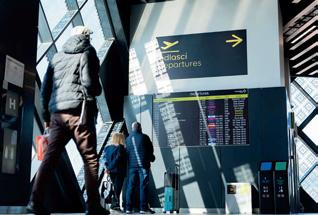
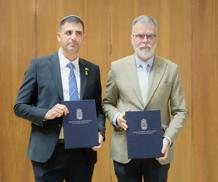
Serbia and Israel have signed a Memorandum of Understanding in Belgrade to enhance cooperation in telecommunications and postal services. The agreement outlines steps for developing the ICT sector, cybersecurity, telecommunications infrastructure, 5G networks, and high-speed optical internet. Israeli Minister of Communications Shlomo Karhi called the Memorandum an important milestone reflecting a shared vision for advancing ICT and economic growth.
The National Bank of Serbia’s (NBS) gross foreign exchange reserves reached a record €29.294 billion at the end of December 2024, marking a €4.38 billion increase compared to the previous year. The reserves provide 167.2% coverage of the M1 money supply and cover 7.4 months of imports, more than double the adequacy standard. Net FX reserves also hit a historic high of €24.69 billion, up €3.91 billion from 2023.
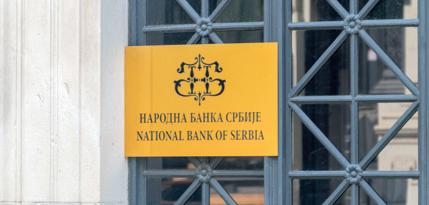

„Gender equality isn’t just a value at Imlek, but rather an integral part of our business strategy”
Marija Malović Group Corporate Affairs and Communications Manager at Imlek
Serbia ranked as one of Europe’s fastest-growing economies in 2024, according to a report by Macroeconomic Analyses and Trends (MAT). The report highlights that Serbia’s real gross domestic product (GDP) grew by approximately 3.8% year-on-year during the first 11 months of 2024. The country’s industrial growth was driven primarily by the manufacturing sector, bolstered by new production capacities. Short-term prospects are even more optimistic with the announcement that production of a new electric car model at FCA Serbia’s factory will begin in late January.


In January 2025, Serbia announced plans to enhance its renewable energy capacity by partnering with France, the U.S., and China. This initiative aims to reduce reliance on fossil fuels, bolster energy security, and attract foreign investment. The government is focusing on developing wind, solar, and hydropower projects to achieve these goals.
The Serbian government has announced plans to introduce a digital identity wallet by the end of 2025. This initiative aims to streamline access to various public services, enhancing efficiency and user convenience. The digital wallet will allow citizens to securely store and manage their personal identification documents electronically, facilitating easier interactions with governmental agencies.


Thanks to Miodrag Kostić’s gift to the Serbian society that’s worth over 25 million euros, an area of 5,500m² in one of Belgrade’s most beautiful buildings has been transformed into the first centre for the research and popularisation of science in Serbia, representing the largest such centre in the region
The Miodrag Kostić Endowment has established the Palace of Science in Belgrade, located at 11 Kralja Milana Street. This project, which is of monumental importance to the development and support of science and education, reintroduces the concept of endowments in a grand manner, as it represents the largest philanthropic donation in the region since the early 20th century.
“Miodrag Kostić founded this endowment with the aim of leaving a lasting legacy to Serbian science and society. While this is the pinnacle of his philanthropic work, the opening of the Palace of Science is, for us, much more than the establishing of an endowment that bears his name. It is an investment in the fu-
ture, technological progress and innovation, as well as an investment in our talented people who will drive Serbia’s future development. In addition to the research that will be conducted at 20 science centres, the popularisation of science is also an important goal of the Palace of Science. Special attention has been paid to programmes for primary and secondary school pupils, but this is nonetheless a place for all generations – from children and youth, to the academic and scientific research community,” said Aleksandar Kostić, member of the Board of the Miodrag Kostić Endowment.
“This monumental building, rich in architectural heritage and historical significance, had to be seamlessly integrated with
modern technologies and contemporary content to create optimal conditions for conducting research at the science centres. We have breathed new life into this space precisely on the centenary of the building’s construction. The doors of the Palace of Science are open to the public, and we believe all generations will enjoy our exhibitions and the planetarium, as well as many other contents prepared by the Miodrag Kostić Endowment,” said Endowment board member Aleksandra Stojanović.
Visitors to the Palace of Science can explore a permanent exhibition featuring over 30 interactive and educational exhibits that demonstrate, in an engaging way, scientific phenomena and discoveries related to humanity, the Earth, technology and the universe. Among the highlights is the largest interactive globe in Europe, which is three metres in diameter and displays more than 500 projections using NASA’s database. The first guest exhibition, focusing on sharks, has arrived from New York’s American Museum of Natural History.


The Palace of Science also houses a planetarium with 36 seats, offering a 360-degree visual spectacle with hourly projections exploring the mysteries of the universe. The Show Lab presents projects from institutions that collaborate with the Miodrag Kostić Endowment, while VR capsules provide virtual tours of other locations through interactive 3D 360° video experiences. Additional features include a children’s science corner, restaurant and bookstore, as well as a café where robots serve coffee.
With the opening of the Palace of Science, Belgrade has gained a new and significant landmark in its cultural and tourist offer, solidifying its place on the map of Europe’s leading centres of science.
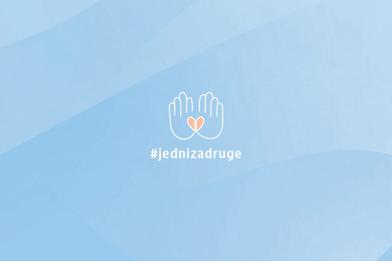
I





Retail chain dm drogerie markt, a leader in corporate social responsibility in Serbia, concluded its anniversary year with numerous humanitarian activities and monetary and in-kind donations
n the year marking two decades of the company’s operations in Serbia, dm allocated 46.9 million dinars to various projects and donations aimed at fos tering community development and wellbeing.
“An anniversary year evokes a special sense of pride in all of us at dm for everything we’ve achieved together over the past two decades, thanks to the selfless trust and support of the community, our colleagues, partners and team members. The motivation for our signature humanitarian initiatives stems from listen ing consistently to the needs of the communi ty and taking concrete steps to support them as much as possible. When the desire to help comes from the heart, and when we are united in that goal, the result is many small and significant victories that inspire us to take on new challenges,” said dm Serbia and North Macedonia Director Vesna Stojanović.



Thanks to customers who supported the unique Giving Friday initiative, dm donated 5% of its total daily revenue on Black Friday – amounting to 6,051,843 dinars – to the Serbian Red Cross Soup Kitchens. The company also donated five million dinars to NURDOR for the renovation and furnishing of family accommodation facilities. Additionally, through its digital platform dmLIVE, a special charity broadcast attracted 24,822 live

In an effort to support children, dm provided goods worth nearly three million dinars to various institutions and organisations, while more than 6.5 million dinars was allocated to the education sector in the form of goods and equipment. Many of these donations were made possible through the significant number of dm store openings and re-openings in 2024.
The company directed a total of 4.9 million dinars to homes for children without parental care and social welfare centres. It also supported socially vulnerable groups, including associations for people with disabilities, the elderly, and individuals with autism, with goods and equipment worth 2.6 million dinars.

The dm chain continues its comprehensive Women’s Health campaign, allocating over 13 million dinars through the “Together for Each Other!” competition to support projects in this field. Women’s empowerment was further advanced through the ongoing support of 10 safe houses in Serbia, with donations of goods valued at

Company dm also organised its traditional Movember campaign, including a charity stand-up comedy night, to raise awareness regarding the prevention of prostate and testicular cancer, as well as mental health preservation. The proceeds from ticket sales – totalling 200,000 dinars – were donated to charity.


Thanks to its Giving Friday initiative, dm drogerie markt received the prestigious “Philanthropist” award and the “Campaigns with Purpose” accolade at the eponymous festival. For its continuous philanthropic engagement, the company was also honoured with the “Kindness Recognition” award.


“Running a company is a lot like navigating a sailboat“
Tomaž Lah CEO of Nektar Natura
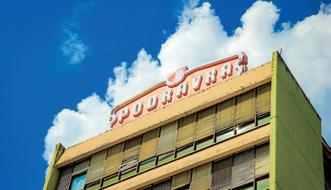
Lidl Crna Gora has received approval to build a major retail and warehouse facility in Zeta, adding to its expanding footprint in the country. The new site will cover 2,584 square meters of above-ground space and is part of the company’s broader strategy to increase its presence in Montenegro. This approval follows the purchase of land in Zeta, a region undergoing urban development adjustments.
Podravka has announced that its subsidiary, Podravka Agri, received approval from the Croatian Comptetition Agency (AZTN) to acquire Fortenova’s agricultural segment. The deal, worth a staggering 333 million euros, signals Podravka’s strategic intent to strengthen its foothold in the industry. The acquisition encompasses renowned names as such Belje Plus, PIK Vinkovci Plus, Vupik Puls, Energia Gradec, Belje Agro-Vet Plus, and Felix Plus.

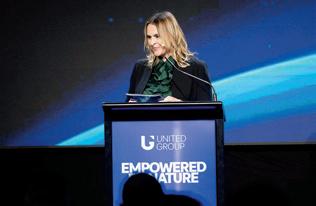
The investment encompasses three solar power plants, one of which is already operational, and a large wind farm poised to become one of the few of its kind in the country. Together, these projects are expected to generate approximately 310,000 megawatt-hours of electricity annually. By 2027, this output will cover 160% of the energy needs for United Group’s Bulgarian operations and 65% of the company’s total electricity consumption. The initiative not only advances the Group’s sustainability goals but also supports Bulgaria’s transition to green energy.

“Our role is to provide reliable support for investors throughout all stages of their projects“
Snežana Đurović Director of The Montenegrin Investment Agency (MIA)

Slovenia’s SIJ Group has signed a landmark Memorandum of Understanding with the Saudi Arabian government, pledging €1.5 billion to establish a state-of-the-art manufacturing facility in Ras Al-Khair, Saudi Arabia. The collaboration, in partnership with WAHAJ, will focus on producing advanced electrical steel and premium cold-rolled coils, vital components for electric vehicle (EV) manufacturing.

Albania has thrown down the gauntlet in rural economic reform, announcing an unprecedented tax exemption for 500 agro-tourism ventures. In a bid to transform its picturesque countryside into a hub for sustainable tourism and entrepreneurship, the government has waived corporate income, small business, infrastructure, and property taxes for qualifying businesses.
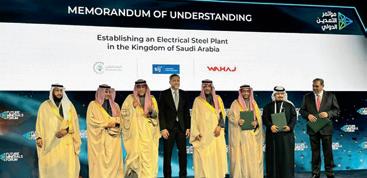

Bosnia and Herzegovina recorded a significant rise in motor vehicle registrations in December 2024, with 8,505 new registrations marking a 20.8% increase compared to the same month in 2023, according to the Agency for Statistics of BiH. Passenger cars accounted for the majority of registrations at 82.8%, followed by trucks at 7.1%, while mopeds represented a minimal 0.2%. For the entire year, the country registered 110,736 vehicles for the first time, a substantial 21.7% increase over 2023. Passenger car registrations surged by 23.8%, while trucks saw a 26.1% rise.
Trump’s administration has launched an unprecedented overhaul of U.S. digital finance policy, rapidly advancing crypto regulation, banning CBDCs, and strengthening stablecoins. This aggressive push positions the U.S. as a global leader in fintech innovation, but its long-term success depends on delivering real benefits to everyday Americans, not just financial elites
Trump’s administration has launched an aggressive overhaul of U.S. digital finance policy, redefining the regulatory landscape in just five days. Unlike the traditional 100-day plans of incoming CEOs and presidents, Trump’s rapid action signals a clear commitment to positioning the U.S. as a leader in fintech innovation. His administration’s sweeping policy changes have lifted restrictions on crypto markets, introduced new leadership at the SEC and CFTC, and initiated the development of a tech-neutral regulatory framework.
The President’s Executive Order on digital financial technology set a decisive course for the next 12 months, banning CBDCs, securing stablecoins backed by industry players, promoting public blockchains, ensuring access to banking, and providing long-awaited regulatory clarity. The repeal of SEC’s
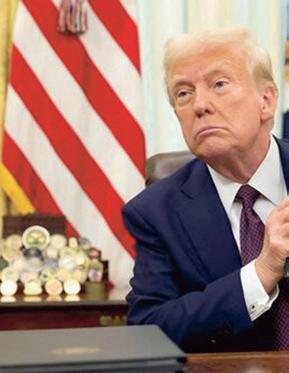
controversial SAB121 and the establishment of a new crypto task force empower institutional capital markets to fully enter the crypto space, flipping the narrative that previously saw crypto innovators facing regulatory persecution.
Trump’s pro-crypto stance is not only a strategic economic move but also aligns with his personal business interests, including recent ventures into digital assets. The new administration’s vision of financial democratization through crypto is seen by many as an opportunity for working Americans to accumulate wealth, much like previous generations did through traditional asset ownership. However, this vision comes with risks—if financial elites and political insiders are the only ones benefiting, public trust in the initiative could erode, damaging both the administration’s credibility and
the long-term future of the digital asset industry.
Regulators now face the challenge of balancing policy enforcement with the administration’s broader deregulatory agenda. The SEC and CFTC must craft a framework that fosters growth while maintaining essential financial safeguards. This push for regulatory clarity is critical, as the global competition for leadership in fintech intensifies.
The U.S. is racing against nations like India, Indonesia, Brazil, and the UAE, all of which have rapidly growing crypto markets and regulatory landscapes designed to attract capital and talent. Internationally, the landscape is shifting as governments re-evaluate their crypto policies. Reports suggest that China, despite its existing ban, may reconsider its stance following the U.S. elections. Meanwhile, the UAE is making significant moves, reportedly holding $40 billion in bitcoin—double

The U.S. has decisively entered the competition to become the world’s leading crypto hub, but the battle is far from over
the amount held by the U.S. government—while the UK faces mounting pressure to accelerate its own crypto regulations.
The next six to twelve months will be crucial for U.S. policymakers and regulators. If they succeed in building a competitive regulatory environment, the U.S. could solidify its position as the global hub for digital finance. However, if missteps occur, other nations may seize the opportunity to attract fintech investment, reshaping the balance of financial power in the years to come. The race is on, and those who move the fastest stand to gain the most.
For 22 years, we have been the premier English-language business publication in Serbia and the Adria region, reaching top executives, decision-makers, and industry influencers. As we expand into conference organizing, we’re looking for ambitious, creative, and driven professionals to be part of our team. If you’re ready to work in a dynamic, high-impact environment, this is your chance!
Apply now and grow with us!
office@cordmagazine.com

“The only place where success comes before work is in the dictionary”
Vidal Sassoon renowned hairstylist and businessman

The Spanish government is considering measures to address the housing crisis, including a 100% tax on property purchases by non-EU nationals. Prime Minister Pedro Sánchez announced the plan, aimed at tackling high rents and improving housing accessibility through increased supply, better regulation, and enhanced support.
For the first time, solar energy overtook coal in electricity generation within the European Union last year, according to data from the energy think tank Ember. Solar power accounted for 11% of the EU’s energy mix in 2024, surpassing coal, which dropped below 10%, as the bloc pushes for renewable energy to meet climate goals and enhance energy security

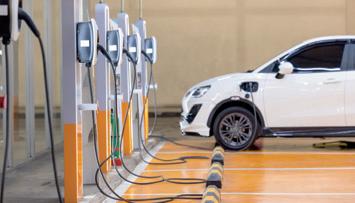
Global sales of battery electric vehicles (excluding plug-in hybrids) grew by 25% in 2024, reaching a record 17.1 million units, according to Rho Motion. China solidified its position as the world’s leading EV market with 11 million sales, a 40% increase from 2023. Meanwhile, EV sales in Europe declined by 3% to 3 million, marking the first drop after years of growth. Sales also rose in the US and Canada, reports AFP.

“The secret of success is to do the common thing uncommonly well”
John D. Rockefeller Jr. American financier and philanthropist

Sweden has started building its second-ever storage facility for spent nuclear fuel, designed to securely contain highly radioactive waste for 100,000 years. This marks a significant step in addressing a long-standing challenge for the nuclear industry, with Finland being the only other country nearing completion of a permanent repository. According to the World Nuclear Association, around 300,000 tons of spent fuel globally require safe disposal, most of which is currently stored in cooling pools near the reactors that produced it.
The IRS has announced temporary relief on new cryptocurrency tax reporting requirements, delaying enforcement until 2025 due to ongoing legal challenges. This move provides crypto investors additional time to adjust to the evolving regulatory landscape. Meanwhile, taxpayers are reminded to report digital asset transactions, as cryptocurrencies are treated as property for tax purposes.

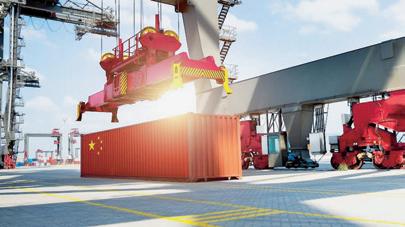
China’s exports reached a record €3.4 trillion last year, a 7.1% increase compared to the previous year, marking the highest level since export measurements began. Imports also rose by 2.3%, t otaling €2.45 trillion, while total trade grew by 5% to €5.85 trillion, according to CCTV. In December alone, exports surged 10.7% yearon-year, with imports increasing by 1%, reports AFP.
From transforming recruitment in Japan to joining the New York Yankees, a journey of innovation and ambition

Soichiro “Swimmy” Minami Japanese businessman
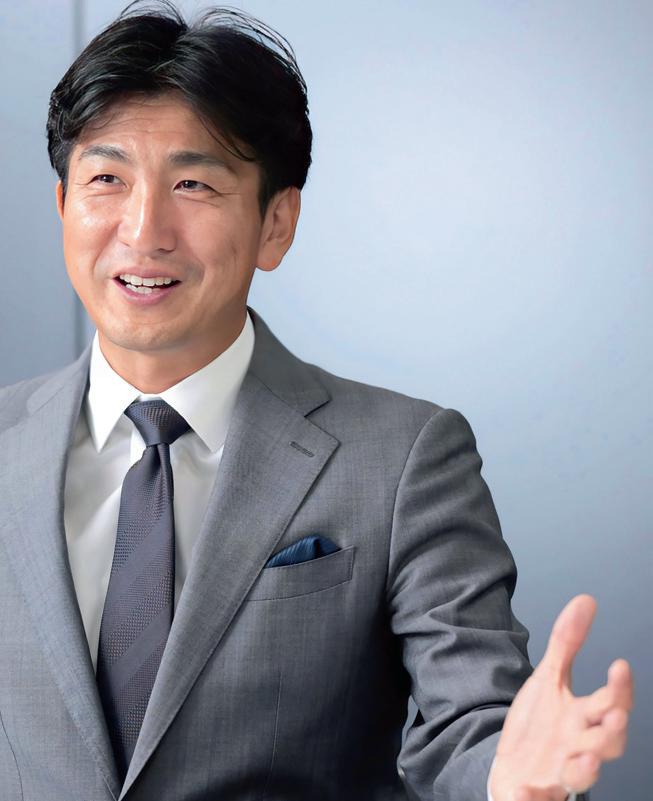
Few entrepreneurs embody the confluence of technological innovation, business acumen, and cultural adaptability like Soichiro “Swimmy” Minami. With achievements spanning human resources technology and professional sports, Minami has forged a career that seamlessly bridges industries while addressing critical societal challenges.
Born in Japan, Minami’s early life was shaped by global experiences. At the age of six, he moved to Toronto, Canada, where he developed an appreciation for diverse cultures and ideas. Returning to Japan and later studying at Tufts University in the United States, Minami
Minami transformed Japan’s recruitment industry with BizReach, often dubbed the ‘LinkedIn of Japan
He became a limited partner of the New York Yankees, blending business acumen with a lifelong passion for baseball
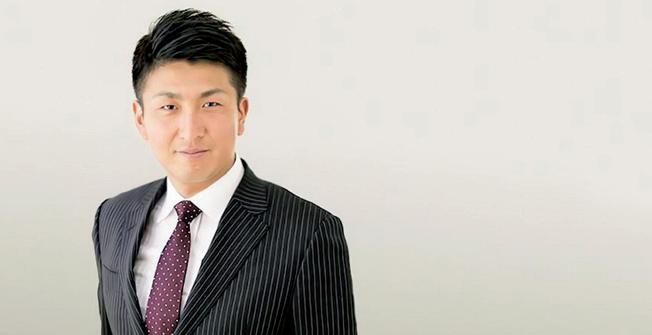
earned a double major in economics and international relations, laying the groundwork for his entrepreneurial vision.
Minami began his professional journey at Morgan Stanley in Tokyo, where he worked in M&A advisory, gaining valuable insights into corporate strategy. In 2004, he became a founding member of the Tohoku Rakuten Golden Eagles, a professional baseball team in Japan. This pivotal experience, under the mentorship of Rakuten CEO Hiroshi Mikitani, reinforced his belief that business should drive positive societal change.
In 2009, Minami launched BizReach, a groundbreaking career networking platform that reshaped Japan’s recruitment industry. Often compared to LinkedIn, BizReach connects midto senior-level professionals with employers, tackling inefficiencies in traditional recruitment.
In 2020, Minami transitioned BizReach into Visional, Inc., a holding company that oversees a suite of human resources solutions, including HRMOS, a cloud-based platform integrating recruitment, talent management, and analytics. By leveraging data-driven insights, Visional addresses
critical issues like Japan’s aging workforce and declining birthrate.
Visional’s 2021 debut on the Tokyo Stock Exchange marked a major milestone, with the company achieving a valuation of $2.5 billion. This accomplishment not only elevated Minami to billionaire status but also under-

scored his influence in Japan’s HR technology landscape.
In April 2023, Minami’s love for baseball came full circle when he became a limited partner of the New York Yankees. Inspired by his childhood admiration for the team and its legendary figures, he sees this venture as an opportunity to deepen his understanding of professional sports management and broaden his impact in the industry.
Minami’s contributions have garnered international recognition, including his selection as Japan’s representative for the EY World Entrepreneur Of The Year™ 2024. His leadership prioritizes equity, innovation, and the reduction of unconscious biases in workforce management.
Soichiro Minami’s journey is a testament to the power of vision, resilience, and global thinking. From transforming Japan’s recruitment industry to engaging with one of the world’s most iconic sports franchises, he continues to redefine what it means to be a modern entrepreneur. With a steadfast commitment to societal betterment, Minami inspires a new generation of leaders poised to leave their mark on the world.
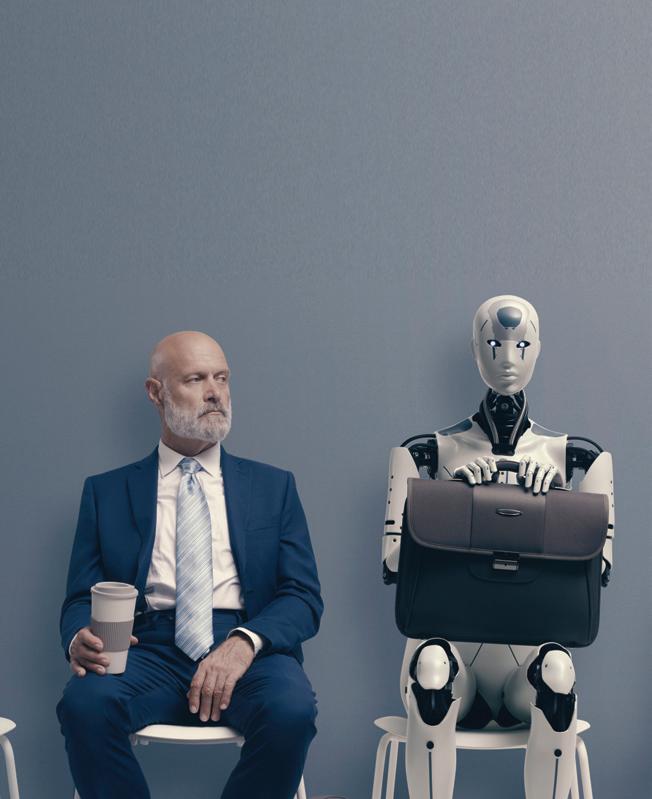

Ingram Micro HRBP for the SEE Region
Martin Laschkolnig Founder and Director of the Institute for
the Development of Potential in Linz, Austria
84

86
Slavica Krezović Head of Human Resources at Bee IT
Andrijana Aleksić Jevtić Executive Director of the Human Resources and Organisation Management Sector at NLB Komercijalna Banka
88 When Productivity Meets Well-Being Productivity
90 People Come First
Dragan Rosić Apatin Brewery HR Director



By Berna Öztinaz, President of the European Association of People Management (EAPM), CHRO at Genel Energy, and Board Member of the WFPMA
AI is transforming HR by automating routine tasks, but the essence of leadership remains deeply human. The future belongs to organisations that prioritise empathy, inclusion, and meaningful connections alongside technological advancements.
AI is reshaping our profession by tackling repetitive tasks and offering deeper insights into workforce dynamics. This frees us to focus on the human side of HR—coaching, motivating, and building genuine connections with employees. My predecessor, Even Bolsted, summed this up perfectly in CorD’s annual HR edition of 2022 when he said, “Let Humans Concentrate On What Humans Do Best.”
That phrase has guided my own thinking, because I believe technology should augment, not replace, our most essential human qualities. AI can screen résumés more efficiently and forecast skill gaps, but only people can truly listen, empathise, and inspire.
Why is human connection more important than ever?
– We’re going to see a more holistic understanding of employees as individuals with aspirations, responsibilities, and unique life circumstances. As workplaces become hybrid or fully remote, it’s easier to lose sight of personal interactions. Yet I’ve found that genuine engagement—asking after someone’s wellbeing, recognising their hard work, and offering flexibility when needed— can make all the difference in performance and loyalty. We’re moving away from one-size-fits-all structures to more adaptive, person-centred approaches. If we keep empathy at the heart of our strategies, we can create environments where people thrive regardless of location or schedule.
What challenges do organisations face in attracting and retaining talent?
— The challenge often goes beyond compensation. Talented people want roles that align with their values and give them room to grow. They’re drawn to open, inclusive cultures where leaders communi-
cate transparently. This means every employer—from large corporations to startups—needs to reflect on what sets them apart. I’ve seen organisations that frame internal mobility and continuous upskilling as core perks. Those that genuinely invest in their employees’ growth tend to foster long-term commitment and a sense of shared purpose.
How can leaders create a culture of shared purpose and growth?
— It starts with honest dialogue. Leaders should communicate why changes are happening, how decisions are made, and what the overall strategy aims to achieve. Transparency helps employees see where they fit into the bigger picture, and that sense of belonging encourages resilience during uncertain times. We also have to remember that inclusion and well-being aren’t optional add-ons—they’re integral to high-performing teams. When people feel heard and supported, they’ll adapt alongside your organisation, rather than resist it.
What does the future of HR look like in 2025?
— I see a workplace in which technology is a powerful partner for people, enabling them to focus on creativity, problem-solving, and collaboration. AI will become an even more seamless part of recruitment, performance reviews, and learning pathways, but the art of leadership will still revolve around human interaction. We’ll continue to refine flexible work models, emphasising well-being and individual growth as core priorities. Above all, I believe that aligning business goals with ethical, inclusive cultures will define success. If we keep our focus on human potential—supported by intelligent tools—we will shape a future where everyone can do their best work.
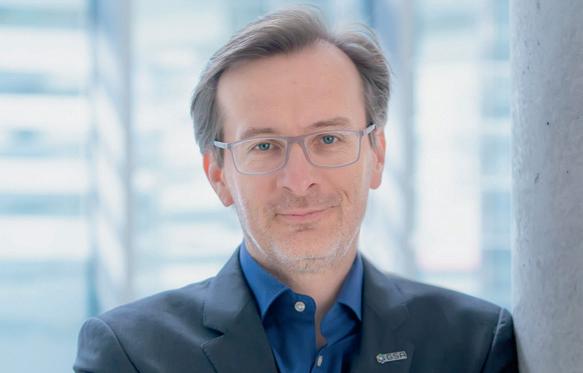
Founder and Director of the Institute for the Development of Potential in Linz, Austria
We cannot separate our private and working lives, because we take our worries from one into the other. People need purpose, community and the feeling that they matter – that’s what truly drives engagement ~ Martin Laschkolnig
Martin Laschkolnig is a visionary leader and expert in organisational growth, leadership and employee engagement. As a keynote speaker at the upcoming HR Experience conference in Belgrade, he will share his insights into fostering trust, empowering teams and shaping the future of work. In this interview, we explored the role of leadership in unlocking human potential, the impact of continuous
development and the evolving relationship between technology and workplace culture.
How can organisations create environments that truly unlock the full potential of their employees and foster both individual and collective growth?
of trust and the management of expectations; things that are often implied by the buzzword of “Psychological Safety” that we hear so much about these days. It comprises trust in the company itself as well as trust in the immediate leadership. So, this is a lot about the alignment of communication and the actual action that is taken. It’s not about always knowing what’s going to unfold. Today, nobody knows the challenges that lie INTERVIEW
— If we set aside the basics, like a liveable wage, etc. – as they should be a given – it ultimately boils down to creating an environment
ahead – the uncertainties are far too great for that. However, communicating that honestly and respectfully is a crucial indicator.
In this modern world, I believe we are beyond the age of the “lone wolf leader” who makes all decisions by themselves. Rather it’s about collaboration, about coming together to discuss the challenges and bringing all the perspectives to the table, so that we can come up with the best possible solution. And then enable the people to actually go out and execute. If you create a game plan and then micro-manage it, all engagement will be killed. Be there to help them, coach them, but also – if possible – let them make and learn from their own mistakes. Preferably in an uncritical environment, of course. We don’t want to let pilots make mistakes when flying, which is why they are heavily trained in simulators. But that, luckily, doesn’t apply to most environments. There we can go out and try stuff out and make the corrections to our mistakes.
What role does leadership play in empowering employees? How can leaders align their actions to inspire and support their teams effectively?
— The role of leadership in empowering employees is critical. People join a team for the company, but they leave it due to the failure of their immediate leadership. So, the effect of a good role model and leader is absolutely critical. It is about the little things, daily communication, the trust that you build up through interactions in the team, so they know that they can be open about their strengths and weaknesses, and that they are still accepted for who they are. So, again, this boils down to trusting one another and it’s therefore extremely important that a leader is a person who honours their word. If you, as a leader, are not able to deal with criticism, then you should not be a leader. People usually want to be helpful, so they are
actually trying to improve things when they voice a criticism. Try to separate the statement from the person, observe the facts and see what can be done to make it better. There are few things that are more helpful in building a positive culture than when you have the feeling that you can contribute, that you are listened to and that you are taken seriously. This doesn’t mean that you can’t renegotiate agreements or change directions, but you should never override a previous agreement without first communicating that properly with the people involved. Also don’t pretend to be perfect, as nobody is! Rather, be open about our human nature and acknowledge that we all make mistakes at times. A leader who honours their mistakes and owns them will have loyal team members, and this will encourage open communication of mistakes and ways that we can fix them, ultimately leading to better results for everyone involved.
Mistakes occur because of misunderstandings way too often, because expectations aren’t communicated clearly enough. So, it’s a good idea to not only issue orders, but also to ensure that they have been understood properly and that everybody is clear about what’s expected of them.
THE OLD JOKE GOES: THE CFO ASKS, “WHAT IF WE INVEST IN OUR PEOPLE, AND THEN THEY LEAVE?” TO WHICH THE CEO ANSWERS, “WELL, WHAT IF WE DON’T AND THEY STAY?”
What are the key benefits of investing in education and continuous development for employees? How can companies structure these efforts to achieve the greatest impact?
— Well, as the old joke goes: the CFO asks, “What if we invest in our people, and then they leave?” to which the CEO answers, “Well, what if we don’t and they stay?”
One mistake that I see repeated over and over is the promoting of the best performing people to be the leaders of their department. So, the best salesperson is promoted to leader of the sales department, and all too often these people are miserable in their new role, because they love selling, but they don’t love leading and maybe don’t even have the skills for that. One of the critical indicators is to build a relationship with people, to be interested in them, to see what they are do-


A LEADER WHO HONOURS THEIR MISTAKES AND OWNS THEM WILL HAVE LOYAL TEAM MEMBERS, AND THIS WILL ENCOURAGE OPEN COMMUNICATION OF MISTAKES AND WAYS THAT WE CAN FIX THEM, ULTIMATELY LEADING TO BETTER RESULTS FOR EVERYONE INVOLVED
ing, for example, in their free time, are they engaging in a sports club etc., are they taking on leadership rules in these environments? This can be a great indicator that somebody could prove to be a good leader of a department in your company, even if they aren’t the department’s most brilliant subject matter expert.
Another element is a culture of ongoing feedback. I’m not a big fan of performance reviews every half a year, because engagement depends on a timely feedback culture. This is what I call catching them when they do something right, and noticing and applauding them for it. This is much more effective and has
a much higher impact on their engagement than when you bring that up half a year later.
One common misconception is that we hire people with great skills and then try to train them to adopt the company culture. If somebody is a very skilled person in their field, but their culture does not match that of the company, i.e. the way we prefer to treat each other here – maybe they are even disloyal and only thinking of their own benefit, instead of being a team player – then they can be the most skilled person and they will still kill the team spirit and the engagement of others. So, my recommendation is to hire for character and cultural fit, and then work on the skills they need to possess. It is thus much easier to integrate them into a team and create a common climate of trust and teamwork.
I also want to emphasise the importance of integrating organisational development into the ongoing leadership culture of the company as a whole. This isn’t only something that HR does and implements, rather it needs to be a strategic goal of the entire C-level suite in the company. We can no longer separate the training and developing of employees from the overall enterprise culture.
In your experience, how does fostering creativity within teams contribute to organisational success? What practices can leaders adopt to encourage it?
— Creativity is important, and it’s also wise to notice that not all people are creative. Some need a lot of structure, and these people are really good at getting things done in a consistent and thoughtful manner. And sometimes it’s good to bring those people together, even though they might irritate each other – because the others lack structure on the one side and are way too creative on the other. But forging an understanding between these two kinds of people can lead to new insights that can help everybody to
better understand the needs of the other side and how to make processes run smoother for everyone involved.
Many employees resign over dissatisfaction with the way they’ve been treated by their employers. Initiatives like the four-day workweek and the ‘right to disconnect’ are gaining traction in Europe as ways to enhance employee wellbeing. In your view, are we entering a new era in which the work environment is being reshaped to prioritise workers’ wellbeing, and what role do leaders play in driving this change?
— I don’t think a four-day work week is, per se, the solution to the problems we are facing nowadays. I think people lack inspiration, community and the feeling of actually being able to contribute to something that’s bigger than themselves. We all want to make a difference and to have the feeling that we are seen and appreciated in what we do. If we have a strong enough reason, we can also endure very difficult circumstances. Don’t get me wrong, I’m not promoting making it difficult for your team, but I’m trying to emphasise that the human connection and the feeling that we have each other’s back and that our community cares for each other is a greatly underestimated factor when it comes to the engagement of employees. And a simple way to assess this is to ask yourself (and your team members): Am I looking forward to going back to work on Monday, or am I already ready for it to be Friday by Tuesday?
Now, of course, if external conditions are difficult, e.g. if a young family doesn’t have proper childcare, that will harm their ability to be fully present in the workplace. These things need to be remedied. We cannot separate our private and working lives, because we take the worries of our private lives into work and take our work stresses home to our private lives.
Ingram operates in more than 200 countries and has more than 24,000 employees, Certified as a “Great Place to work”, it has a 95% score on the HRC Foundation’s Corporate Equality Index

Technology is changing and AI is assuming its own role, while people are still at the centre of everything and my motto remains ‘think globally, act locally’ – says Katarina Jovanović Bućan, who has spent more than 20 years working for global companies and with whom we discussed HR trends, staff shortages and the issue of employee turnover.
How much does it mean to you that you have the backing of a major corporation with clear rules and processes? Does that provide you with both strength and structure?
— Throughout the years, our executives and teams have seized opportunities, our leaders are overcoming obstacles with resilience, we have reached many milestones and amassed incredible achievements. The Ingram journey is possible thanks to the exceptional talent of our team, our customers and vendors, as well as the invaluable support of our partners. We have continued to innovate, by thinking globally while acting locally, and I believe strongly – as a professional oriented towards the HR business – that aligning global strengths and local needs is one of our greatest strengths, as there’s no limit to what we can do when we
Ingram Micro HRBP for the SEE Region
work together. Finally, if as a company we want to continue evolving rapidly, we need to keep focusing on upskilling our leaders and employees, remain open, learn daily and thus evolve.
More than 80% of companies worldwide are reporting a lack of qualified IT experts and indicating a high employee turnover rate among tech experts. How does Ingram Micro deal with this issue? — Ingram Micro is always progressing when it comes to creating an environment in which every person finds their own role and place; where employees are engaged not just because they are working for one of the world’s leading technology companies or because we are working on innovative technologies and projects, but also because we are a team in which the tenets of our success striving to cultivate a positive and productive work environment and every function - talent acquisition, talent development, HR business partnerships, diversity and inclusion, employee relation and trusted leaders - plays a crucial role.
We aim to stay connected with the needs of the market, to support each other and to be open to the needs of our partners and vendors. While feeling appreciated, meaningful and involved in daily company life, we are to-
WE ARE FOCUSED ON INTERNAL MOBILITY, GROWING POTENTIALS WITHIN THE ORGANISATION AND DEVELOPING A PROPER MINDSET AND AMBITION AMONG OUR EMPLOYEES

gether shaping tomorrow, as both local and global teams. So, if you are results-oriented and responsible, and if you are talented and love to work and collaborate with others, Ingram will make sure to retain you and to gain your trust and provide opportunities to work together. We are focused on internal mobility, growing potentials within the organisation and developing a proper mindset and ambition among our employees. On the market and talent acquisition side, our management and HR team are led by principle: “Hire character, train skills.”
How does Ingram Micro approach Generative AI, which is becoming a key partner in many aspects of business?
— In the modern business environment, AI is a key partner for continuous growth, and Ingram Micro has recognised this for over 45 years. The arrival three years ago of Sanjib Sahoo, an innovator and leader in technological advancements, has further enhanced the development of AI platforms and the prediction of future trends. Locally, under the leadership of Vladimir Popović and with high business standards, Ingram Micro remains focused on partnering and digitalisation, while maintaining a clear awareness that people are at the centre of all business initiatives.
“Our vision is to transform the HR function into a strategic partner in employee development, where feedback plays a crucial role in their professional growth and personal satisfaction,” says Slavica Krezović, Head of Human Resources at Bee IT
SLAVICA KREZOVIĆ Head of Human Resources at Bee IT


Decision-makers must today balance employee retention with the recruitment and selection of new talent. Any assistance in this area is welcome—especially in the form of a tool that helps assess both soft and technical skills while contributing to the creation of a strong organisation. One such tool is Feedback Hero, an entirely Serbian-developed solution. We discussed the unique advantages of this innovation with Bee IT’s Slavica Krezović, a clinical psychologist, certified executive coach and expert in agile management.
What makes Feedback Hero unique among HR tools, and how does it help build a sustainable feedback culture?
— In a world where companies face constant workforce fluctuations and the need to enhance employee skills, Feedback Hero brings a refreshing solution. Developed entirely in Serbia, this software tool is becoming an essential partner for companies looking to improve their evaluation processes, competency development and tracking of Objectives and Key Results (OKRs).
What sets Feedback Hero apart from other market tools is its exceptional ease of use, data confidentiality in 360-degree feedback cycles, and its ability to inspire team members to be more engaged. In addition to evaluating both soft and technical skills, this tool supports the creation of a strong organisational culture.
In today’s business environment, decision-makers must navigate between retaining existing employees and continuously recruiting new talent. Under such conditions, the energy that should be dedicated to team development is often consumed by tackling workforce turnover. Feedback Hero provides a solution by enabling organisations to automate manual tasks related to evaluation and OKR management, freeing up time for strategic planning and designing development programmes for employees.
By using this tool regularly, companies not only enhance their teams’ competencies, but also boost engagement and job satisfaction significantly. This elevates the feedback culture to the highest level, leading to more efficient teams and overall business success. With Feedback Hero, a homegrown innovation proves that it’s possible to combine modern technology, simplicity and high business value – all aimed at achieving better results and fostering a positive work environment.
What do you consider as the most important aspects of developing a feedback culture and team dynamics, and how do your own expertise and experience shape your team’s work culture and objectives?

WE
— In developing a feedback culture and fostering team dynamics, I prioritise the creating of a psychologically safe environment in which team members feel valued and empowered to share their ideas and concerns openly. Some of the key aspects of building such a culture and team dynamic include open communication, psychological safety and a clear understanding of shared goals. As a clinical psychologist, certified executive coach (ICF & ISCP) and expert in agile management, I am dedicated to creating a work environment in which feedback is perceived exclusively as a tool for development, rather than criticism. By establishing a structured process, we have ensured that the team effectively
utilises feedback to enhance performance and mutual trust. This guarantees that every voice contributes to shaping a cohesive, resilient and highly efficient work culture. Ultimately, my role is to make feedback a continuous practice, enabling both individual and collective achievements. Colleagues should be viewed as partners, with the key to success lying in reciprocity. The company should not be the sole beneficiary of their contributions, but must invest actively in their development and professional growth. Only through such mutual support, which nurtures a feedback culture, can a long-term successful and sustainable working environment be built.
How do your psychological coaching sessions support employees’ mental health, and how do you integrate personal and professional topics during these discussions?
— The psychological coaching sessions in our programme support employees’ mental health by recognising that emotional wellbeing is the foundation of productivity and engagement. They are designed to provide a safe space where employees can reflect on personal challenges and identify barriers to success. In the IT industry, where stress is commonplace, burnout prevention is crucial for long-term wellbeing. We are committed to helping employees balance professional and personal challenges, developing skills for constructive emotional management. By integrating person-

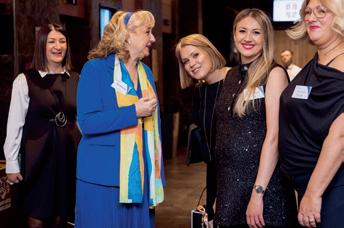
al and professional topics, we enable them to better understand the factors influencing team dynamics and recognise actions that contribute to a healthier and more productive environment. Such an approach, which does not separate personal and professional aspects into distinct spheres, creates room for meaningful, honest and longterm solutions that strengthen both our employees and the organisation as a whole.
What is the current state of the feedback culture in the region, and how can companies work to improve it?
— We often encounter organisations where feedback remains superficial, irregular, or




limited to formal processes like annual evaluations. A lack of transparency, fear of conflict and rigid hierarchies further hinder the exchange of meaningful feedback. Building a strong feedback culture requires time, dedication and adaptation, but when implemented correctly, it significantly enhances productivity, trust and employee loyalty. That’s why we regularly organise events that bring together experts to exchange best practices and highlight the importance of feedback. Our vision is to transform the HR function into a strategic partner in employee development, where feedback plays a key role in their professional growth and personal satisfaction.
What can we expect at this year’s Feedback Hero Season panels?
— This year’s Feedback Hero Season panels offer a unique opportunity to gain insight into real-world challenges and case studies, featuring leaders from renowned local and global companies. The discussions will focus on the importance of a feedback culture in organisations, with specific examples of challenges and solutions from practice. Continuing from where we left off, after questioning whether feedback is a myth or a real tool for success, this year we will delve deeper into how to strategically use it for team and leadership development. Follow our social media channels for more information on upcoming events and the speakers who will shape the next season.
Executive Director of the Human Resources and Organisation Management Sector at NLB Komercijalna Banka
NLB Komercijalna Banka is the first in Serbia to be certified as a Family Friendly Bank. It has also been awarded the prestigious Top Employer 2024 and 2025 certification, further motivating the bank to uphold its high standards
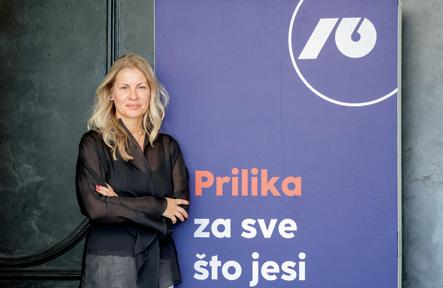

ur mission isn’t only to be an employer, but also a reliable partner and pillar of support in our employees’ professional growth and daily challenges, helping them bring out the best in themselves and achieve their goals
O– says Andrijana Aleksić Jevtić, Executive Director of the Human Resources and Organisation Management Sector at NLB Komercijalna Banka. Speaking in this interview, Andrijana discusses how the bank nurtures its employees and why
she believes investing in people is the best investment.
NLB Komercijalna Banka has been awarded the prestigious Top Employer 2024 and 2025 certification, officially recognising this bank as one of the most desirable companies to work for in Serbia. What does this recognition mean to you?
— We recognise that satisfied and engaged employees are the foundation of any company’s success. That’s why being acknowledged as a Top Employer isn’t just an honour, but also a responsibility towards the entire market. In a
time when talented professionals carefully choose to work for companies that support their personal and professional development, encourage innovation and foster a healthy work environment, receiving this award confirms that we are on the right track. At the same time, it serves as motivation to maintain our high standards, invest even more in our people’s growth and remain leaders in fortifying a corporate culture that fosters innovation and progress.
Your bank is the first in Serbia to be certified as a Family Friendly Bank. Would you say this rec-
ognition confirms your commitment to employees and improving their overall experience?
— The Family Friendly recognition isn’t just a result of our past efforts, but also a true reflection of the values we live by. As the first bank in Serbia to receive this certification, we have clearly demonstrated that achieving a balance between private and professional life isn’t just an option, but a standard. We believe that the real strength of an organisation lies in how well it takes care of its people.
Our employees know that they aren’t alone in the key moments of their lives – whether they’re planning a family and using our financial support for in-vitro fertilisation and prenatal tests or proudly watching their children excel with the help of our scholarship programmes.
Health is the foundation of every success, which is why we firmly believe that taking care of our employees’ wellbeing is the most important investment we can make. Through free and regular medical check-ups, we do everything we can to ensure a strong foundation for the long-term health and security of our team.
Finally, these are just a few of the more than 15 different types of support we provide. While we are proud of what we’ve already accomplished, we continue to improve our employees’ daily lives –because we want them to feel valued, supported and empowered to always give their best.
Do you believe that your most important task is to help every employee reach their full professional and personal potential?
— That’s exactly right! Our goal is to provide every employee with support and to create an environment in which they can fully develop their professional and personal potential. We listen carefully to our colleagues and develop initiatives that respond to their needs. Our support includes individu-
al mentoring programmes, training platforms that encourage both personal and professional growth, and expert assistance in overcoming daily challenges – both at work and beyond. We believe that employee wellbeing doesn’t end when the workday does, but rather encompasses every aspect of their lives. Our mission isn’t just to be an employer, but also a reliable partner and a source of support, helping them perform at their best and achieve their goals.
We’ve heard increasing discussion about the impact of ESG principles on HR professionals in recent years. Could you explain this connection?
— The growing importance of ESG principles in modern business is having a significant influence on the way companies approach the management of human resources, highlighting HR’s crucial role in shaping sustainable and socially responsible organisations. At NLB Komercijalna Banka, we believe that responsibility towards the community, the environment and employees is an inseparable part of our HR strategy.
One specific example of our commitment to ESG principles is the creation of the NLBKB Volunteer Club, which encourages employees to take part in socially responsible initiatives. This club not only enables our employees to contribute to the community, but also strengthens team spirit and reinforces the core values of our bank. Another example is the “Challenge the Future” internship programme, designed for final-year students. Over the course of six months, they participate in training that helps them develop their skills and competencies, empowering them to step into the professional world with confidence. What makes this internship unique is that the training is led by our colleagues – experienced professionals, who provide students with first-hand knowledge and valuable insights.
Everything we do is built on our three core values: developing people; fostering entrepreneurship; and improving quality of life. We are particularly proud of our initiatives that stem from our value of “improving quality of life”, as they best reflect our mission to have a positive impact on our employees, our community and society as a whole.
With a growing focus on people and workforce development, artificial intelligence has become a common topic. How do you view AI’s role in the banking sector? Is it a tool that can help rather than replace jobs?
— AI represents a significant opportunity for the banking sector. It is a powerful tool for improving operations, and not a threat. AI can be
OUR GOAL IS TO PROVIDE EVERY EMPLOYEE WITH SUPPORT AND TO CREATE AN ENVIRONMENT IN WHICH THEY CAN FULLY DEVELOP THEIR PROFESSIONAL AND PERSONAL POTENTIAL
seen as an enabler that automates routine tasks and processes, resulting in faster decision-making and freeing up employees to focus on creative and strategic initiatives. AI can drive transformation by helping employees identify and implement innovative ideas. This technology doesn’t take jobs away – it transforms them, creating opportunities for employees to develop new skills and adapt to future challenges. The key is for the banking sector to integrate AI in a way that aligns with core values – authentically, responsibly, and in the best interest of both employees and clients. In so doing, AI will become an ally in building organisations that are agile, innovative and people-centred.


Can we enhance productivity without compromising employee well-being? As technology reshapes the workplace, striking a sustainable balance is more urgent than ever
Productivity drives economic growth, but its relentless pursuit comes at a cost. In many Western economies, productivity gains are stagnating, even as longer hours and intense workloads take a toll on employee well-being. Escalating absenteeism and inequality highlight the hidden price of working “smarter,” placing well-being at the crossroads of economics and psychology.
The advent of generative AI and similar innovations offers potential breakthroughs in productivity but raises questions about workforce disruption. History reminds us that technological progress both eliminates and creates jobs, but the long-term effects of AI remain uncertain. Amidst this shift, the evolving skill requirements call for a transformation in education and workplace training. Organizations must provide employees with adaptable skills, while individuals bear the responsibility of continuous learning.
Well-Being as a Metric: Assess how innovations, policies, and practices affect employee well-being alongside productivity.
Systemic Work Environment Improvements: Combatting individual stress requires addressing systemic issues within the workplace.
Interconnected Goals: Productivity and well-being are not opposites; they
can complement one another when decisions account for both.
Behavioral Science Insights: Use insights from psychology to identify sustainable balances between performance and employee health.
Prioritize Employability: Organizations that focus on keeping employees resilient and relevant will foster longterm success.
Generative AI and other technologies are reshaping the workplace, sparking both excitement and anxiety. To thrive, businesses and individuals must embrace these innovations without losing sight of their risks. Bridging the gap between technological advancements and human needs is the key to a sustainable, equitable future.
ISN’T ABOUT WORKING HARDER OR LONGER–IT’S ABOUT WORKING SMARTER, WITH WELL-BEING AS AN INTEGRAL PART OF THE EQUATION
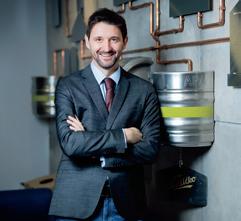
This recognition prompted our discussion with Apatin Brewery HR Director Dragan Rosić, who highlighted its significance for the company, as well as the benefits available to the brewery’s employees.
Your commitment to employees has been officially recognised by the global Top Employers Institute for a third time. How significant is this certification for your company, and what does it represent?
— We are one of only 17 companies in Serbia to hold this prestigious recognition, giving Apatin Brewery global acknowledgement for its excellence in employee practices. It confirms that the work we’ve been doing over many years is effective and that we are on the right track. This award is also an obligation for us to improve further with every year, enhancing our processes and employee care.
Apatin Brewery [Apatinska Pivara] has received dual recognition for the third consecutive year from the Top Employers Institute, both locally and at the European level, earning the “Top Employer Serbia” and “Top Employer Europe” certificates. This achievement ranks the company among an elite group of 2,429 businesses across over 100 countries to have received this prestigious accolade worldwide
DRAGAN ROSIĆ
Apatin Brewery HR Director
What’s involved in the certification pr ocess for the Top Employer recognition?
— To receive this prestigious certificate, a company must undergo an extensive process conducted by the Top Employers Institute. The certification project itself takes several months and requires significant effort, time, energy and focus. Every member of the HR team plays a role in this process, which covers a broad range of activities. The evaluation involves over 250 criteria, including work environment, talent management, learning opportunities, diversity and inclusion, and employee wellbeing.
Among the six key categories assessed, several areas were highlighted as strengths of Apatin Brewery: business strategy, employee strategy, leadership, purpose and values. We have achieved consistent improvements in these areas year on year.
Which particular employee benefits would you emphasise?
— We work daily to create an environment in which all our colleagues can grow continually, feel respected and express their authenticity. What truly sets us apart from many other employers is the supportive atmosphere and company culture, which ensures everyone feels like they are part of a family. Our leaders aren’t distant icons, but rather approachable managers with whom you can share a beer after work.
We expand our range of benefits for all employees each year. In addition to standard packages that include bonuses, other financial incentives, supplementary health insurance, flexible working arrangements like sliding working hours and remote work, we always listen to our employees’ needs. Over the past few years, we’ve introduced a complete benefits package for employees’ families to mark important life events, gradual return-to-work programmes after extended absences, Fit Pass memberships, additional leave days for new fathers, and many other benefits.
Beyond tangible benefits, our focus remains on ensuring employee satisfaction, showing respect and providing opportunities for personal and professional growth alongside the company. This is especially rewarding when working in an industry synonymous with fun, socialising and celebration.

Dr Galjina Ognjanov Professor at the Faculty of Economics, University of Belgrade

Jelena Gavrilović Šarenac Head of Corporate Communications at Henkel Serbia and Henkel Adria
Aleksandar
Marija Čortan Managing Director, DRV

100 Truth Over Trends
Marina Grihović Founder and Director of PR and Media Consulting Agency Headline and Digital Communications Agency DKIT
101
Nataša Đurđević Head of Corporate Communications Department, Generali Srbija
102 Keys to Success
Bojana Stanković Head of Communications, Smart Vision
104 Sustainable Advertising Matters

DR GALJINA OGNJANOV
Professor at the Faculty of Economics, University of Belgrade
The rise and rapid expansion of digital media alternatives, and the fact that they serve as the primary communication channel for younger generations, particularly Gen Z, have sparked debate over the future of traditional media. Personally, I have no doubt about this: traditional media is irreplaceable, while new digital media has also become an integral part of the modern media landscape ~ Dr Galjina Ognjanov
The development of new technologies and media has brought tremendous changes in the way we consume and interact with content, explains Dr Ognjanov, speaking in this exclusive interview for CorD Magazine. “For
decades, advertisers and marketing strategists have faced the challenges of media expansion and fragmentation. With the emergence of interactive and digital media at the beginning of this century, capturing the attention of audiences for marketing messages has
become even more difficult. While theory suggested it, practice has proven that the most effective approach so far has been media integration. This means strategically combining different media –both traditional and digital – to achieve what we call the ‘synergy
effect’. Successful brands carefully leverage different communication channels, adapting to the preferences of their existing and potential customers by offering content that aligns with their media consumption habits. As a result, it is now common for a brand to first gain public attention in the digital space, prompting traditional media to start reporting on it -or vice versa, where traditional media outlets initiate a conversation that later expands to digital platforms, allowing for greater interaction.”
How do modern communications channels, especially social and digital media, shape Gen Z’s perception of the world and social relations? To what extent and in what ways do these channels influence their political socialisation and the formation of their views, particularly in the context of their behaviour as a voting demographic (electorate)?
— In order to discuss the impact of modern communication channels, particularly social media and digital platforms, on Gen Z’s worldview and social interactions, we must first acknowledge the variety of content available to them. Unlike traditional media – or even professional digital media, where content is filtered through journalists and editors, as so-called “gatekeepers” – social networks aren’t limited to curated information. However, their advantage lies in interactivity, which creates an illusion of personalisation for users. It is well known that people tend to trust media with a personal touch more than commercial media. And yet, this strength of social media is also its greatest risk.
The way people perceive reality and form opinions ultimately depends on their ability to assess the credibility and accuracy of the content to which they are exposed. This underscores the importance of media literacy and the need to educate younger genera-
tions on how to consume online content critically.
However, in a broader context, as we are currently witnessing a wave of youth-driven protests and student-organised blockades in Serbia, it is clear that Gen-Z is not living in an isolated bubble, as was often suggested in previous years. In relying primarily on social media for communication and digital platforms for information, they have demonstrated that they are not uninformed. Indeed, they have shown a high level of media literacy, proving that they can quickly find, create, share and interpret
With the rise of social media and digital platforms, influencers and influencer marketing have emerged as a paradigm of authentic and transparent communication. However, the intensified use of this form of paid promotion has led to a decline in consumer trust in influencers - in their opinions and recommendations.
In response to your question, brands can only build credibility through truthful, open and consistent communication with consumers over the long term. This requires a combination of various communication tools and media,
BRANDS CAN ONLY BUILD CREDIBILITY THROUGH TRUTHFUL AND TRANSPARENT COMMUNICATION WITH CONSUMERS, MAINTAINING CONSISTENCY OVER THE LONG TERM. THIS REQUIRES A COMBINATION OF VARIOUS COMMUNICATIONS TOOLS AND MEDIA, WITH A STRONG EMPHASIS ON CONTENT THAT ADHERES TO ETHICAL BUSINESS PRINCIPLES
relevant media content, adapting it to their audience with remarkable efficiency.
We are witnessing a growing crisis of trust in institutions, corporations and even marketing. How can brands build credibility in such an era of consumer scepticism? Are authenticity and transparency becoming key factors in effective marketing communication?
— Scepticism – and even outright negative perceptions of advertising – is nothing new. As I’ve mentioned previously, consumers distinguish between personal and commercial content, and they tend to trust personal messages more. Advertising and sponsorship are classic examples of commercial communication, which is why advertisers have always sought alternative strategies to enhance the word-of-mouth effect.
with a particular focus on content that adheres to ethical business principles.
Inflation, rising prices and economic uncertainty continue to influence consumer behaviour worldwide. How have these changes impacted marketing strategies? Are we seeing a tendency towards downtrading (consumers choosing cheaper alternatives) or growth of luxury consumption in certain segments?
— There is growing resistance to corporations globally, which is also linked to increasing awareness of rising global inequality. Inflation, rising prices and economic uncertainty inevitably influence consumer decision-making, affecting the products they buy and how they allocate their budgets.
Price sensitivity, however, is driven by multiple factors and is
not a universal phenomenon – it varies across different products and consumer segments. If we generalise, we can observe that consumers in Serbia and neighbouring countries have been opting
boycotts of retailers, which – unlike similar attempts in past decades – are yielding far greater results today.
For example, a recent boycott in Croatia resulted in a more
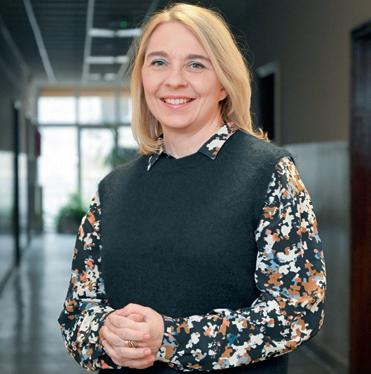
A NEW MOVEMENT IS EMERGING AMONG CONSUMERS, DRIVEN BY HEIGHTENED CONSUMER ACTIVISM, WHERE BOYCOTTS OF RETAILERS ARE BEING ORGANISED. UNLIKE SIMILAR ATTEMPTS IN PAST DECADES, THESE ACTIONS ARE YIELDING FAR GREATER RESULTS TODAY
increasingly for cheaper alternatives to products they usually buy.
What I find particularly interesting, however, is the rise of a new consumer movement driven by increased consumer activism. We are now witnessing organised
ESG (Environmental, Social and Governance) initiatives are becoming a central topic in corporate business. Is green marketing still a valuable tool for brands or have consumers developed an immunity to sustainability messaging? How can companies avoid greenwashing and create campaigns that consumers perceive as genuine?
— Green marketing is a subset of socially responsible marketing and its significance grows in parallel with increasing consumer awareness of the need to protect the environment and broader social values.
Returning to the topic of consumer activism, it is important to note that today’s consumers are more aware and more willing than ever to penalise companies and brands that fail to uphold accepted social values and ethical norms.
This includes the poor treatment of employees, unethical practices pertaining to animals, environmental neglect, or discrimination against specific social groups. In this sense, socially responsible marketing has become a necessity for companies that aim to survive and maintain their reputations.
However, problems arise when companies exploit sustainability narratives merely to enhance their public image, cover up questionable business practices or promote products in industries where direct advertising is restricted – such as in the gambling sector.
than 50% drop in issued receipts in just one day. Similar boycotts have been announced in Slovenia and seem likely to spread to other countries in the region, including Bosnia and Herzegovina, Montenegro and Serbia.
In such cases, this is not genuine corporate responsibility or a sincere commitment to ESG principles, but rather falls under the category of greenwashing, a practice aimed at whitewashing the reputation of companies that fundamentally operate unethically.
This deception is impossible to hide, as consumers quickly recognise and punish insincere efforts— whether through boycotts, negative publicity or reduced brand loyalty.
Henkel is a global company that has numerous brands striving to meet consumer expectations. That’s why the company strives to keep pace with all communications trends and to align with the challenges of the media world

JELENA GAVRILOVIĆ ŠARENAC Head of Corporate Communications at Henkel Serbia and Henkel Adria
igital media tools have brought major transformation in terms of speed, transparency, simplicity, accessibility, responsiveness and connectivity, says Henkel’s Jelena Gavrilović Šarenac, with whom we discussed all the challenges and advantages of modern communication, and the ways Henkel Serbia and Henkel Adria engage with the public and their consumers.
DYou are the Head of Corporate Communications at a large international company, which is a position that carries significant weight and responsibility. How different is your job today compared to that of a corporate communications leader in previous times?
— The main difference is the speed and ease with which we can now access information or reach a spokesperson, primarily thanks to digital communications. Information exchange happens very quickly and dynamically, with an expectation that everything will be completed in real time. It is often said that time has accelerated and there is now an increasing expectation for innovation while managing numerous diverse tasks. Communication is now an imperative for businesses and existence itself – if you aren’t available on social media channels, it is as though you don’t exist.
Perhaps the biggest challenge is the capacity of AI and the human ability to interact with it. It is said that AI won’t replace human communicators, but that
the quality of communicators’ work will be measured by how effectively they use AI. Despite all these changes, I always emphasise teamwork and strong collaboration with colleagues, which remains my top priority.
Strategic communication is undoubtedly the key to successful operations for all companies. It requires aligning topics and priorities with other departments, as well as long-term planning of all activities. How do you approach this?
— Long-term planning is extremely important, as it helps create a vision and framework for executing tasks. Such plans are developed in a detailed and careful manner. A long-term strategy provides an overview of the entire business year, which is why I approach planning with enthusiasm, energy, a positive mindset and a high level of focus and dedication.
However, no matter how solid our longterm plans are, we must always be ready to
COMMUNICATION IS A BUSINESS IMPERATIVE TODAY—IF YOU AREN’T PRESENT ON SOCIAL MEDIA, YOU MIGHT AS WELL NOT EXIST

react quickly and adapt on the go, as things are happening ever more quickly. At our company, we have the Henkel corporate brand, as well as dozens of well-known and strong brands like Persil, Schwarzkopf, Ceresit and Loctite. Aligning topics and priorities can sometimes be challenging, but that’s when good planning and excellent collaboration with colleagues come into play, allowing us to jointly execute projects successfully.
Digital media tools provide not only speed, but also creativity, interactivity and the ability to communicate the right messages about your brands and their innovations. How do you approach this? — It is often said today that every person can be a media channel, and we know that the media has always been considered the “seventh power”. Digital media tools have brought major changes in terms of speed, transparency, simplicity, accessibility, responsiveness and connectivity. All messages now move between the analogue and digital worlds, and target audiences can be reached through both traditional and digital media. Depending on the channel used, there are specific expectations that we must meet.
When it comes to our brands, we care about ensuring that timely and accurate information reaches our consumers. Year after year, we see a trend of stronger advertising in online media, but this doesn’t diminish the importance of traditional media.

rom day one, UM has set industry standards with its creative ideas, strategic approach and dedication to clients’ interests, particularly in the digital space, as we discovered in this interview for CorD Magazine.
FAt UM, you nurture partnerships as personal connections, which has proven to be a successful approach. Why is that?
— Caring for our clients means solving the real challenges confronting them. This is why we invest continuously in knowledge and people – not only in terms of keeping pace with technological advances, but also in applying new creative approaches.
The evolution of technology creates new opportunities, and we embrace that evolution by transforming our tools and strategic processes, which helps us navigate the complexity of the environment and its impact on brands. Thanks to modern tools, our contribution to client results is becoming increasingly trackable and measurable.
We believe that the key to lasting partnerships lies in understanding the priorities and needs of our clients. We take a unique and comprehensive approach to every project, treating each client individually to create a collaboration model that best supports their business growth.
From the very establishing of a partnership, we structure our teams, processes and communication lines to align with the way our clients’ teams are organ-
In today’s era of digital connectivity and rapid content sharing, the latest technological leap will have far-reaching implications for both our industry and our lives. My colleagues and I are ready for what the future of communications holds ~ Aleksandar Đorđević
SEE Regional Chief Strategy Officer at UM
ised. For clients who are presenting their brands and products across regional, European and global markets, we offer full support through our agency network and local teams. We also assist in situations where clients lack the capacity to handle complex communication challenges and the fast-paced nature of modern media.
Do you think digital tools are redefining communications and that changes are happening too fast? Are those who say we should “expect the unexpected” exaggerating?
— Digital technologies will undoubtedly continue to reshape the advertising, marketing and communications industries. The idea of “expecting the unexpected” is a way to acknowledge how unpredictable the pace of development has become.
WE TAKE A UNIQUE AND COMPREHENSIVE APPROACH TO EVERY PROJECT, TREATING EACH CLIENT INDIVIDUALLY TO CREATE A COLLABORATION MODEL THAT BEST
SUPPORTS THEIR BUSINESS GROWTH


Previous technological phases were relatively easy to predict, because the innovations driving them followed a linear progression. However, the emergence of generative artificial intelligence—which can learn and apply itself in countless ways— has made it clear that we are on the brink of an era filled with extraordinary possibilities, but also significant challenges.
Digital technologies support us, but they can never replace human creativity. That’s why they won’t be able to fully replace humans – at least not in the near future.
You emphasise ethical standards, the social impact of advertising, transparency and responsible messaging—how do you ensure this in practice?
— Ethics in advertising are crucial for any organisation that seeks to be respected on the market. We were also actively involved in establishing the national self-regulatory body for ethical standards in advertising, which we continue to support with the aim of it becoming an active and influential authority.
In digital media, aside from ensuring legality and ethical responsibility, one of the biggest challenges is media environment safety. If boundaries and contexts aren’t clearly defined in advance, there is a risk that a brand’s communication could appear in an unsafe media environment. Brand safety is one of the most critical aspects of ethical advertising in today’s digital age.
Our philosophy is a personalised approach tailored to the specific needs and challenges of each client. Our goal isn’t to merely meet expectations, but to exceed them ~ Marija Čortan
Whether crafting a campaign that triggers an emotional response or redefining the way a brand communicates, the DRV mission is clear: to deliver solutions that inspire, engage and have a lasting impression. Speaking for our magazine, DRV Managing Director Marija Čortan shares her insights into how and why her company pushes boundaries for both its clients and the industry as a whole.
If your agency had to be described in a single word, it would be “challenger”, as you challenge others with your creativity, solutions and projects. Would you agree?
— Absolutely! As a challenger agency, DRV refuses to settle for the status quo— we strive to push the boundaries with our creative solutions, not just for our clients, but for the industry as a whole. Being a challenger isn’t just about being bold; it’s about being persistent, thorough in research, analytical, and with a deep understanding of the market.
Our strength lies in the fusion of creativity, strategy and technology— but also, and most importantly, in our people. Our team is a driving force that takes the extra step, recognises potential where others don’t, and transforms challenges into opportunities. Our goal is to bring the inspiration from our work culture into every brand and campaign, creating stories that not only capture attention, but have a lasting impact.
MARIJA ČORTAN
Managing
Director,
DRV
Your offer includes full service solution for clients. What does that entail and how do you approach projects?
— Our comprehensive solutions integrate all aspects of marketing—from market research, strategic planning and creative campaign development, to execution across digital and traditional communication channels. In every pro -
OUR GOAL IS TO BRING THE INSPIRATION FROM OUR WORK CULTURE INTO EVERY BRAND AND CAMPAIGN, CREATING STORIES THAT NOT ONLY CAPTURE ATTENTION, BUT HAVE A LASTING IMPACT
ject, we strive to combine deep market and brand understanding, innovative creative ideas and cutting-edge technology to achieve measurable, longterm results.
We love working with clients who see us as partners, who believe in the power of innovation and are open to exploring new approaches. Such collaborations inspire us to bring out the best in every project and push the boundaries of our industry together.

You believe that the best ideas come from stepping into the challenge zone, where creativity makes the difference between average and exceptional. Why?
— The best ideas undoubtedly emerge when we step out of our comfort zones. Challenges define us and drive us to be better. Creativity isn’t just a visual tool; it is a core value that enables us to solve real problems for clients and to achieve tangible results.
It is precisely this willingness to step into the unknown – whether through the innovative use of technology, groundbreaking strategies, or narratives that shift perceptions – that separates ordinary campaigns from extraordinary ones.
Is there a risk that artificial intelligence and automation could undermine brand creativity and authenticity?
— Technology is a means, not an end and its impact depends on how we use it. AI and automation offer tremendous possibilities, but only when combined with human intuition, empathy and creativity.
Our view is that technology should free up space for creativity by eliminating repetitive tasks and allowing us to focus on ideas that have an emotional and strategic impact. Of course, uncontrolled automation risks stripping campaigns of their soul, but that’s not a problem with technology itself—it’s about how we use it. At DRV, we see technology as a partner in the creative process, not as a replacement for human ingenuity.


espite changes, journalism and communications remain inseparable. Media outlets continue to rely on additional sources of information, while PR depends on stable channels to disseminate news. This is emphasized by our interviewee, a journalist and the founder and director of both a traditional PR agency and a digital agency, who possesses extensive communications expertise.
DAre you surprised by the speed at which your industry is evolving? What does your experience tell you about the future of PR?
— I have nearly 35 years of active work behind me, half of it in journalism and half in PR, which is why I continue to closely monitor developments in both fields. There is a strong bond between them that remains unbroken, but this is not the only element that should be immune to change. The first is the truthfulness of the information you share. Unfortunately, this is often disregarded, as if the PR code of ethics is being forgotten, particularly in dealings with the influential public and in political PR, which includes fake news, out-of-context quotes and falsehoods spread deliberately.
The second crucial aspect is the clarity of the message, while the third is a strong, innovative idea that must extend beyond routine practices. What is subject to change are
Communication experts have to pay close attention to target groups and the interests of those groups, to ensure their messages are formulated clearly, delivered appropriately, and reach the right audience
Founder and Director of PR and Media Consulting Agency Headline and Digital Communications Agency DKIT
the tools we use and the channels through which we deliver truthful and clear messages, packaged in great ideas.
This brings me to believe that PR will continue to thrive because the art of communication is becoming increasingly important, both professionally and personally. Those who can recognise the right moment and choose the best channels will prevail in PR—be it daily newspapers or a TikTok influencer. Our role is to prepare and tailor content for both.
How connected are digital communications, which have growing influence, with traditional communications that remain irreplaceable?
— They are deeply connected. For instance, I’m giving yet another traditional interview to a classic print medium like yours, but I also expect to see it featured on your digital platforms. Likewise, you expect us at the agency to share it on ours. Digital communications have opened new doors for traditional media and accelerated their processes. Press releases, analyses and interviews still exist, but we are shifting focus
“CUSTOMERS” ARE INCREASINGLY PRESENT ON DIGITAL CHANNELS, BUT THE EMERGING TREND IS PRECISE TARGETING AND MORE DIRECT COMMUNICATION WITH THEM
from longer formats to quicker ones facilitated by our devices and platforms. Of course, communication experts must consider their target audiences and what they follow. “Customers” are increasingly present on digital channels, but the emerging trend is precise targeting and more direct communication with them. This creates more opportunities to be specific and to deliver messages to the right recipients.
Numerous experiences from the developed world suggest that artificial intelligence is like fire—a good servant, but a poor master. What’s your perspective on this?
— I still can’t gauge how much change AI will bring to our daily lives and profession. For now, it helps and speeds up processes, but I believe that AI should be used by experienced professionals who are able to utilise it as an assistant and correct its mis takes or overly artificial outcomes. After all, the first computers were a marvel to some generations, who feared them. It’s better to accept its existence and harness it in the best possible way.
Along with two other women from Serbia, you are a recipient of the PRO PR Globe People Achievement Award. Congratulations! Could you tell us more about the award and what it means to you?
— I honestly don’t like to boast, but I must emphasise that I was nominated by my colleagues, and PRO PR is truly an award given by peers to peers… and that makes me immensely proud.
Effective communication plays a crucial role in raising awareness about insurance, but the success of the industry additionally depends on economic stability, offering highquality products, and the skills of insurance agents
Head of Corporate Communications Department, Generali Srbija
Our interlocutor, Ms Natasa Đurđević, likes to say that all employees are responsible for good corporate communication, representing their company in both work and private environments, and that they should all be the best PRs and ambassadors of Generali Osiguranje. And judging by this insurance company’s results, they are all succeeding in this endeavour.
Does the constant evolution of corporate communications require your continuous adaptation and keeping up with trends?
— Corporate communications are evolving rapidly, driven largely by the rise of social media and Artificial Intelligence. While the core messages that matter to clients and other stakeholders remain the same for the most part, the way companies communicate these messages, the tools and channels they use, have changed significantly.
Audiences now prefer short, more direct and engaging content, free of corporate jargon, over lengthy corporate statements. Simple, clear language, visuals and video storytelling resonate far more than traditional text-heavy formats. Social Media platforms and AI-powered tools have also reshaped the dynamics of communications, enabling companies to personalise interactions, respond in real-time and create more targeted content and engagement with stakeholders.
Has effective communication helped raise public awareness in our country regarding the risks and importance of insurance?
— Effective communication plays a crucial role in raising awareness about insurance, but that is only one part of the equation. Economic stability and people’s income levels have a significant influence over their ability to invest in insurance. Additionally, the success of the industry depends on offering high-quality products that truly meet people’s needs, as well as the skills of insurance agents. In the insurance industry, perhaps more than in other industries, corporate communications and marketing departments, and the campaigns they launch, aren’t only responsible for building company reputation and gaining the trust of clients and stakeholders, but also for increasing awareness of insurance generally.
When it comes to selecting products or jobs, are people today increasing-
AUDIENCES NOW PREFER SHORT, MORE DIRECT AND ENGAGING CONTENT, FREE OF CORPORATE JARGON, OVER LENGTHY CORPORATE STATEMENTS

ly choosing socially responsible companies and those that have a clear sustainable business policy?
— We are proud and happy that we are recognised as a company that contributes strategically to the wellbeing of Serbian society. Generali Osiguranje Serbia, as part of the Generali Group, believes that sustainable growth is only possible if society progresses. That’s the very reason that we strategically and methodically integrate CSR activities and ESG principles into our operations.
Our approach is based on four key roles: responsible insurer, responsible investor, responsible employer and responsible citizen. One of the brightest examples of our corporate responsibility is The Human Safety Net programme, which focuses on supporting families with children aged up to six. We have been implementing this programme in Serbia since 2018, in collaboration with the Novak Đoković Foundation, through the “Support, Not Perfection” programme, which includes workshops for parents. As part of this initiative, we have opened 15 parent centres across Serbia and equipped three sensory rooms. By June 2024, the programme had reached 3,800 parents and made a direct or indirect impact on 5,700 children.
We demonstrate through our initiatives that corporate responsibility can have a direct and positive impact on society. We aim to inspire our people, other companies and our clients to become part of the change.
Smart Vision is a full-service agency powered by a team of outstanding public relations experts, exceptional event organisers, designers and digital professionals. Their collective expertise enables the agency to proudly uphold its full-service reputation. Optimistic, creative, and dedicated to exploring new frontiers, says Bojana Stanković
BOJANA STANKOVIĆ Head of Communications, Smart Vision
s the communications director of Smart Vision—a full-service agency connecting Belgrade, Zagreb and Dubai—Stanković is also the ambassador of the Woman.Comm Club in Serbia and a recipient of multiple prestigious awards. She emphasises that success is always a result of teamwork, courage and lifelong learning. Speaking in this interview, she shares insights into industry trends, AI, the role of women in communications and the future of the profession.
ASmart Vision celebrates 18 years of success this year. How would you describe this journey?
— Smart Vision is marking its 18th anniversary—a coming-of-age milestone in every sense! Over nearly two decades, we have grown to become one of Serbia’s most recognised full-service agencies, forging strong, long-term relationships with our clients. We have become their allies and partners throughout the process. Each project has been an opportunity to learn, grow and elevate the industry. Our team is the heart of the agency—passionate professionals who inspire and deliver results. We are proud of everything we’ve achieved and excited for what lies ahead.
Last year, you won three prestigious awards for your collaboration with NDF.
— Winning the Golden IPRA Award, also known as the PR Oscar, highlights the power of strategic communication,
particularly when PR activities align with broader social issues. Our project with NDF was both exciting and challenging, allowing us to create a campaign that captured significant attention and had a major impact. Based on in-depth research and empathy, it aimed not only to inform, but also to inspire and drive change in the way organisations communicate with their com-
AWARDS ARE A GREAT HONOUR, BUT ALSO A RESPONSIBILITY. THEY REMIND ME OF THE IMPORTANCE OF CONTINUOUS LEARNING AND ADAPTATION IN OUR FASTCHANGING

Belgrade hosted last year’s PR Oscars. How significant was that event?
munities. After this international recognition, we also received the regional bronze “the!” Award from the Croatian Public Relations Association, as well as the national “Campaigns with a Purpose 2024” award in the social category. These prestigious accolades motivate us to push boundaries and be even more creative, and to take bolder steps in our future projects.
— The prestigious IPRA Golden World Awards (GWA), presented by the International Public Relations Association, were held in Belgrade in October 2024. As the only Serbian recipient of an award for our NDF project, we were honoured with the responsibility of organising this prestigious event, which made us especially proud. The event brought together leading communication and PR professionals from around the world to recognise campaigns that stood out for their innovation, professionalism and community impact. More than 80 prestigious IPRA Golden Awards were presented to agencies from Japan, Singapore, Turkey, Romania, Nigeria, Croatia and many other countries. It was a truly significant event for our entire industry. Given this remarkable gathering of global experts, we took
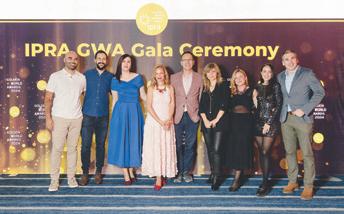
the opportunity to steer discussions towards critical topics by organising the PR Summit titled “Trust is a PRiority”, which focused on AI’s impact on PR, with a special emphasis on ethical standards.
What were the event’s key takeaways?
How do new trends and AI influence PR professionals?
— AI is no longer a novelty—it is already an integral part of our daily professional lives. It was emphasised at the summit that AI is profoundly shaping the PR industry and will only continue to do so. The challenge lies in striking the right balance between automation and human expertise. While AI significantly enhances efficiency and analytics, we must remember that PR is about building relationships, storytelling and fostering trust—things that machines cannot replicate.
I personally view AI as a tool that enhances our work, but not as a replacement for the creativity and emotional intelligence that define the PR industry. We are entering an exciting era, and those who embrace AI as a strategic partner will be the ones leading the industry forward.
Last year was marked by prestigious awards for you, including the Woman.Comm of the Year 2024 Special Star and Agency Star, which you personally received. What do these accolades mean to you?
— These awards are not only a great honour for my work, but also a significant responsibility. They remind me of the im-
portance of continuous learning and adaptation in this era of rapid changes in our industry. At the same time, they provide motivation to keep pushing forward, to be a better leader, mentor and collaborator, and to reinforce the importance of teamwork and unity.
The Woman.Comm of the Year – Agency Star award is not just the result of one person—myself—but of my entire team. It
I
THE CREATIVE INDUSTRIES IS ESSENTIAL FOR DEVELOPMENT, LONG-TERM SUSTAINABILITY AND SUCCESS
strengthens our agency and confirms that we are on the right track. Our strength lies in unity, and that is what drives us forward.
On the other hand, the Woman.Comm of the Year – Special Star is a truly unique recognition that celebrates efforts to improve both communication and the position of women in our profession. I am grateful for the trust placed in me and look forward to representing our Woman.Comm community at the Women’s Forum in Paris this year, where we will exchange ideas and inspire one another.
What motivated you to become one of the founders of the IPRA ABA Chapter, and what was the goal of this initiative?
— There was a clear need for a platform that would enable collaboration, knowledge sharing and professional development for PR professionals around the region. The establishment of the IPRA Alpe Balkan Adria Chapter was a natural step towards achieving this goal. Our aim is to set new standards, create development opportunities and establish a unified voice for our industry to which we all contribute.
We additionally seek to improve professional standards and practices in public relations, raise awareness of the importance of ethics and professionalism in communication, and enhance the reputation of our profession in society. Through the IPRA ABA Chapter, we aim to inspire and motivate our members to strive for excellence and innovation in their work.
Do you believe that regional integration in the creative industries is key to development, long-term sustainability and success?
— Absolutely! I firmly believe that regional integration is crucial for the development, long-term sustainability and success of the creative industries.
Regional collaboration creates opportunities for joint projects, initiatives and events that can positively impact the entire industry. By working together, we can better understand the specific needs and challenges of different markets, allowing us to develop innovative approaches and solutions.
Moreover, connecting with creative professionals and agencies across the region helps build a stronger, more resilient industry, capable of responding effectively to future challenges. Exchanges of resources, talent and knowledge contribute to the growth and advancement of the sector, opening up new opportunities for professional development and progress. By fostering these connections, we create greater possibilities and opportunities, while laying the foundations for long-term success and sustainable industry growth. This also enhances our competitiveness on the global market. My outstanding experiences in regional collaborations and joint projects with colleagues across the region serve as proof of this.

As digital advertising evolves, sustainability becomes a core focus. Brands must balance innovation with environmental responsibility, adopting practices that reduce their ecological footprint while delivering impactful campaigns
The advertising industry, once solely focused on capturing attention, now faces the urgent challenge of reducing its environmental impact. With the global digital advertising market projected to reach $786 billion by 2026, the carbon footprint of this sector cannot be ignored. Every digital ad, from its creation to its delivery, consumes energy – from servers hosting ad platforms to devices used by end-users.
Recent studies reveal that a single digital ad campaign can produce the equivalent of several tonnes of CO2 emissions, particularly when using data-heavy formats like video. For instance, streaming 10 minutes of online video generates around one gram of CO2, a figure that grows exponentially across billions of impressions.
To combat this, brands and agencies are turning to sustainable advertising practices, focusing on reducing energy consump-

tion and optimising resources. Here are some strategies shaping this shift:
1. Lighter Ad Formats: Platforms like NEXD advocate for ad designs that minimise data usage without sacrificing creativity. HTML5-based ads, for example, load faster, consume less energy, and offer the same visual impact as heavier formats.
2. Energy-Efficient Hosting: Hosting campaigns on servers powered by renewable energy significantly reduces the carbon footprint of ads. Companies like Google and Microsoft are already adopting green data centres to power their platforms.
3. Smarter Targeting: By reducing unnecessary ad impressions and focusing on precision targeting, brands can decrease wasted energy spent on reaching non-relevant audiences.
4. Measurement and Accountability: Tools like carbon calculators for digital campaigns allow advertisers to measure

SUSTAINABLE ADVERTISING IS NOT JUST A TREND –IT’S THE FUTURE OF RESPONSIBLE AND EFFECTIVE MARKETING
emissions and implement data-driven strategies for improvement.
Adopting sustainable practices is not just an ethical imperative; it also makes good business sense. Consumers increasingly prefer brands that align with their values. A 2022 Nielsen report found that 78% of global consumers are more likely to purchase from brands that demonstrate environmental responsibility.
Moreover, regulatory pressures are mounting. In the EU, new frameworks such as the Green Deal are pushing industries to adopt environmentally friendly practices, including advertising. By acting now, brands can stay ahead of these changes while positioning themselves as leaders in sustainability.
Transitioning to sustainable advertising does come with challenges. Imple-
menting eco-friendly solutions may initially increase costs or require technological upgrades. However, these investments often pay off in the long term through increased consumer loyalty, operational efficiencies, and enhanced brand reputation.
Furthermore, collaboration across the industry is essential. Agencies, tech platforms, and advertisers must work together to establish standardised practices and share innovative solutions.
Sustainable advertising is more than a fleeting trend; it represents the future of marketing. As digital campaigns continue to expand, so too does the responsibility of advertisers to reduce their environmental impact. Brands that embrace this shift early will not only contribute to a greener planet but also build deeper trust with eco-conscious audiences.
The question is no longer whether to adopt sustainable advertising practices, but how quickly your brand can adapt to this new standard.
As digital fatigue rises, print advertising is finding new ways to captivate audiences—bridging the gap between the physical and digital worlds. The future of print isn’t about survival; it’s about reinvention
Print advertising has evolved for centuries, proving its resilience and effectiveness. Even in the digital era, it continues to engage audiences in unique ways. Here’s how print is adapting in 2024:
Hybrid advertising is on the rise, integrating QR codes, augmented reality (AR), and digital tracking tools. Brands like L’Oréal successfully merge print with digital by adding QR codes to magazine ads, directing consumers to personalised content and product pages. Studies show that combining print and email ads can boost sales by 49%.
Traditional static ads are being replaced with dynamic experiences. Marketers are embed-

ding NFC tags, conductive inks, and interactive elements that invite consumers to engage, share, and explore. Brands like Peugeot, C&A, and Carlsberg have turned print ads into punchable airbags, and even beer bottle openers.
AR is revolutionising print by transforming newspapers, brochures, and packaging into immersive experiences. From gamified storytelling to interactive product demos, brands are enhancing consumer engagement. Research shows experiential marketing increases brand awareness by 333%.
As digital fatigue rises, print advertising is finding new ways to captivate audiences—bridging the gap between the physical and digital worlds. The future of print isn’t about survival; it’s about reinvention.
I’ve always found it challenging to introduce myself professionally, and the most fitting, and simplest, word that encapsulates everything I’m passionate about and engaged in is ‘musician’. I was fortunate and blessed to discover my calling in music early on. It became my life’s compass, my joy, my refuge and, ultimately, my profession
There’s a photograph of me at the age of around three, sitting in the kitchen of our apartment in Belgrade’s Banovo Brdo neighbourhood, my feet not yet touching the floor, wearing oversized headphones and staring into the distance. Even today, I often catch myself with that same gaze on my face as I play, compose, or listen to music. It seems that this part of me has remained unchanged for almost 40 years. I could sit still for hours, focused intently on listening – first to my father, Ljubomir, who’s also a musician, and later to various other compositions, particularly those of Mozart and Tchaikovsky, which were always within reach. My sister, Sandra, played the piano, and I recall listening with great attention as she practiced, only to later find myself playing the same pieces in high school and at university. Although this was during my early childhood—before I even became attached to a particular instrument—I had already discovered the deep yet invisible connection that would come to define my life.
My first instrument, and thus my first step in expressing myself through music, was a guitar. My father, Ljubomir, a guitarist and producer, helped me learn my first chords during a threemonth stay in Switzerland in the summer of 1992. There was another recording studio across from his, and they shared a large, soundproof rehearsal space that was filled with various instruments. Those were my toys. That was the first time I sat behind a drum kit, picked up a bass guitar and experienced the atmosphere of a music studio.

Aleksandar Sedlar D.A. composer,
conductor, multi-instrumentalist and music producer; full professor at the Faculty of Arts in Niš
I was ten years old and, looking back, that was the moment I seriously began my journey in music. I played by ear, striving to imitate Jimi Hendrix down to the most minute details, and later many other artists. I had my first live performance playing and singing with a band the following summer.
I began my formal music education at Josip Slavenski Music High School [Novi Sad] in the theory department, and a year later enrolled in the jazz department at Stanković Music School, studying under Professor Danilo Karamarković, my only guitar teacher.
Exploring jazz and classical music simultaneously led me to study composition at the Faculty of Music in Belgrade, in the class of Professor Vlastimir Trajković. Composition studies somehow synthesised my musical experience—
I feel incredibly grateful and fortunate to have found myself in the world of music and to have the opportunity to share my life’s journey with the world through diverse roles, genres and collaborations
on the one hand, as a performer, and on the other, as a creator of music that was no longer confined to the guitar. This path naturally led me to conducting studies, where I trained under Biljana Radovanović, Stanko Šepić and Bojan Suđić, aiming to conduct my own compositions for various ensembles. These disciplines – performance, composition and conducting – are deeply interconnected, each enriching and deepening the others.
I feel incredibly grateful and fortunate to have found myself in the world of music and to have the opportunity to share my life’s journey with the world through diverse roles, genres and collaborations.

A vibrant tradition tooted in Slovak heritage, Kovačica’s Naïve Art captures the soul of rural Serbia and resonates across the globe

Nestled in the heart of northern Serbia, the small town of Kovačica is a beacon of artistic brilliance, celebrated worldwide as the cradle of naïve art. This distinctive art form, characterized by its vibrant colors, intricate details, and unfiltered storytelling, has become an integral part of Serbia’s cultural identity. Kovačica, with its rich Slovak heritage, stands as a testament to the transformative power of creativity, turning a humble rural community into an internationally recog nized hub of artistic expression.
Naïve art, often created by selftaught artists, transcends the conventions of formal training, drawing directly from personal experiences, folklore, and imagination. It is
an art form that thrives on authenticity, offering a glimpse into the soul of its creators. In Kovačica, this tradition has evolved into a cultural phenomenon, weaving together stories of rural life, spirituality, and nostalgia with unparalleled sincerity.
The origins of naïve art in Kovačica can be traced back to the mid20th century when a group of local farmers, driven by a passion for storytelling, turned to painting as a medium of expression. These individuals, with no formal artistic training, began capturing their daily lives, struggles, and dreams on canvas. Their works, brimming with raw emotion and vivid imagination, quickly gained recognition for their unique style and profound narrative depth.
Martin
Jonaš, Igra, 1964
One of the most significant pioneers of this movement was Martin Jonaš, whose innovative approach and intricate detail earned him the title of the “father of naïve art” in Kovačica. His vibrant depictions of rural life, infused with folklore and
Kovačica is renowned as the cradle of naïve art, blending vivid colors with heartfelt storytelling
humor, laid the foundation for a thriving artistic community. Alongside Jonaš, other notable artists like Zuzana Chalupová and Jan Knjazovic further enriched the tradition, each bringing their distinct voice to this collective expression. Chalupová, in particular, became renowned for

her endearing portrayals of children and village scenes, which resonate with audiences across generations.
The art of Kovačica is defined by its bold use of color, meticulous attention to detail, and an enchanting sense of perspective. Unlike traditional art, which adheres to rules of proportion and depth, naïve art embraces a childlike viewpoint, emphasizing emotion and storytelling over technical precision. This approach allows the viewer to engage directly with the artist’s world, unfiltered by academic constraints.
Pastoral themes dominate the works of Kovačica’s naïve artists. Fields, villages, and bustling community gatherings are rendered in idyllic scenes that celebrate the simplicity and beauty of rural life. These images often intertwine with elements of folklore, mythology, and spiritual -
Artists
ity, creating a captivating blend of the real and the fantastical. The result is a body of work that not only preserves the cultural heritage of Kovačica but also speaks to universal human experiences.
Over the decades, Kovačica’s naïve art has transcended local boundaries, earning international acclaim
Jonaš and Zuzana Chalupová laid the foundation for this internationally acclaimed movement
and a dedicated following. Exhibitions featuring the works of its artists have graced prestigious galleries and museums worldwide, from Europe to North America and beyond.
The Museum of Naïve and Marginal Art in Jagodina, Serbia, houses an extensive collection of these masterpieces, serving as a testament to their enduring appeal.
What makes Kovačica’s contribution truly remarkable is its ability to connect with audiences on a deeply personal level. The universal themes of community, tradition, and human resilience, conveyed with such sincerity, resonate across cultures and generations. In a rapidly changing world, these paintings serve as a reminder of the enduring value of heritage and simplicity.
Today, Kovačica continues to nurture its artistic legacy through galleries, workshops, and events dedicated to naïve art. The annual Naïve Art Festival is a highlight of the town’s cultural calendar, drawing visitors from around the world


to experience its vibrant artistic spirit. During the festival, local artists showcase their latest works, engage with audiences, and share the stories behind their creations, ensuring that the tradition remains alive and relevant.
Efforts to preserve and promote this unique art form extend beyond the festival. Cultural organizations and institutions are working to document the history of Kovačica’s naïve art, ensuring its place in the annals of Serbian and global heritage. Additionally, younger generations are being encouraged to explore this artistic tradition, blending modern techniques with the timeless essence of naïve art.

Kovačica’s artistic community continues to thrive, with contemporary artists building upon the foundations laid by their predecessors. These modern creators, while rooted in tradition, are unafraid to experiment with new themes and styles. They use their art to address contemporary issues, from environmental challenges to the impact of technology on rural life, adding fresh dimensions to the naïve art canon.
Among these artists are figures who have gained recognition not just locally, but internationally, for their ability to innovate while maintaining the authenticity of naïve art. Their works are a testament to the
enduring vitality of this tradition and its ability to adapt to changing times without losing its essence.
Naïve art in Kovačica is more than just a cultural treasure; it is a profound expression of humanity. Rooted in the everyday lives of i ts creators yet rich with universal themes, it speaks to the power of art to transcend borders and touch hearts. For those who visit this small Serbian town, its art offers an immersive journey into a world of color, imagination, and timeless storytelling.
Kovačica’s legacy, preserved through its artists and celebrated on the global stage, is a shining ex -
ample of how tradition and creativity can coexist harmoniously. In an era that often values speed and innovation, the enduring charm of
The annual Naïve Art Festival keeps the tradition alive, drawing global audiences to celebrate Kovačica’s unique charm
Zuzana
Halupova,
1988
naïve art reminds us of the beauty found in simplicity, sincerity, and connection. It is a gift not just to Serbia, but to the world.
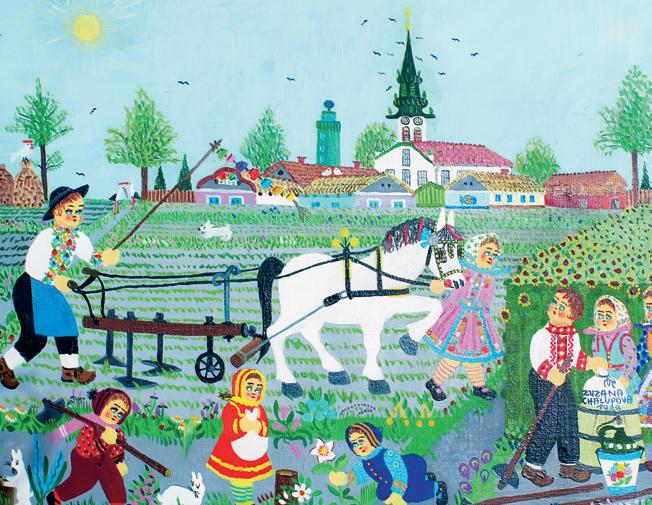


She had a successful ballet career as a dancer, performing her last role –that of Giselle – at the age of 46. Having spent the last three years heading the largest ballet company in the region, she is today very keen to improve cooperation between the ballet centres of the region
José Martínez, director of the Paris Opera Ballet, was a guest of Serbia’s National Theatre Ballet in mid-January 2025. This world-renowned artist reached agreement with the management of the National Theatre in Belgrade to stage in the Serbian capital the Ludwig Minkus ballet
Don Quixote, one of the most famous works of classical ballet literature, based on Miguel de Cervantes’ eponymous novel. The premiere performance is planned to take place on the great stage in mid-May, with the show set to include the participation of the entire ensemble of the Ballet and Orchestra of the National Theatre in Belgrade.
This kind of news would be a source of pride for any national theatre in the world. And the person who deserves the most credit for it, Ana Pavlović, artistic director of the National Theatre Ballet, who initially invited Martínez, says that it represents t he success of the entire team with which she works, of the administration of the National Theatre. Singling out the work of the executive director of the Ballet, Smiljana Stokić, she adds: “I really don’t know how it happened that, after less than three years of this management team’s work, we landed such a great artist. He will be doing the version of Don Quixote that
he did in Madrid, with his own team, and we will have two months filled with work that we’re looking forward to in advance.”
It is worth knowing that Ana met Martinez long ago, when they performed together as young dancers at a gala concert in Novi Sad. He once gave a guest performance in Swan Lake at the Sava Centre, but his arrival now – as a choreographer and the top man of French ballet – is particularly significant. Even more so given that, after familiarising himself with the Belgrade Ballet, he expressed great satisfaction at seeing that it has “great potential”.
Who is Ana Pavlović (1973), a former principal dancer of the National Theatre Ballet who has spent the past three years as the head of this ensemble, and who has a bright past, a successful present and an auspicious future? Her family roots have been in Belgrade for several generations. The family home of her father Miodrag, in Belgrade’s Professors’ Colony neighbourhood, where she was born and still lives to this day, is part of that Belgrade pedigree. The eldest of three daughters, her sisters Nevena and Jelena are both doctors. She was already 17 when her youngest sister was born, and she says in jest that they are like a true Sicilian family, where everything happens in the kitchen. “We are very noisy and all take care of each other. I now also have a daughter, Nina, so she also attends the family sessions, which are always held at mum’s place, in the kitchen.”
Ana’s mother, Mara, hails originally from the outskirts of Kruševac, and as a child Ana loved visiting her grandparents in the countryside.
“I had a pleasant combination of the city and the countryside in my upbringing and the way I was raised, which contributed to me becoming a very vibrant personality. My parents instilled a proper measure of values in me, raising me to always give my all, to be responsible and professional, and I tried to give my all and do my best. I never lulled myself into believing that what I do is perfect, or that I’m the best. Even when others said that I was one of the best in the class, I never let that lead me. I was always seeking the road to perfection, which naturally doesn’t exist.”
She changed primary schools three times, because she always had to attend the early classes, as she attended ballet in the afternoons. And she actually choose to attend ballet classes because of the music, as she’d wanted to deal with singing.
“My maternal grandfather had an absolutely wonderful ear, sang very well and played the accordion, and I
saw myself in that field, playing the piano and singing. However, the summer when I was meant to enrol in music school, we returned late from our summer holidays and all the auditions had been completed. I was despairing, and my mum called all the art schools to see what she could do for me, to improve my mood. And a place appeared at a ballet school, which at that time had piano as a subject! That’s how I went to ballet school because of the piano!”
She quickly discovered that ballet isn’t about luxurious dresses, tutus, tiaras... It’s about hours and hours of practice, and for her, as someone who is hyperactive, that meant her being bored.
“I’d wanted to leave the school already two or three times during the first year, but my mother didn’t let me. And then, after that first year, something happened in me; that was love, passion, I would even say fanaticism, and there was no chance that anyone would be able to separate me from ballet. I’ve been saying ever since then that a profession, especially an artistic one, finds you, as opposed to you finding it.”
Her parents weren’t satisfied with her choice, as it is a profession with a short duration and injuries happen, but she has remained convinced to this day that she made the correct and the best choice. She, of course, always had their support, but her mum watched her daughter from the third gallery throughout her entire career! Explaining that fleeing from the first rows and the parterre boxes, she said that it was easier for her to watch the magic of dance from a distance!
As a graduate of the class of prima ballerina Ivanka Lukateli, she received her first role in the Ballet of the National Theatre that was then
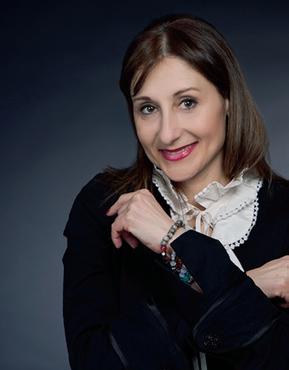
being headed by Lidija Pilipenko. As soon as she graduated from the Lujo Davičo Ballet Secondary School, she signed up for an audition and left for Graz (Austria). She was still a minor at the time, so she was accompanied on the journey by her aunt Olivera, her father’s sister, who was a professor at the Faculty of Technology. She was by her side from the very beginning, not missing even one of Ana’s performances.
I went to Graz in 1991 via Maribor and returned to Belgrade via Hungary. The disintegration of Yugoslavia had happened
“I applied and was immediately accepted at the Opera in Graz. I thought that I should start at a smaller company, not at a big one where I would traumatise myself, and Graz was also close to home. Unfortunately, that was 1991. I went to Graz via Maribor and returned to Belgrade via Hungary. The disintegration of Yugoslavia had happened, and I survived everything that we endured during the two years that I was in Graz. My country’s image

abroad during those years was very poor. I didn’t have any problems at the theatre, but all the circumstances worsened. I was young and had come to another country from a big family in which we all supported one another, and then something happened in my country that brought us all into disrepute. I know that it isn’t easy for our children when they go abroad, but it was also essential in my case, because my profession actually demands that you start working as soon as possible. I viewed that period as a good experience and an opportunity to learn something new, and that was the kind of neoclassical repertoire that then didn’t exist here. I returned to Belgrade in 1993, at the worst time. Young people were leaving en masse and I came back, and I don’t regret that I did. I had some nice guest performances abroad later too, but I always returned to Belgrade.”
Upon returning from Graz, she was accepted into the Ballet of the National Theatre and embarked on a path that implied initially dancing exclusively in the ensemble, which she sometimes found very difficult to handle. However, she conducted herself professionally and didn’t argue or refuse. And when Vladimir Logunov did Sleeping Beauty a few years later, she wasn’t in the selection. In the ballet at that time was a teacher from Kiev, Robert Klyavin, who approached Ana and asked her if she would like to work in that show.
“I said that I would, but I wasn’t sure whether I could. He claimed that I could and I must, saying: ‘Listen, Ana, if you don’t do this now, then you’re a criminal. God gave you a talent, and you wasted it, you took it and didn’t give anything back’. He was a wonderful pedagogue and a great psychologist, who understood that I feared a major task and uttered a sentence that I have always remembered. That’s how I began, and in the end me and my partner, Denis Kasatkin, danced the first repeat performance! And that’s where everything started to unravel. I’ve had ups and downs since then, and all that makes an artist strong and able to handle
challenges, to mature and grow as an artist.”
After that exceptionally successful debut, misfortune struck in the form of a tumour on the leg that turned out to be benign. But she survived a difficult operation, after which it was unknown whether she would be able to continue with her career.
“I think that situation compelled me to forever set a system and a measure of values, to realise that there isn’t much time if you want to do something. You have to do everything immediately and mustn’t let a moment pass you by. That’s when I charted my pathway, if I can put it like that. I received a lot of help from Ivanka Lukateli and Lidija Pilipenko with their understanding. And I’ve only advanced since then. I think I cured myself through work. If I’m not feeling well, if something bad happens to me, I head to the dance hall, which we call the temple, and I practice, I work on myself. The road to the goal has always brought me joy in this work. I have been fortunate to be able, as Klyavin says, to give something back to the good teachers from whom I learnt a lot.”
She received the rank of first soloist in 1998 and was promoted to principal dancer the following year,
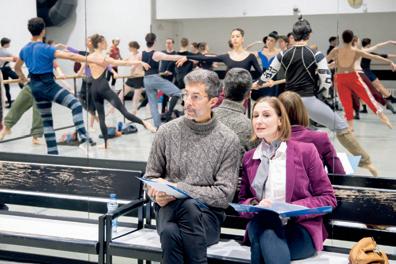
in 1999. It was in the 2008-2009 season that she received the Dimitrije Parlić Award for extremely successful artistic and technical interpretation, while she is also a recipient of numerous other awards. However, she is particularly proud of the fact that she participated in the prestigious September 2009 gala festival ‘Stars of the 21st Century’, at Paris’s Théâtre des Champs-Élysées.
“When I first performed the role of Aurora in Sleeping Beauty, which was a really huge success, I was called by famous ballerina [and a former predecessor in her current position] Lidija Pilipenko (1938-2020), who said: “Ana, remember one thing forever. After this great success, you know, everything you do will be forgiven, with the exception of success!” She told me that at the right time, but that doesn’t mean we shouldn’t be successful. And whenever some hullabaloo was raised about something I was doing, I knew that I was on the right track.”
When you start dancing ballet at the age of nine and never stop, as is the case in Ana’s life, you don’t have time to think about anything other than not taking a break and not getting injured. You live from premiere to premiere, from show to show
“I had the good fortune to dance until the age of 46, which isn’t common in our business. That was quite a long time for such difficult and physically demanding roles that I performed. Somewhere towards the end of my career, I realised that I had to prepare myself to depart from the stage. Because it’s like a part of you dies when you stop dancing. You get up one morning and nothing matters anymore –neither the fact that you’ve been doing it since you were nine, nor whether your leg hurts, nor whether you’re going to get injured... There’s simply no longer a stage, which is everything to an artist – both agony and catharsis. And now you have to continue living with it, or rather without it. I stopped dancing during the time of the covid pandemic, and very quick-
ly afterwards I was called by Mr Goncić, who offered me the position of director of the Ballet. It was such that I didn’t even have time to consider what I would do in my retirement.”
She didn’t have any kind of formal farewell performance, but she remem-
It’s difficult after a great career, during which you’re in the focus as an artist, to stand in front of 110 dancers and place yourself in the shadow, but in the service of all of them

bers that her last time on the stage of the National Theatre was playing Giselle in the eponymous ballet, and that everything was somehow solemn and strange. It was a packed hall and many of her colleagues attended the show, and she danced as if floating. And everyone approached her at the end, congratulating her and expressing wonder at how it was possible that she danced so well when she was almost 46 years old!
Ana emerged as a ballerina during the tough times of the 1990s, when she would constantly hear about the “golden age” of the Belgrade ballet, which was already history before she was even born. She nurtures great respect for all those names that have marked the 100-year history of the Belgrade Ballet, some of whom she knew and some of whom she worked with.
“I admire many of them and strived to give me all not only to promote myself, but rather also to preserve that shining tradition of our Ballet, with us having celebrated its centennial in March 2023. It’s difficult after a great career, during which you’re in the focus as an artist, to stand in front of 110 dancers and place yourself in the shadow, but in the service of all of them. I’m aware that every period has its own heroes, which is why I try to do everything in my power to ensure that the Ballet doesn’t wither or give up on major tasks and challenges. No matter how hard the times are.”
Ana performed many shows of the classical repertoire for 17 or 18 years, but the absolute record holder when it comes to contemporary shows is the ballet Who’s Singin’ Over There, to the music of Vojislav Voki Kostić (1931-2010) and with the phenomenal choreography of Zagreb-based guest choreographer Staša Zurovac. It has been performed for a full 20 years. And Ana was even in the lineup for the premiere performance.
“I danced in the role of Mlada, but not too often, because it is a modern ballet and I was always in the classical repertoire more. But today, at the helm of the Ballet company, I try to

achieve the required and best harmony between the traditional, classical form of ballet and contemporary tendencies in this branch of the arts. Over these three years, we have renewed the ensemble with around twenty dancers, and in December we had nine performances in two weeks of our favourite show, The Nutcracker, tickets for which sold out in just a few hours.”
As artistic director of the Ballet, she is very proud of the regional cooperation that she’s achieved over recent years. They performed Who’s Singin’ Over There at the Croatian National Theatre in Zagreb and received a standing ovation. She believes that the image of the importance of the “golden age of the Belgrade ballet” would be unimaginable without joint projects and constant guest performances on the stages of the former Yugoslavia.
“I’m very happy that last season, on St. Valentine’s Day, or St. Tryphon’s Day, we held a ballet evening that included the participation of one couple from each of the national hous-
es of the former Yugoslav republics. That was a magnificent concert that I hope we will repeat on the stage of our National Theatre on 8th March this year. I’m also proud that we, as a ballet company, have signed a memorandum with the Lujo Davičo ballet school from Belgrade and the Dimitrije Parlić ballet school from Pančevo. This means that their students
Whenever some hullabaloo was raised about something I was doing, I knew that I was on the right track
will participate in our ballets as and w hen needed, and the best among them will be employed at our house tomorrow. My desire is for us to create such conditions that these young artists would want to stay here, and not to head abroad. On the other hand, I’m satisfied that young dancers are coming to us from very good companies and very good schools world-
wide, because we have a deficit when it comes to men. We have Russians, Ukrainians, three Japanese dancers, Italians, Australians et al. They are interested in the repertoire that’s both classical and neoclassical, which provides them with the opportunity to train and mature well.”
This artist is known as a director who follows every show, monitors every dancer and tries to give everyone a chance, to encourage them to do the best that they can.
Ana returned to dancing after giving birth when her daughter Nina was just six months old. That daughter is today a third-year student at the Faculty of Biology. She likes the theatre and sometimes works there as an usher, but she is far from any thought of dealing with the arts. Ana’s husband, Dušan Pešić, is a technology expert. She says that, without his support and understanding, she wouldn’t have achieved everything that she is today proud of and to which she has dedicated, and continues to dedicate, a large part of her life.
Netflix achieved a record-breaking milestone in the fourth quarter of 2024, gaining 19 million new subscribers and pushing its global user base to 302 million. This growth marks the most successful year in the company’s history, further solidifying its dominance in the streaming industry.

For the first time, the number of pubs in England and Wales has fallen below 39,000, with 412 closing permanently or being repurposed in 2024 due to rising costs and cautious spending. Government data reported by The Guardian shows the total now stands at 38,989, with many pubs converted into homes, offices, or nurseries. On average, over 34 pubs shut down monthly, marking the steepest decline since 2021, when the sector struggled with the pandemic and energy price hikes.

The European Union produced 1.496 billion liters of sparkling wine in 2023, an 8% drop from 1.624 billion liters in 2022, according to Eurostat. Italy, France, and Germany led production, followed by Spain and Portugal. Exports to non-EU countries also fell by 8%, from 649 million liters in 2022 to 600 million liters in 2023, though export levels remained higher than in earlier years.

Real Madrid has made history as the first football club to report over €1 billion in revenue in a single season, surpassing Manchester City’s €831 million earnings from 2022-23. The milestone was achieved alongside a triumphant 2023-24 season, where the club secured three trophies, including the Spanish league title and the Champions League, and boosted ticket revenue following the renovation of the Santiago Bernabéu Stadium.

In 2023, the average trust level among individuals aged 16 and over in the EU was rated 5.8 on a scale from 0 (no trust) to 10 (complete trust), according to Eurostat. Trust varied by country, from 7.3 in Finland to 3.6 in Cyprus. Young people aged 16-29 reported the highest levels of trust in 15 EU countries, with Romania leading at 7.7. In contrast, those aged 65+ expressed the highest trust levels in five countries, notably Finland (7.5). Only Denmark (5.7) and Slovenia (4.7) saw the 30-64 age group leading in trust.

Mark Zuckerberg, CEO and founder of Meta, announced that Facebook is discontinuing its long-standing fact-checking system. Along with this, Meta will implement significant changes to its content moderation policies, reversing prior reductions in political content in user feeds. The changes, described as a response to recent U.S. presidential elections as a “cultural turning point,” will impact Facebook, Instagram, and Threads, each with billions of users worldwide.

Show your love this 14th February with our carefully curated selection of romantic Valentine’s Day gifts, from classic roses to charming keepsakes

Fill the room with juicy pomegranate and smoky guaiac wood carried on the warm evening air













Valeria 18ct yellow goldplated stainless-steel and cubic zirconia watch and bracelet set





















Cherry Hamptons Hobo leather shoulder bag








The snug fit, soft uppers and springy cushioning guarantee the best possible comfort indoors and out








The “Love in Bloom” porcelain vase features an ultra-realistic human heart design, blending provocation, humor, and absurdity





Fragrance is pure sensuality, a sublime marriage of elegance and spectacular like a grand opera

















Spoil yourself and the ones you love with this elegant box of luxurious chocolates

This is the bestselling men’s fragrance in the history of the House of Creed



Cut from a cotton jersey with long sleeves and a classic crew-neck collar


6 – 17 March, Belgrade

Belgrade’s cultural calendar will once again be enlivened by the Belgrade Irish Festival (BIF). For the 13th year in a row, this festival brings Serbian audiences the best of contemporary Irish culture—film, theatre, music, literature, and visual arts. This year, BIF welcomes two major Irish stars: Neil Jordan, the celebrated film director, screenwriter, and novelist, and Mary Coughlan, Ireland’s greatest jazz singer, an artist celebrating four decades on the global stage.
28 February – mts Hall
Queen Symphonic is a big symphonic rock spectacle that presents and celebrates the greatest hits of the Queen group and includes the choir and orchestra of the opera snp from Novi Sad, the Novi Sad big band, rock band and four fantastic vocalists!

6 Februry - Bitefartcafe
The Vasil Hadžimanov Band is set to dazzle audiences with their signature blend of jazz, funk, and Balkan-inspired rhythms in an electrifying live performance. Renowned for their innovative sound and exceptional artistry, the band promises an unforgettable evening of musical brilliance. Don’t miss the chance to experience one of Serbia’s most celebrated bands live!

14 February – Dorćol Platz

The Government of Jamaica has officially declared February as Reggae Month. Then events are held around the world in honor of the icon of this genre, Bob Marley, and organized by the Odličan Hrčak concert agency, reggae month in Belgrade will be celebrated on 14 February with the inimitable positive energy of the first reggae band in the region - Del Arno Banda.

ALEXEI NAVALNY
Patriot is the exhilarating life story of one of the most fearless and inspiring figures of our time, who became a beacon to millions and the sole political threat to Vladimir Putin. This is Alexei Navalny’s life in his own words: his Soviet childhood, political awakening, his marriage and beloved family, his total commitment to taking on a corrupt regime and his enduring love of Russia and its people.
Rose Cartwright
In this revolutionary book, Rose Cartwright reveals how the failure of the mental health system to cure her OCD led her to radical action. While she explored her trauma through a series of mind-bending psychedelic trips, she began to interrogate our dominant medical paradigm.



Craig Brown
She made John Lennon blush and Marlon Brando clam up. She cold-shouldered Princess Diana and humiliated Elizabeth Taylor. Andy Warhol photographed her. Jack Nicholson offered her cocaine. Gore Vidal revered her. John Fowles hoped to keep her as his sex-slave. Dudley Moore propositioned her. Francis Bacon heckled her.
Marcus du Sautoy
Oxford mathematician Marcus du Sautoy interrogates his passion for shortcuts in this fresh and fascinating guide. After all, shortcuts have enabled so much of human progress, whether in constructing the first cities around the Euphrates 5,000 years ago, using calculus to determine the scale of the universe or in writing today’s algorithms that help us find a new life partner.


Joe Navarro
Be Exceptional is the culmination of Joe Navarro’s decades spent analysing human behaviour, conducting more than 10,000 interviews in the field, and making highstakes behavioural assessments. Drawing upon case studies from history, compelling first-hand accounts from Navarro’s FBI career, and cutting-edge science on nonverbal communication and persuasion, this is a new type of leadership book, one that will have the power to transform for years to come.

Larissa Kostoff
Philanthropy Revolution is the handbook all fundraisers, nonprofits and donors should be using to create trusting, authentic partnerships that can be sustained long-term. Philanthropy is changing dramatically and it needs nothing short of an intervention to succeed. Lisa Greer shows us how to ‘save giving’ by providing a clear path to success. With her help, the nonprofit world will see its donors energized, its charities better supported and its impact increased.

21/1/2025
The Embassy of Japan in Serbia and the Japan Foundation, in collaboration with the Museum of Applied Arts in Belgrade, present the travelling exhibition “Beautiful Handicrafts of the Tohoku Region, Japan.” Hosted by Japanese Ambassador Akira Imamura, the exhibition offers a glimpse into the rich artisanal traditions of Tohoku, showcasing exquisite craftsmanship and cultural heritage. Open to visitors until February 8, 2025, the event celebrates the artistry and dedication of Japanese artisans.
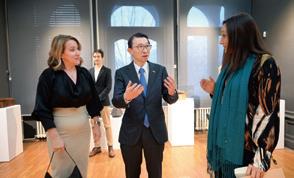
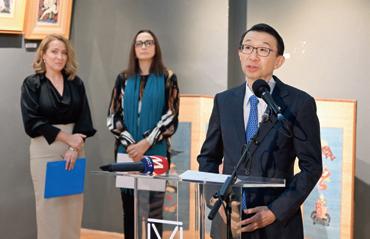
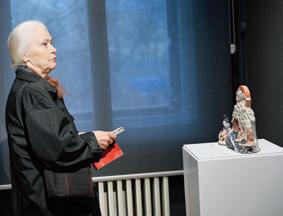


20/1/2025
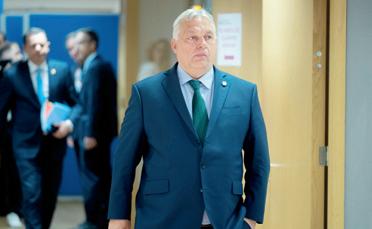
During his visit to Serbia, Hungarian Prime Minister Viktor Orban emphasised the joint goal of Hungary and Serbia to make energy accessible to citizens and businesses after meeting with Serbian President Aleksandar Vučić. “We aim to make energy affordable for our people and companies. That’s what we worked on today in Belgrade with President Vučić. Thank you for the hospitality,” Orban shared on social media. Hungarian Foreign Minister Péter Szijjártó also highlighted the mutual commitment to the safe operation of TurkStream, stating that Hungary and Serbia’s energy security are interdependent.

28/1/2025
“The year 2025 not only marks 80 years since the defeat of the evil of that time, but it also celebrates 250 years of Jewish life in Sweden,” stated Ambassador Charlotte Sammelin at the International Holocaust Remembrance Day conference in Belgrade. Organised by Terraforming in cooperation with the Jewish Youth Club and the JCB Memorial Committee at the Jewish Cultural Centre, the event paid tribute to the six million Jews and millions of others, including the Roma, who perished in the Holocaust while also recognising the enduring contributions of Jewish communities to cultural heritage.

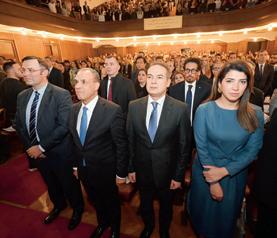
22/1/2025
During his official visit to Belgrade, Badr Abdelatty, Egypt’s Minister of Foreign Affairs, Immigration, and Issues of Egyptians in t he Diaspora, delivered a lecture titled “Egypt and Serbia in a Changing World” at the Kolarac Foundation. Hosted by the Embassy of Egypt, the event highlighted the evolving relationship between the two nations, addressing global challenges and opportunities for enhanced cooperation in a rapidly shifting geopolitical landscape.

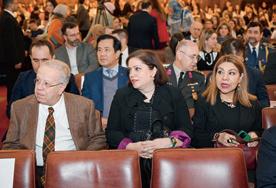
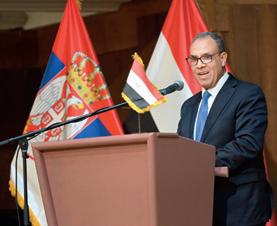
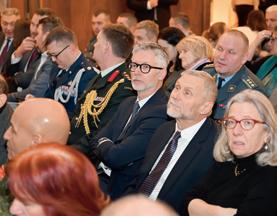
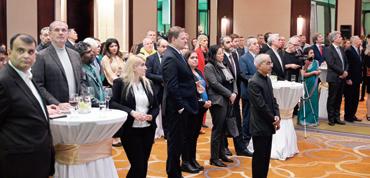




24/1/2025
The Embassy of India in Serbia, led by Ambassador Shubhdarshini Tripathi, hosted a grand reception at the Hyatt Hotel in Belgrade to mark India’s Republic Day. The event brought together diplomats, government officials, business leaders, and friends of India to celebrate the nation’s rich history and democratic values. Guests enjoyed a showcase of Indian culture, including traditional performances and cuisine, highlighting the deepening ties between India and Serbia.
28/1/2025
The seventh Chinese Lantern Festival brings dazzling illuminated installations to Belgrade and Novi Sad, continuing Serbia’s tradition of officially welcoming the Chinese New Year. Organised by the Balkanopolis Center for Modern Tradition, the festival takes place at Sava Promenade in front of Galerija in Belgrade and Liman Park in Novi Sad until February 9. The initiative is led by Serbian artist Slobodan Trkulja, who is known for his efforts to foster cultural exchange between China and Serbia.



